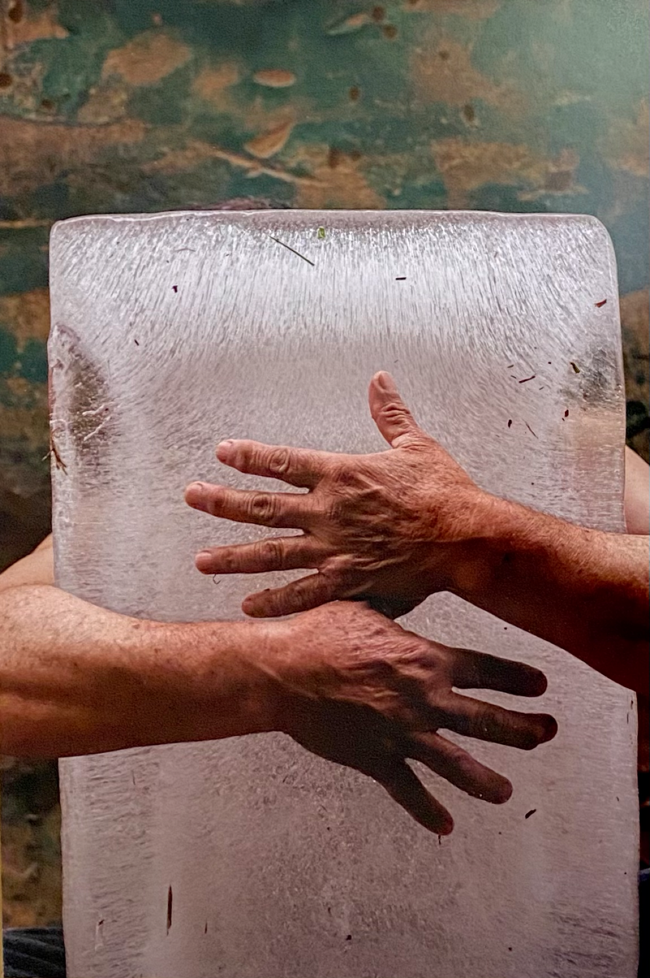NEWS
Find here the latest informations about my activities
22 October 2025 – L’umano è Mobile
Martin Roemers presented at Kunsthal Rotterdam is a man of his time: a traveler, an observer, a photographer captivated by modern life. A truly mobile man, he has traveled around the world to capture the fascinating relationship between humans and their automobiles. The result is a remarkable collection of portraits that reveal as much about people as they do about their machines. From the shores of the North Sea to the streets of Senegal, from the avenues of Bengaluru to the highways of California, Roemers shows us how deeply inprinted the automobile has become in human identity. Each photograph is taken in front of a simple white backdrop, sometimes stretched between trees, sometimes hung from a balcony, isolating the subject(s) from the noise of their environment. Against this neutral canvas, the person(s) and the vehicle stand together, like partners in a shared story. We meet individuals by name, along with their car or motorbike, and often a glimpse of their daily activity or emotional connection to it. What emerges is a universal truth: the car is more than a means of transportation. It is an extension of the self, a symbol of independence, pride, or aspiration. Whether it is a posh Mercedes or a weathered old Peugeot patched together from spare parts, the bond between human and machine is strong. In Roemers’ large-scale photographs, we see not just cars and their owners, but a portrait of the modern world, where mobility defines identity, and where every vehicle becomes a mirror reflecting the person behind the wheel. From the person to l’umano mobile, homo mobilis.




18 October 2025 – Koppen kopen?
I discovered the photography of Wouter Koppen by chance, at a small exhibition of his work in the Warmond Oude Raadhuis. Koppen describes himself as a ‘photographer of the moment’, and in that sense, his approach resonates closely with my own. It’s about walking with your eyes wide open, allowing yourself to be amazed by what you see, whether a landscape, an artifact, or an imperceptible detail that others might overlook. I was particularly captivated by his pictures of an empty Normandy coast, his abstracts, and the intricate details in his USA photographs. Walking with him and discovering the world through his eyes was a true pleasure for the senses and a source of inspiration.



9 October 2025 – Aller Simple For Leroy
In a post on Catherine Leroy dated 24 August 2021, I was writing “the next step would be a book presenting and praising her work”. October 2025, my wish has come true. The publisher Atelier EXB just released a book titled “Catherine Leroy One-Way Ticket to Vietnam 1966–1968” covering mainly the three years Catherine Leroy spent in Vietnam and her two visits at the end of the war in 1975 and after in 1980. She was 21 years old when she flew to Saigon with a one-way ticket showing her determination to become a photo journalist at all cost. This book of 240 pages covers not only extensively her incredible photographs in combat but also the woman who took them through her letters. A fantastic tribute to an exceptional woman.
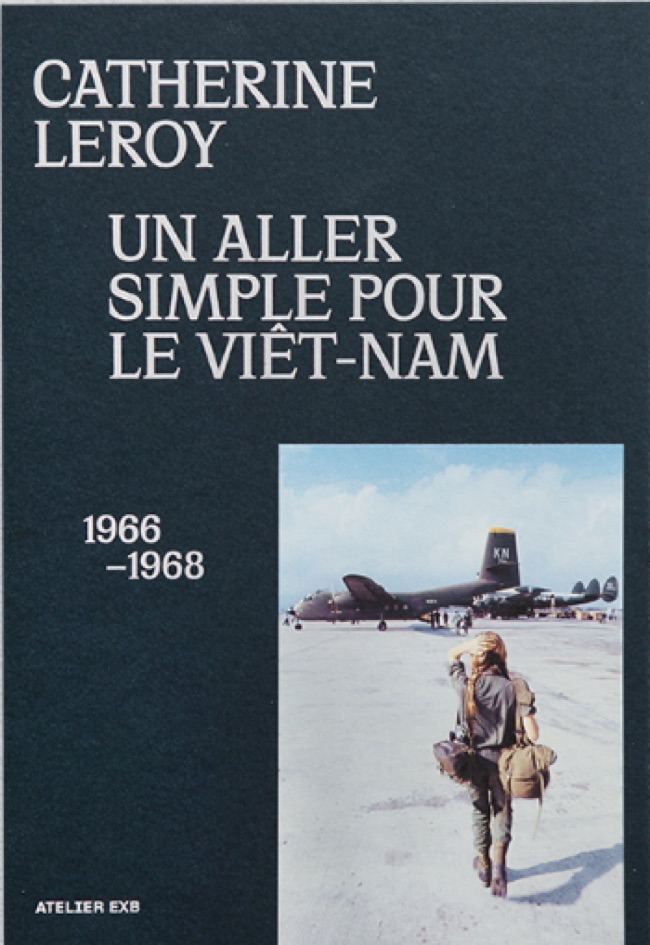
25 September 2025 – Le Bal of Others
I went to Le Bal in good faith, encouraged by my two previous experiences there: beautiful exhibition space and wonderful restaurant near place Clichy. The photographer, Donna Gottschalk, was unknown to me, and the title of the exhibition, We Others, seemed more enigmatic than revealing. I expected to discover New York in the 1970s. The promise was kept, with one important clarification that quickly became apparent: We Others refers to the lesbian movement of the early 1970s in New York City. Donna Gottschalk photographed her friends, her lovers, her surroundings, even her parents. While historically significant, especially in today’s context, I cannot say the photographs resonated with me deeply on an artistic level and that I connected to them. Still, the visit was worthwhile, as it opened a window onto a life and a struggle I had not previously been exposed to… and their restaurant was closed.
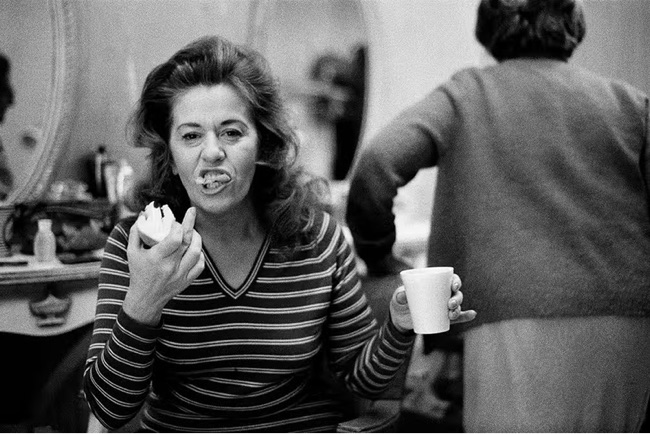



23 September 2025 – Padam, Padam, Paname
I pushed open the doors of the Roger-Viollet Gallery without really knowing what to expect. The gallery has recently set out to become more visible to the public, drawing on its vast photographic archive to propose small-scale exhibitions on its walls, surrounded by its famous boxes of treasures, meticulously classified by theme and subject.
This time, the exhibition was about… Paris. On display were fascinating high-quality late-19th-century and early 20th-century photographs and collages by photographers less familiar to me, such as Maurice-Louis Branger, Charles Marville, and Jacques Boyer. Although the name Neurdein (the brothers) was new to me, their iconic photograph of the locomotive hanging out of the façade of Gare Montparnasse is instantly recognizable, and here, a beautiful new print was available for purchase.
There were also intriguing collages by 13 Bis (Treize Bis). I’m not sure how they connect to the gallery, though I suspect he may have used Roger-Viollet material to create them. Perhaps I’ll pay closer attention on my next visit.

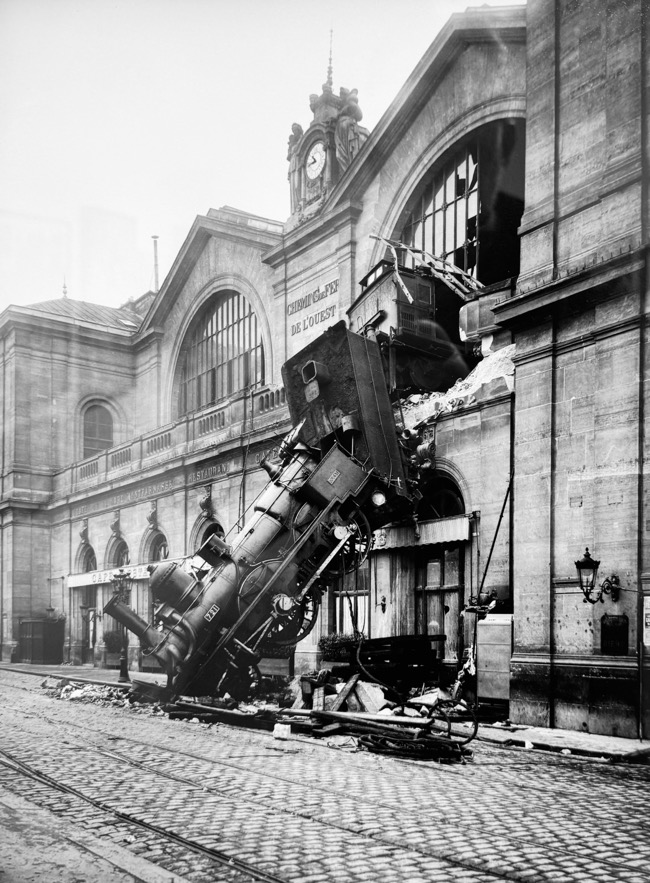



23 September 2025 – Jubilation with Doisneau
There is a sense of jubilation in the photographs of Robert Doisneau, something that takes us back to the innocence of childhood, to what stays in memory like years of carefree living. The Musée Maillol is presenting a major exhibition under the name “Instants” (“Instants donnés” in French, but they don’t seem to be given in English) of many of his well-known photographs but also some of his lesser-known works, many of them centered on childhood. So let us be carried back to the wooden benches of primary school, with our smocks and inkwells, to that childhood lost long ago yet still so close in spirit. The audience, mostly sixty-somethings, young retirees, easily find themselves reflected in these images, for this was their childhood, just as it was mine. So let us not spoil our happiness: let us be carried away, “en sortant de l’école” with Prévert or with Brassens’ “la maîtresse d’école”, the one with “advanced methods”. One picture stayed with me: Un Guetteur, or A Lookout, a sobering reminder of the passage of time and of how much the world has changed, when thinking of the lookouts in today’s banlieues.

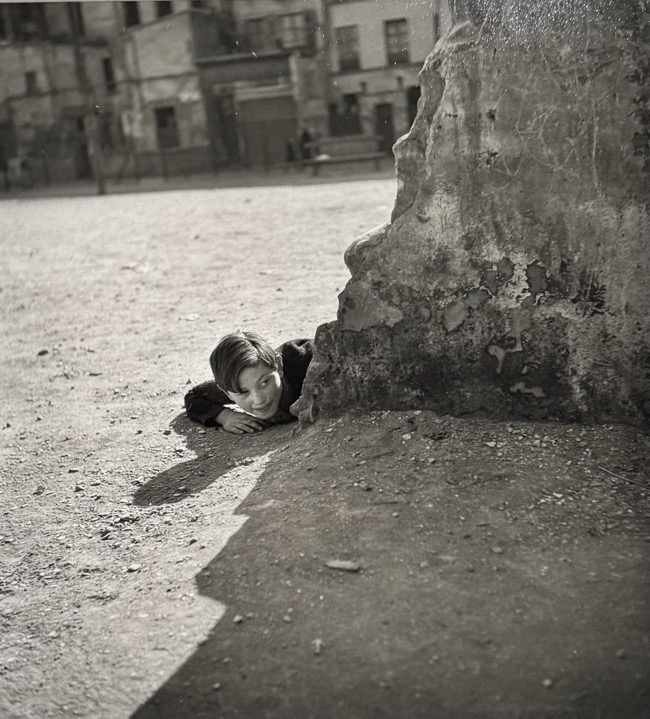





22 September 2025 – Kenna Vault
The images of Michael Kenna are haunting, with their delicate balance of light and darkness, their empty spaces and quiet horizons that invite the viewer into a meditative state. The Musée Guimet is presenting a beautiful exhibition of his Asian works, with a particular focus on his unique way of working: patient, contemplative, and deeply connected to the spirit of each place. Experiencing his photographs feels to me, in a way, like holding a yin yoga pose: still, introspective, and profoundly calming. Kenna maintains control over the entire process, from capturing the photograph to developing the film and enlarging the prints, even adjusting the light with delicate touches of ink. I was particularly drawn to his Japanese photographs, perhaps because they resonate with my own experiences in Japan, a profound connection with the land, the nature, the people, and the culture. If there is one exhibition to see in Paris, this is it, and the Musée Guimet provides the perfect setting, a jewel box, a vault, for his treasures.

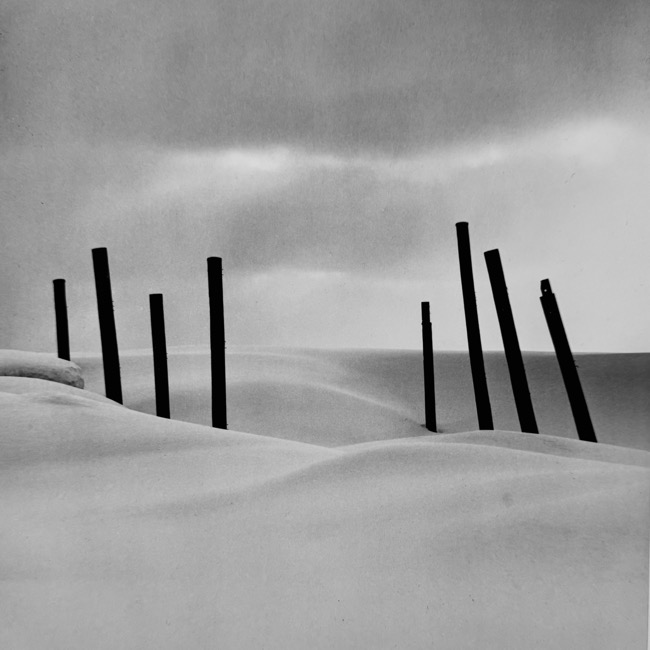
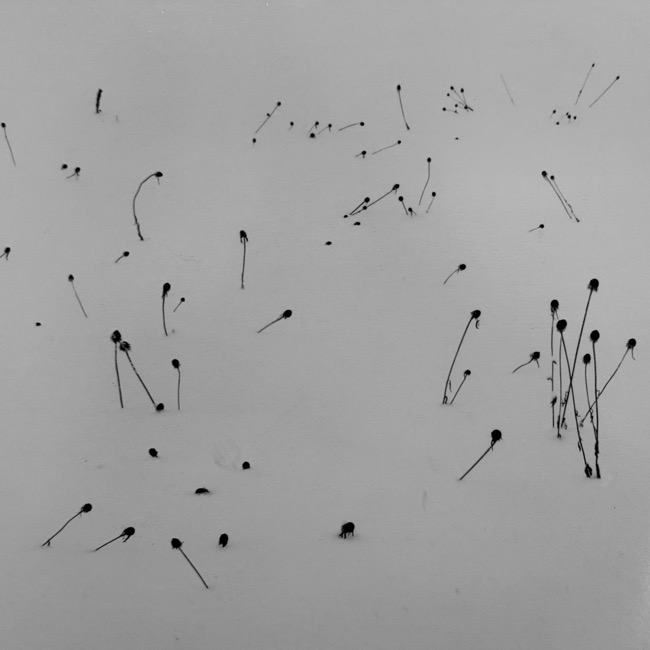



20 September 2025 – Hungry Eye – Diversity in the spotlight
My third visit in a row to the extraordinary first edition of the Hungry Eye Fair in Amsterdam focused on three artists, although I could have spent more time reporting on many more.
Olga Karlovac, whom I had already seen at Haute Photographie 2024, presented her clairs-obscurs, fleeting shadows, under rain or sun, a true pleasure for the eyes.
Tomoko Nagakawa was a new discovery for me. A Japanese artist based in the UK, his minimalist photographs are haunting in their quiet intensity.
And then there was Françoise V, exhibiting here for the first time. Born in Botswana and based in Cape Town, South Africa, she was named after Françoise Hardy, her father’s favorite singer. Her images radiate with sunlight and warmth, her passion for the wonders of Africa shining through. They communicate pure joy and happiness. I was especially struck by her portraits of Nguni cows, and utterly fell in love by Gentle Grace.




19 September 2025 – Hungry Eye with a Bang
More women power was present at the Hungry Eye Fair with Nancy Poeran, Louise van den Heuvel, and Marie van der Heijden. I first discovered Nancy Poeran at an earlier edition of Haute Photographie, where she used AI to transform human bodies into twirling, dancing forms of light and shadow. This time, she has taken her exploration further with a delicate series, Animus Anima, part flower, part human form, pleasing to the eye and stunning in its sensitivity.
Louise van den Heuvel presented more provocative portraits of women, each with a playful wink. I particularly enjoyed the image of an elderly lady warning people not to disturb her important gardening duties.
And finally, I found myself once again in front of the striking photographs of Marie van der Heijden, whose work I had first encountered at the Affordable Art Fair in 2021, still as captivating now as it was then.




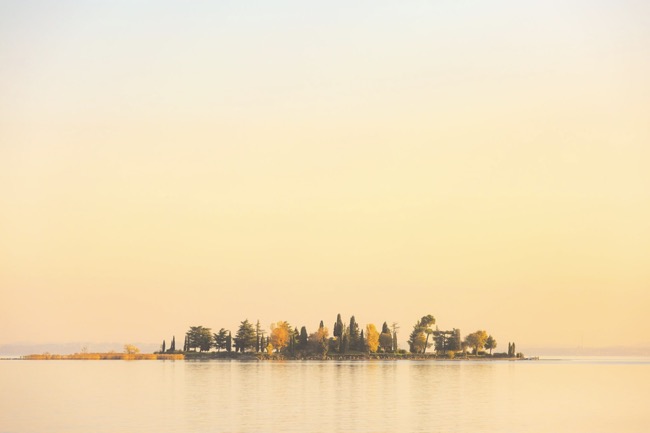

17 September 2025 – Not Quiet on the Eastern Front
Once again, Roy Kahmann has made headlines and stirred the Dutch, if not international, photography scene with his first Hungry Eye Fair in Amsterdam. More than a simple rebranding of his high-quality Haute Photographie exhibitions, this feels like a new beginning: a much larger space, over 70 artists, and five days of high quality photography gathered under one roof.
But why the enigmatic title, echoing Erich Maria Remarque’s book? Perhaps because of the impressive presence of artists from Eastern Europe at this first edition, every one of them women. Among them, familiar trusted names: Anna Riabova with her marvelous, enchanting natures mortes, and Inna Oleff, whose delicate photographs of backlit poppies I found particularly moving.
They were joined by a new discovery for me, their friend Anna Glazounova. Her work carries a deep sensitivity, depicting the absence of human presence in the spaces she photographs: stunning images that resonated strongly with my own sensibilities. Our conversation only deepened that connection, a reminder that art allows people to communicate beyond words and across cultures.
Moving further, I spent quite some time speaking with two Ukrainian artists: Irina Dzhul, with her dreamy, soulful portraits and situations, creating her own world, and Alina Araslanova. At first, I passed by Alina’s work without stopping, but something drew me back. Our conversation shed new light on her remarkable project to strengthen communication with her teenage daughter, tormented by adolescence and the psychological toll of war and exile. Using colorful sheets of paper, she created a body of work that is not only visually striking but also profoundly meaningful, reaching far beyond the images themselves.






13 September 2025 – De bonne Guerre Daguerre
Fotoclub Daguerre recently celebrated its 75th anniversary with an exhibition in the Kerkdorp of Leiderdorp. As a fellow club, Fotoclub X65 from Noordwijk paid a visit to the event. It was a delightful assembly of photographs around the old church, some simply good, others truly outstanding. As so often with photo clubs, the exhibition reflected the diversity of its members and their talents. I was particularly drawn to one image Fotografe in Brussel, taken near La Grand Place in Brussels by Pieter Sleeboom, which loosely echoed the spirit of a Doisneau photograph. A passing man gazes at a woman taking a picture, her leg exposed, adding a playful touch of humor to the scene. Another work, Kyoto Station by Dick Meiners, brought back vivid memories of my own visits to that remarkable city. The Broken Egg by Annemiek Ebbing was intriguing, while the shot of a field in Summer by Agaat van der Oord carried a calming simplicity. A nice afternoon, looking at nice pictures, all de bonne guerre, fair game.
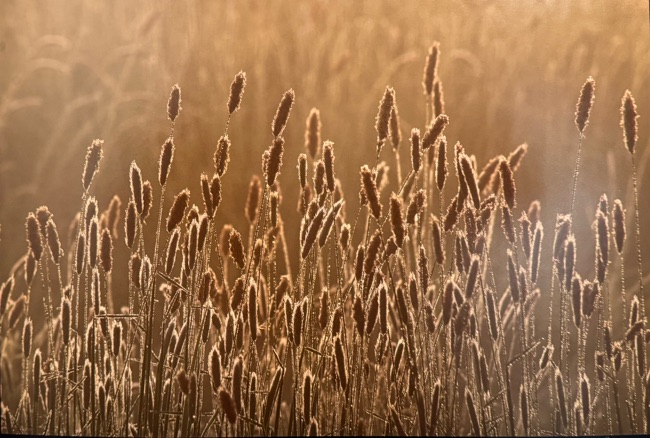



26 August 2025 – Coup de ❤️ for Arif Surkha
It was one of those unexpected gifts life offers. We were wandering along Baker’s Lane in Leh, planning to climb up the hill to the Shanti Stupa, when an unpretentious little store caught our eye, a place selling pashminas, but not like the usual shops for tourists. Curious, we stepped inside and, to our surprise, encountered Vikram, a man we had briefly met just a few minutes earlier. He introduced me to Arif Surkha, the owner of the house… and, as it turned out, quite a photographer. I lingered with him, speaking about life, politics, and photography, while he showed me some of his striking work. It was an instant coup de ❤️. Arif has the romantic path of an adventurer, navigating between cultures, and his photographs reflect this worldview: sensitive, layered, and deeply human, infused with a passion for his Cashmere roots. What began as a chance encounter unfolded into two hours of conversation about odds and ends. Even as we spoke, I knew I wanted to write this entry, to pay homage to his talent. Arif has his own portfolio featured on Vogue Italia and an active Instagram presence. I fell in love with several of his photographs, and even purchased one. Arif is a busy man, traveling back and forth between Leh, Singapore, and Poland. I truly hope he will continue to cultivate his photographic gift and share more of his work for us to admire.




13 August 2025 – Mirzatopia
Beirut is one of these places on Earth doomed to collapse over a longer period of time. From “the Paris of the Middle East” to the derelict place it has become after a civil war of 15 years, multiple invasions of their Southern neighbour, the rise of a friendly group of bearded men, a massive explosion and other small details. Beirutopia is an intriguing presentation by Lebanese photographer Randa Mirza, exploring Beirut’s transformation over the last two decades. Grouped in eight series, the exhibition mixes truth and fiction to reflect on violence, loss, and resilience as experienced by the inhabitants of that city. In “Cycle of Violence”, we are confronted to the city’s ongoing conflicts, in “Rise & Fall”, to Lebanon’s economic collapse and the fading myth of Beirut as a cosmopolitan world city. Randa Mirza shows us her Beirut with abandoned rooms and places, the remains of the harbour explosion, tourists in a parallel universe parading in front of militia men and explosions, and real estate paradise-like pictures of the Beirut that could have been. All in all, a sobering visit of the capital of Lebanon.




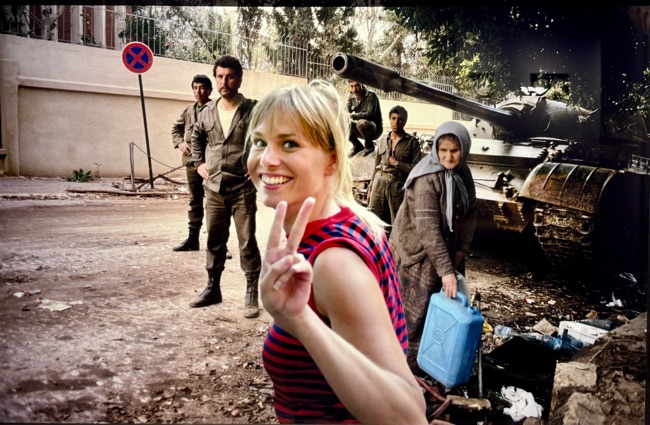
13 August 2025 – The Butterfly Effect
Lucas Foglia had an inspired and poignant concept for his series Constant Bloom, presented at the Fotomuseum Den Haag: to follow the migration of Painted Lady butterflies and draw a parallel with the migration of people from Africa to Europe. For millions of years, these butterflies have traveled the same routes in search of wildflowers to forage, on a journey essential to the survival of their species. Similarly, human migrants leave their homelands to seek safety and a better life in Europe, enduring immense hardships along the way. In Lucas Foglia’s work, the butterfly becomes a powerful symbol of these people’s resilience and hope. His photographs mix together images of the butterflies in transit, the landscapes they traverse, and the people they encounter, some of whom are also migrants on their own journeys. The result is a thought-provoking and deeply moving exhibition, blending natural history with human history, and offering a meditation on migration, survival, and the way all living beings are interconnected.






09 August 2025 – Go West Young Man!
Far from the idyllic vision of the West portrayed in so many Hollywood movies, Richard Avedon’s series “in the American West (1979–1984)” beautifully presented at Fondation Henri Cartier-Bresson shows the real people living in the American West. Commissioned by the Amon Carter Museum in Fort Worth, Texas, Avedon spent years encountering, selecting and photographing ordinary people across 21 western states, mainly working-class, white, poor, men and women: drifters, oil field workers, miners, waitresses, prisoners, slaughterhouse workers, farmers. His portraits are all taken in daylight, against a plain white background, using an 8×10 large-format camera, showing all the details and emphasising on the faces of his models, creating an incredible encounter with their physical presence, expressions, and details, piercing eyes, wrinkles, dirt, scars, blood, oil. The result of this monumental series of 125 portraits presents a true portrait of the people living there, leaving us unsettled and moved. I was particularly impressed by the youth of some of the models, their defiant look, the toughness in their eyes. I left with a message to Avedon, beyond the grave, to seek out these persons today and take photographs of them 40 years later. What has happened to them in the Trump era? I am afraid of the answer.
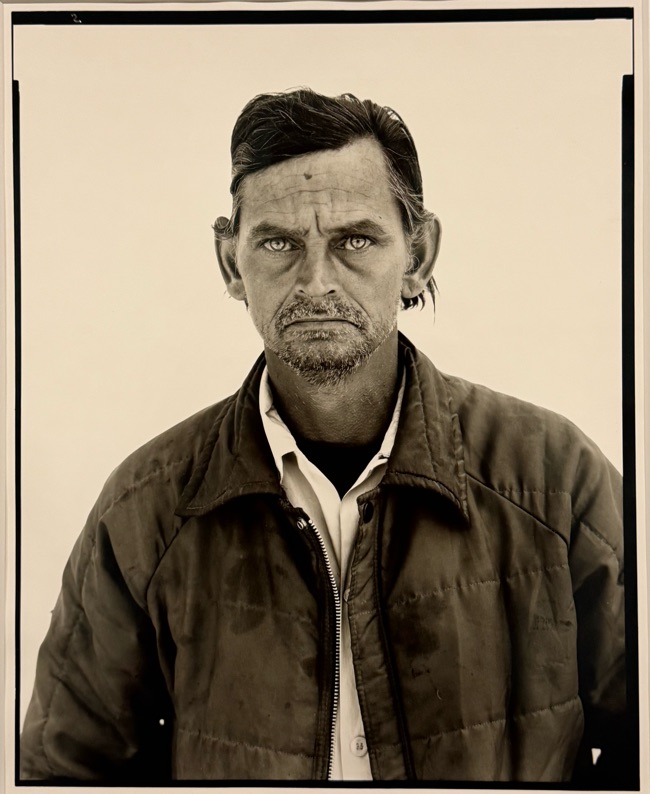


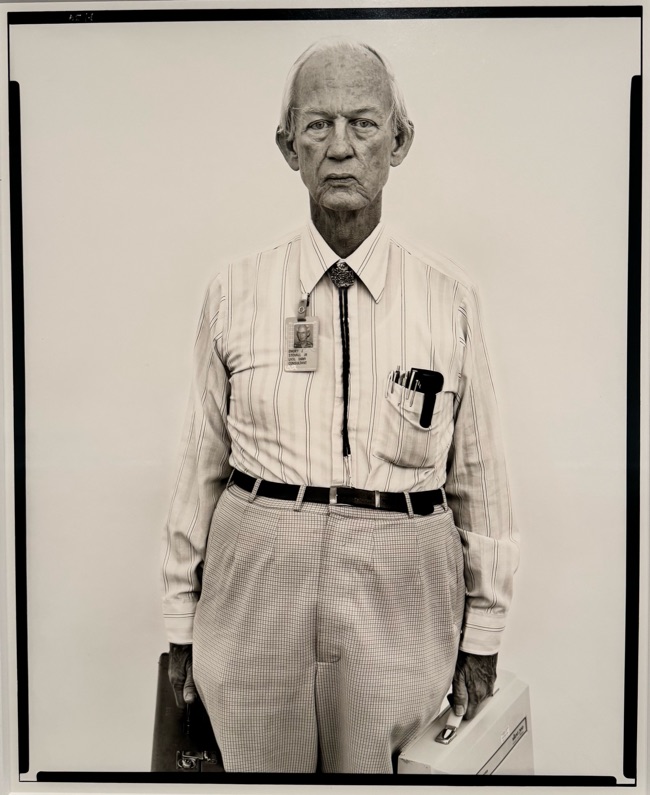


09 August 2025 – Sage comme une Image
Sage comme une image, maybe loosely translated to “the picture of innocence”, that’s how a young woman at the turn of the 1970s was expected to be. Marie-Laure de Decker was anything but. She dreamed of becoming a photojournalist, and at the time, the Vietnam War was the place to be. So she went, and she conquered.
Following in the footsteps of Robert Capa, Gilles Caron, Don McCullin, and other great photojournalists before her, de Decker took her own unique path. Her photography is profoundly humane. While many of her (mostly male) contemporaries sought out raw and shocking images of war, she turned her lens toward the dignity, resilience, and vulnerability of those living through it. From the battlefields of Vietnam to the realities of apartheid in South Africa, from Pinochet’s Chile to Chad and Yemen, her work captures the lived experience behind the violence, the breaks between battles, the grief, the defiant gaze of soldiers. In that sensitivity, she reminds me of the pictures of Eddy van Wessel, whose work about Ukraine I recently encountered in Hilversum. The Maison Européenne de la Photographie has chosen to honor figures like Marie-Laure de Decker, beginning with a major retrospective of her work, titled The Image as Engagement. Her self-portraits with a bold head or with a helmet in a jet fighter greet us and invite us to step into her world, definitely not a world of innocence.

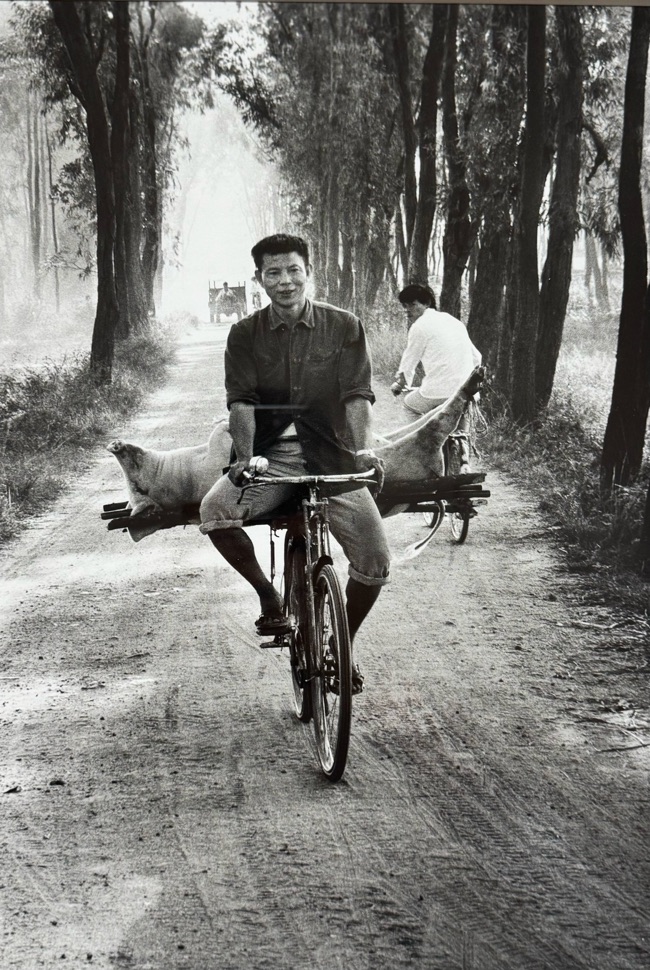





08 August 2025 – Lala Land
As so often, it is happenstance that leads to new discoveries. In this case, while walking along the Hôtel de Ville of Paris, I stumbled upon the work of a photographer I had never heard of before: Nicole Lala. The exhibition Nicole Lala Photographs Her City presents black-and-white images of Paris in the 1960s: simple, understated compositions capturing people in their daily routines, places now transformed, and details that have not changed. It is a series of remarkable glimpses into a Paris that once was. A bit of research revealed that her daughter Delphine Bonnet has only recently begun unveiling this hidden treasure, with a book soon to follow. Nicole Lala is still awaiting wider recognition, but I was already happily drawn into her invitation to visit for a while her own Lala Land.





02 August 2025 – Lost New York
A friend recently introduced me to a gem exhibited at the Jewish Museum in Amsterdam: Photo League: New York 1936–1951. This exhibition tells the story of a group of photographers who documented everyday life in New York City during that period. As pioneers of street photography, they used their cameras not only to capture the city’s vibrant street life but also as tools in the struggle for social change, often exploring Black and Jewish neighborhoods. The show features work by photographers like Berenice Abbott, Weegee, Lisette Model, and Walter Rosenblum, who later gained widespread fame. The images are stunning, showing shopkeepers, children playing in the streets, workers, men in suits and hats, and ladies in elegant dresses, scenes that have since vanished. A striking thought is that the ordinary people captured in these photographs have since lived full lives and are likely no longer with us, just like the New York they inhabited. It was a city where people met and talked in the streets, where neighbors stopped for a chat, and shopkeepers knew their customers by name, a sense of community now largely vanished.






31 July 2025 – Ukraine Up Close and Personal
After meeting Eddy van Wessel in Hilversum a couple of weeks ago, I felt compelled to visit his exhibition “War Stories. Ukraine Up Close” at the Military Museum in Soesterberg. There, a powerful selection of his most striking photographs is presented in a somber, heavy atmosphere, perfectly suited to the gravity of the scenes he captures. The powerful images by Eddy van Wessel depict a country and its people in ruins. Chaos is everywhere. Bodies lie scattered on the ground, buildings are torn open, yet life goes on. A man with a full shopping basket walks by, not even glancing at a body on the ground. Rescue efforts are underway as a rocket hits a home, trying to save the survivors. A man on a motorbike speeds past, indifferent to the flames around him, another man takes a smoke on a train track. Cars bear the scars of war. Children play. The Military Museum clearly embraces an educational mission, as shown by the many children present during the holiday season. However, the exhibition, though perhaps intentionally, falls short in that regard. The explanations for the photos are accessible only via QR codes and a smartphone, which makes it difficult for all visitors to fully grasp the context and meaning behind the powerful images on display.




30 July 2025 – Parallel Universe
I stepped into the parallel universe of Scarlett Hooft Graafland through a kind of portal. At first glance, the world she creates with her photographs feels familiar: the vast salt flats of Bolivia, the icy expanse of the Canadian Arctic, the huge baobabs of Madagascar, the remote stillness of Lapland. The people, too, seem recognizable, like the Bolivian women in traditional dress with signature bowler hats. But then, something feels slightly off. A group of blue people seeking shelter, a bright blue reindeer among a herd of 2,500, a traveler flying alongside an airplane, an igloo made of lemonade ice, a group of men and a camel hiding behind a pink cloak, details that tilt the scene into the surreal. As I learn more about her work, the picture sharpen. Scarlett does not just travel to remote locations to photograph landscapes, she immerses herself in them. After weeks of living within the community and absorbing its rhythms, she stages poetic, dreamlike scenes that blend local people, cultural symbols, and social themes. The vast desolate backdrops become her stage where the drama unfolds. To fully grasp the meaning behind her images, one must look beyond their visual poetry and read the accompanying texts. Only then does her surreal world truly come into focus. Panorama Mesdag in The Hague had the inspired idea to give her the space for a large display of her work, allowing us to discover this unique perspective in photography.





26 July 2025 – Lui c’est Lui
Mister Lui passed away. This is a sad day for me, and for Singapore photography.
A simple man, Lui Hock Seng quietly documented Singapore through decades of transformation. His work, mainly the black and white photos takein in the 1960’s and 70’s, was marked by well-composed frames and a stunning sensitivity to available light. A true craftsman. Yet he remained humble, returning each day to his job as a mechanic, with his passion for photography burning silently inside.
He lived a dedicated life: raising three children, working hard, providing for his family. In his later years, he worked as a cleaner. The kind of person that remains unseen by society. But fate had something else in store.
He happened to be cleaner at Singapore Press Holdings (SPH Media), where Venessa Lee, a journalist at The Straits Times, noticed him, and wrote an article about his hidden talent. I came across that article by chance. It moved me deeply, and that’s how a beautiful friendship began.
I reached out to purchase one of his photographs. He had never sold anything before, didn’t know how to price his work, or even if he could sell it. We met, I bought what I believe is his masterpiece, and I decided to help him get the recognition he quietly deserved.
His fortunes shifted when Ryan Chua of Objectifs Photography responded to me, and the rest is history, as told by Venessa in his obituary. Mister Lui got an exhibition at age 81, and eventually, a book was published “Passing Time”. His life remained simple, but his work was praised, preserved and will live on.
Mister Lui fell ill and has now passed. This is a sad day.


16 July 2025 – The Last Lone Wolf
An evening at Museum Hilversum with Dutch war photographer Eddy van Wessel marked the release of his new book, Ukraine. Van Wessel is a craftsman of the old school — patient, solitary, the last lone wolf of his sort, standing alongside legends like Don McCullin, Gilles Caron, and Catherine Leroy. He works entirely analog with his Leica cameras and HP5 film, producing deep, powerful black-and-white images that are raw, human, and deeply affecting. His photographs speak of women in despair, children forced to grow up too fast, and men broken by conflict — desperate, indifferent, exhausted, hollowed out. He shows us bombed-out villages and people drained of hope. He also shows the work of the doctors, firemen and rescuers who try to save what can be saved. Van Wessel doesn’t work with fixers or large crews. He goes alone, communicating with gestures, hands, and eyes. He earns trust not with words, but with presence. Through his lens, he does not just document war — he connects with people who endure it and honor them. His work is a profound lesson in humanity. His book is more than a collection. It is a visual symphony, raw and human, each image flowing like music, as he describes it. A profound testament to resilience and an incredible lesson in humanity.





14 June 2025 – FFN2025 RIP?
After a two-year absence, Foto Festival Naarden is back. I thoroughly enjoyed the 2019 edition, but 2021 left me underwhelmed (to be mild). And what about 2025? To be honest, my thoughts echo those of 2021 almost word for word: “I don’t know what it was… a lower scale display, some local photographers, the topics, the artists…”. Except now, I do know what it was: a festival assembled simply for the sake of having one—lacking depth, vision, and soul. The result? Just a handful of locations in the Vesting, each showing three or four photographs at most of little artistic or thematic impact. At this rate, it is hard to imagine a 2027 edition drawing enough attention to survive. It is a sobering observation because the venue remains magical and there are so many incredible photographers that remain to be discovered when given the right forum! Digging through, I managed to find some interesting discoveries: the display for the 100th anniversary of Leica, Jordi Huisman’s rear Windows and the Morocco pictures of Sabrina Charehbili stood out for me from the rest.


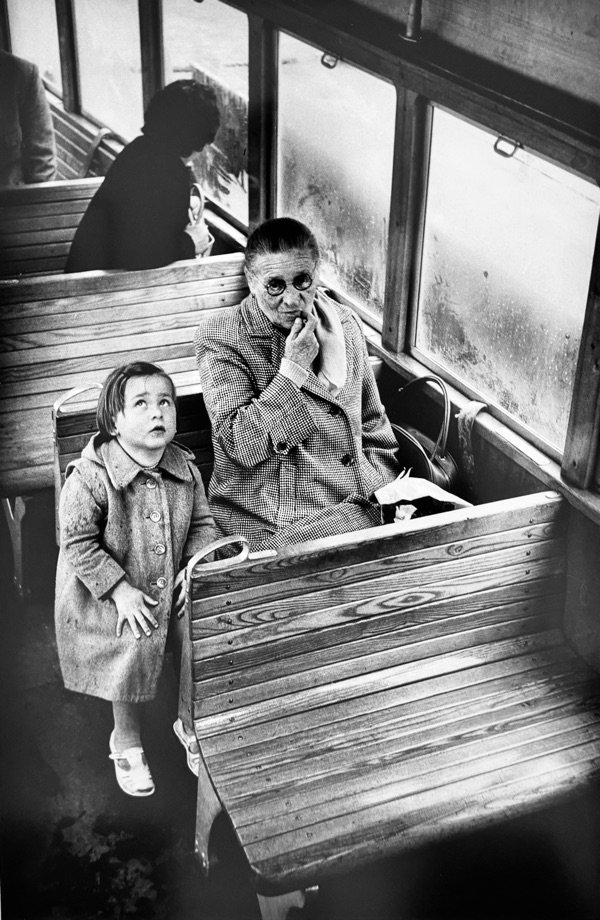
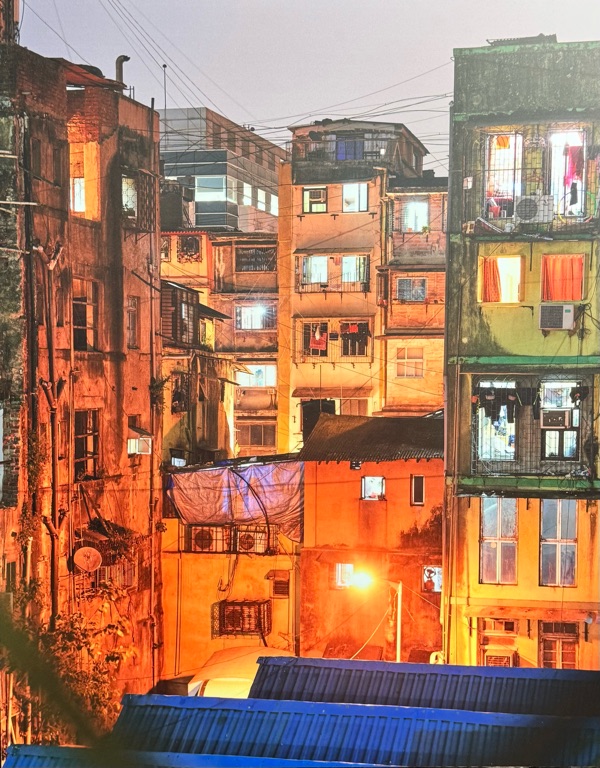
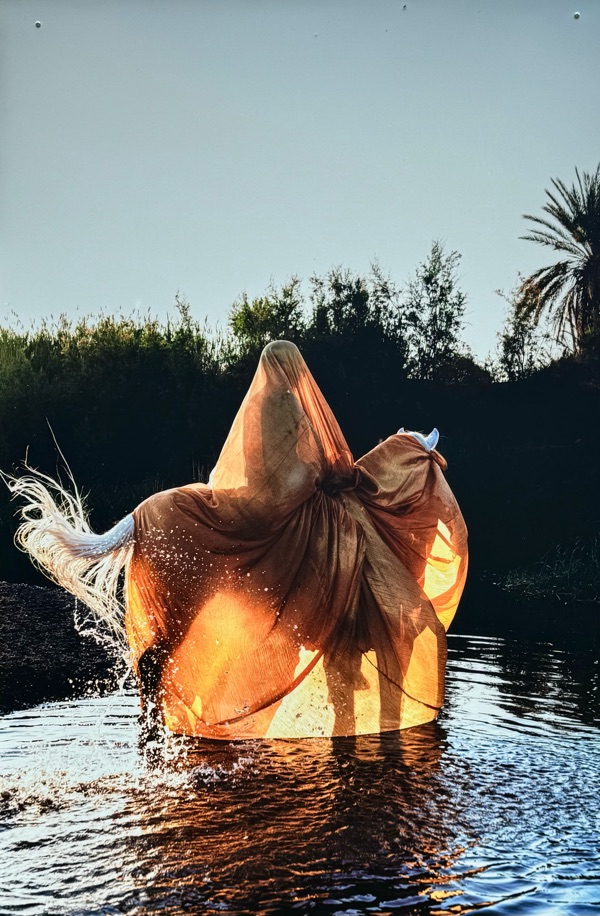

15 May 2025 – Underground on the Sly
May 5th, 2025 marked the 80th anniversary of the end of WWII in The Netherlands. At that occasion, a large exhibition started at FOAM in Amsterdam, “The Underground Camera”, about the resistance fighters who, throughout the war and at their own risk, took photographs on the sly to document the occupation of their country by the German forces and the consequences on the local population. The original aim, towards the end of the war, was to gather enough evidence, send it to the Dutch government in exile in London, so that the allies would drop food to support the populations. The result of this work is stunning. Although a project inherently documentary in nature, I could find some shots I could enjoy, as they reminded me of other famous photographers I admire most. I also marvelled more generally at those people, most of which unknown to this day, and their dangerous work under the noses of the occupiers. Using the bike as a place to hide the camera, taking photos in passing, documenting the work done by the underground, with the risk of being caught with enough evidence for the Gestapo to intervene and wipe out entire resistance cells. Later on, capturing evidence of the suffering of starvation of the entire population during the terrible hunger winter of 1944-1945, with children scraping the bottom of pans for food, older folks looking desperate directly into the camera and dead bodies accumulating everywhere. Varied artists were involved: Emmy Andriesse, Cas Oorthuys, Charles Breijer, Ad Windig, Krijn Taconis, Marius Meijboom and Hans Sibbele. Some, like Cas Oorthuys already seen in two exhibitions of his own in 2018 and 2023, became famous after the war.






1 May 2025 – Buzzling KunstRAI
40 years of KunstRAI, a large recurring modern art exhibition at RAI in Amsterdam, is worth a visit, to feel the ambiance, to check out the latest trends in art, and to experience the buzzling energy of the Amsterdam art scene. A few photography galleries were present as well, like DGDH/DGRD, Kahmann Gallery (thanks for the invites, Roy!) or the Kochxbos Gallery. A wonderful afternoon in pleasant company. What else does one need? This time around, my breath was taken away by the haunting experimental photography of Simone Boon. Dancing ladies in a blur of colours and undefined shapes. I thought they were created by AI and asked that question and was assured they were “just photographs”. Further away, Tessa Posthuma de Boer enchanted me with her carefully crafted painting-looking still lives, oozing calm and tranquility. Salih Güler, an economist by profession, intrigued me with his nude in the shower, and the toucan, a taxidermy piece designed by Dutch artists Darwin, Sinke & van Tongeren, left me literally speechless. Finally JD, presented by Roy Kahmann as a crossing between Edward Hopper and Saul Leiter, triggered deep questions about life. I did not know what to expect going to KunstRAI, but the experience was worth the trip.






23 April 2025 – Meet the Mapuche
This is a story of the Earth People, the Mapuche, torn between Argentina and Chile, forced to migrate, to loose their culture. Their resistance, their resilience to regain their lives and their existence as a cultural group. The Worldmuseum in Leiden pays tribute to their fight and to the Mapuche diaspora throughout the world. A small photography exhibition with a lot to think about in these troubled times. Each photograph invites the viewer to witness moments of ceremony, daily life, and silent strength. They are not just records—they are echoes of voices, memories, and belonging. A very touching encounter.




12 April 2025 – Lee Miller, a Life extraordinaire
Like a cat with nine lives, Lee Miller lived many different lives. She was a fashion model, a muse, a photographer, a war correspondent, a homemaker, a gardener, and even a food expert. All of these sides of her are beautifully shown in this wonderful retrospective at FOMU in Antwerp. She began her career as a fashion model in 1920s New York, but it wasn’t long before she moved behind the camera. In Paris, she studied photography and worked closely with the famous surrealist artist Man Ray. Her early photos broke away from traditional beauty and mixed elegance with the strange and unexpected. She also became Man Ray’s muse, model, and lover. During World War II, Miller’s photography took a powerful turn. Working as a war correspondent for Vogue, she was one of the first women to photograph the front lines. She captured the London Blitz, the chaos of field hospitals, the battle of Saint-Malo—where she was the only photographer present—and the liberation of concentration camps. Her photos from this time are honest, brave, and deeply moving. One of her most famous images is a self-portrait in Hitler’s bathtub—still seen today as a strong symbol of resistance and survival. Although she later tried to leave this part of her life behind and even hid her war photos, they were preserved and are now shared with the world.
For me, these powerful images are the heart of this exhibition.






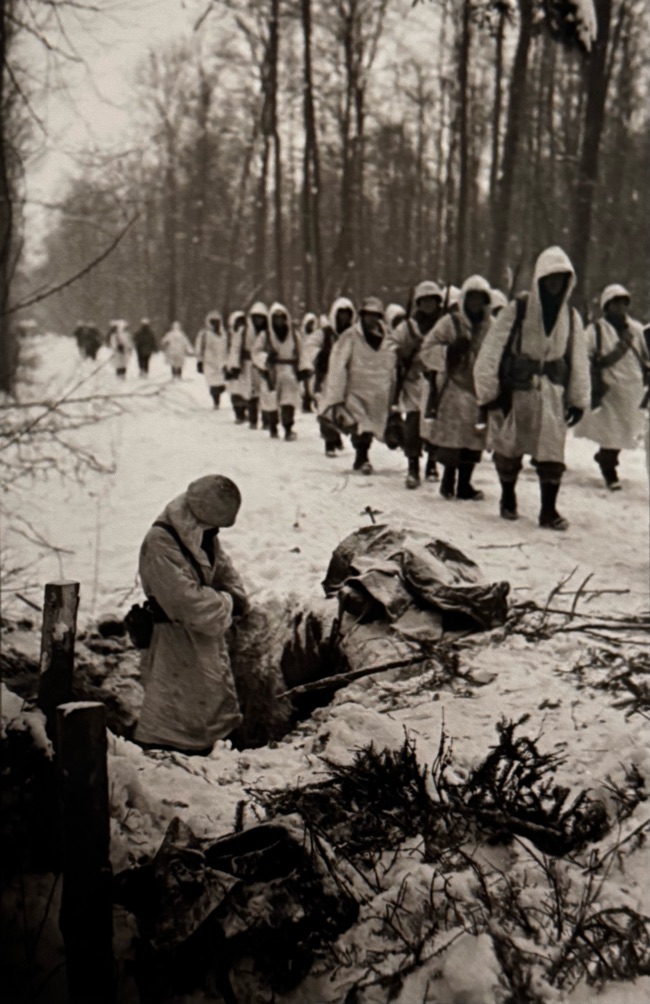

29 March 2025 – Dans les Hauteurs
Haute Photographie Rotterdam has become a recurring highlight of the end of winter, a moment to get warm again despite the cold winds, admiring the work carefully selected by Roy Kahmann, the very charming master of ceremony, always present and attentive. A chat with him goes a long way, straight to the new talents he is revealing. This time around, two young artists emerge out of the crowd of very talented individuals carried by the gallery. janus van den Eijnden from The Netherlands and Stefan Neagu from Romania. Having a chat with both was refreshing. The photographs of Janus tell the story of a time passed, rodeos in the far west, old western shots, highly contrasted, rough men fighting the elements and the hostiles. When it comes to think of it, one is wondering where these pictures were actually taken. The USA? no, the clothes are old and ragged. I decided they were people living in the remote spots of the pampa of Argentina. I went to enquire and what a surprise it was to discover that none of these people actually existed as human beings. Those scenes are entirely generated by AI. The work of the artist is to call upon those scenes and painstakingly carving the bits into something that appeals to him. The result is stunning and unbelievable. Stefan Neagu is a delicate Romanian artist full of sensitivity for the things around him. His nude photographs are tasteful and beautiful. His technique is evolving towards higher quality images in a 6×6 format. I was also attracted by the photo of a king fisher and I met Kaat Stieber from The Netherlands who explained to me in details her creative process. Walking further I met Anna Riabova from Russia, already spotted before for her delicate rendition of past paintings, and I had an extensive discussion with her about current events, history, photography, art in general and much more in a short period of time. A rare encounter, in a perfect French. Finally, I enjoyed the photographs of Inna Oleff from Russia as well. All in all, this edition of Haute Photographie was exceptional, with these new discoveries, but also with the ones already seen before, some of which are worth mentioning again: Nancy Poeran, Hassan Ragab, or Yani.






21 March 2025 – Nothing lasts Forever, Nothing?
I never knew of the existence of Peter Mitchell (born in 1943) as one of the most important early color photographers of the 1970s and 80s, before visiting his exhibition at The Photographers’ Gallery. His pictures tell stories about life in Leeds, a city he has photographed for over 40 years with warmth and familiarity. Mitchell captures the changing face of Leeds through times, from old buildings being vacated and demolished to new developments, as well as the people who live and work there. His photos show everything from shopkeepers and landlords to quiet backstreets, scarecrows, and desolation, reflecting both his love for the city and his unique way of seeing it to tell the story of its evolution or decay. Often called “a narrator of who we were,” Mitchell documents a disappearing world. He describes himself as “a man of the pavement” and still walks the streets of Leeds today, continuing to photograph his hometown. His photographs are endearing, touching, at times scary about how humankind evolves. Some things remain unchanged however, like this telephone booth proudly standing in the middle of nowhere or this concrete mixer featuring the Union Jack, just underneath a Union Jack. Rule Britannia!






21 March 2025 – Börse with a Depth
The Deutsche Börse has probably more to offer than one may think. Their Photography Foundation is one of them. The prizes for 2025 are currently exhibited at The Photographers’ Gallery, another must-visit place when in London. The Deutsche Börse Photography Foundation is an organization dedicated to contemporary photography. It supports photographers, exhibitions while also managing the Deutsche Börse Photography Prize, one of the most prestigious awards in the field. Its mission is to promote photography as an artistic medium, featuring artists who explore themes like identity, history, and global change. This time around, four very diverse artists have been recognized. Christina de Middel was already featured at Les rencontres de la Photographie of Arles last year. Her powerful photography along the Central American migration route across Mexico left a deep impression on me. The narrative using simple cards challenges us as the story of the people shown is much more complex that these images may suggest. “La Rosa’, this little girl wearing a large Orange Trump t-shirt in front of the wall separating Texas from Mexico is a good example of that narrative. Rahim Fortune travelled through the Southern States of the USA to meet the communities living there. Hardtack, an unleavened bread made with flour, water and salt, symbolizes the spirit of survival of those poor communities in the left-behind parts of the USA. Tarrah Krajnak, in a totally different genre presents “a catalogue of attitudes for estranged daughters” by restaging works from previous masters with her own body, an interesting series of photographs. Finally, Lindokhule Sobekwa brings us along a deeply personal project, together with his sister who disappeared to his homeland of South Africa. A moving journey through his own history.

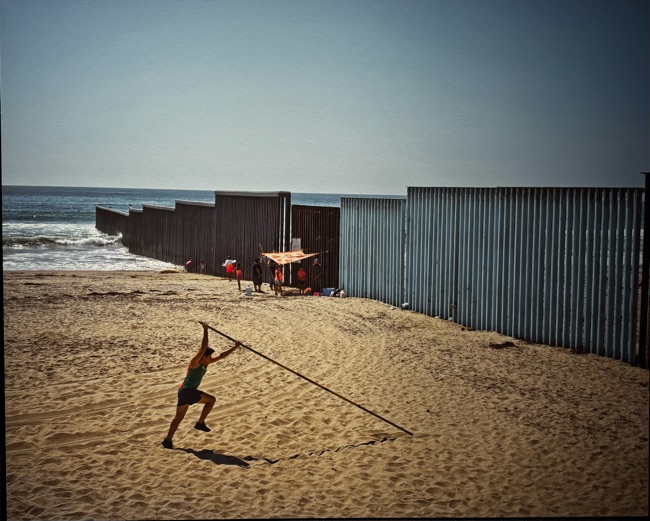
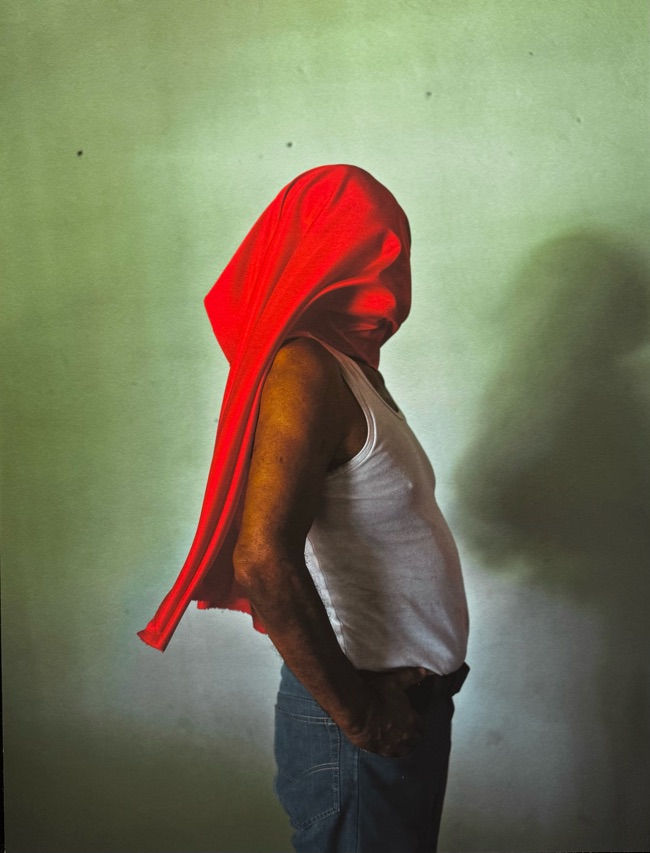




21 March 2025 – Miss Maggie’s UK
“A part, bien sûr, Madame Thatcher”
Tate Britain provides “the very best of british art”. This time around, a large exhibition under the title “The 80s: photographing Britain” gives us a deep dive into Margaret Thatcher’s UK, in “a decade of social and political change”. England is one of these few places on Earth where things never change, where keeping up appearance is a national sport, and at the same time where everything is put into question and changes occur, sometimes rapidly and violently. A broad range of photographers have captured the changes that occurred in the 80s in diverse forms, as diverse as the communities coexisting in Britain. From Martin Parr and his critical and sharp eye on the British society to representatives of the black, queer or Asian communities. Famous names are also present, Don McCullin and Chris Killip, the most prominent of them, bring us along to share the lives of poor people in Northern England or the isle of Mann. John Sturrock and John Harris the miners strikes and confrontations with police forces. Jenny Mattews and Joanne O’Brien the demonstrations against war at Greenham Common Airbase. All in all, an overwhleming maelstrom of pictures and tribute to diversity and an evolving humankind. As it was happening under our eyes, and now fixed on film, one could feel it in the air at the time, except, of course, Mrs Thatcher.








13 March 2025 – On a Polka Tune
The Galerie Polka is quite active in the field of photography. Alongside their magazine, under the leadership of the girl of Ipanema, they also display regular exhibitions at their home rue Saint-Gilles. Pushing the door of the gallery is the gateway to a different universe. Behind the classical Parisian storefront, you discover the cour de Venise, a haven of peace in the midst of Paris. There, a bigger exhibition space displays the artists carried by Polka. This time around, an old acquaintance, an old friend, presented well-known stunning photographs of the world: Sebastião Salgado. Despite all the previously mentioned hesitations, his photography is everlasting and keeps touching the soul. His pictures are not just pictures; they are visual testimonies of the world’s struggles, hopes, and wonders, carrying an emotional weight that stays long with me after I see them. Each of his photographs tells a story, capturing the splendors of the (still) untouched natural world. No need to apologise and just enjoy the awe.


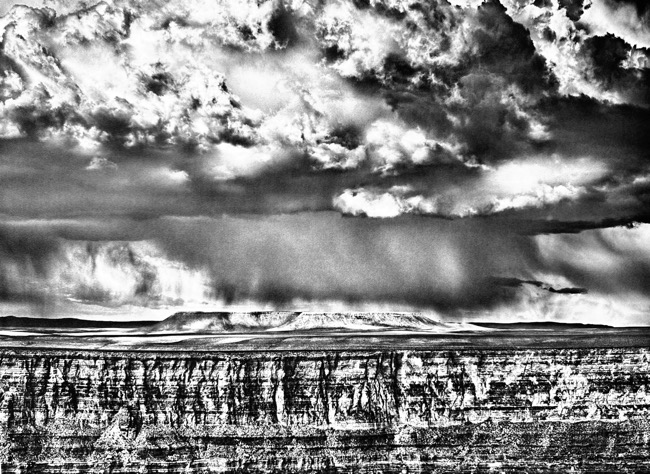

13 March 2025 – The Wheel of Fame
I did not know about the existence of Harold Feinstein before visiting the exhibition titled “The Wheel of Marvels” at Maison de la photographie Robert Doisneau in Gentilly. Feinstein was a gifted photographer known for his intimate black-and-white images that captured the beauty of everyday life. Born in the early 1930’s in Coney Island, New York, Feinstein developed a love for photography at a young age. He focused on his home, Coney Island. His images of the boardwalk, crowded beaches, and amusement park rides capture the energy, joy, and diversity of New York life at that time. He was one of these few people making the ordinary extraordinary — families laughing in the sun, couples sharing quiet moments, and children playing in the sand. His photos feel spontaneous and alive, full of real human emotion. Beyond Coney Island, Feinstein turned his lens to other subjects, always with the same warmth and curiosity. In the early 1950s, he was drafted into the U.S. Army, shipped out to Korea where he documented every day military life with a deeply personal touch. Not as a war photographer but as an ordinary service man. Soldiers resting, sharing moments of camaraderie, and experiencing boredom, uncertainty and fear. Throughout his career, Feinstein also experimented with different styles, including street photography in black-and-white and colour, portraits, and even detailed close-ups of flowers and shells. No matter the subject, his work was always about connection between people, places, and the world around them. His ability to find beauty in the everyday made his photography timeless and easy to connect with. Feinstein died in 2015, without achieving the fame he would have deserved, in my opinion. Maison de la Photographie Robert Doisneau gives him a small platform, after being exhibited in Mougins in 2023. His work deserves a larger space in Paris. When will there be a proper retrospective of this major artist?
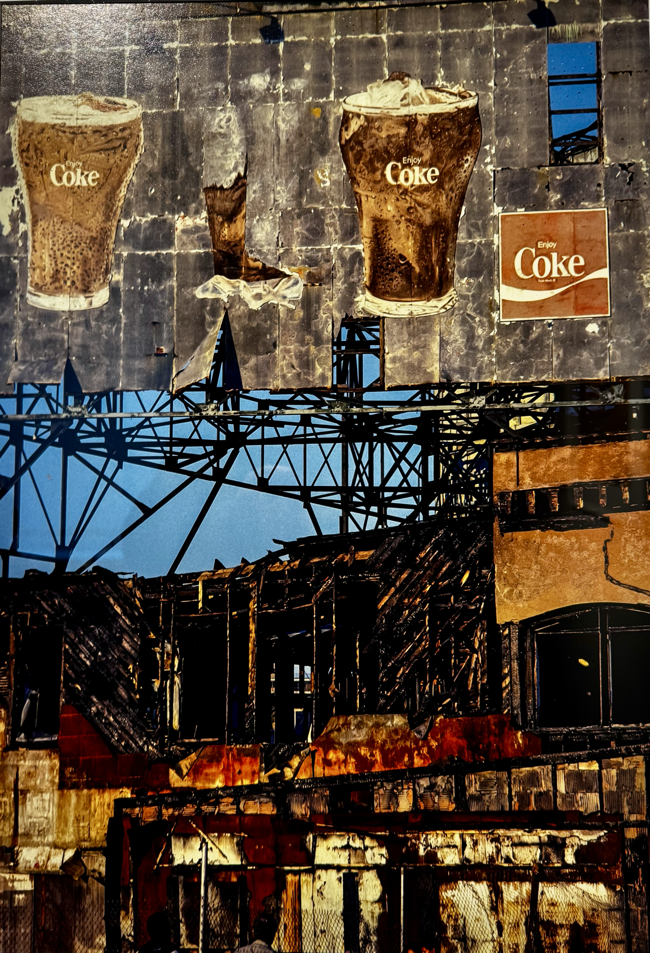

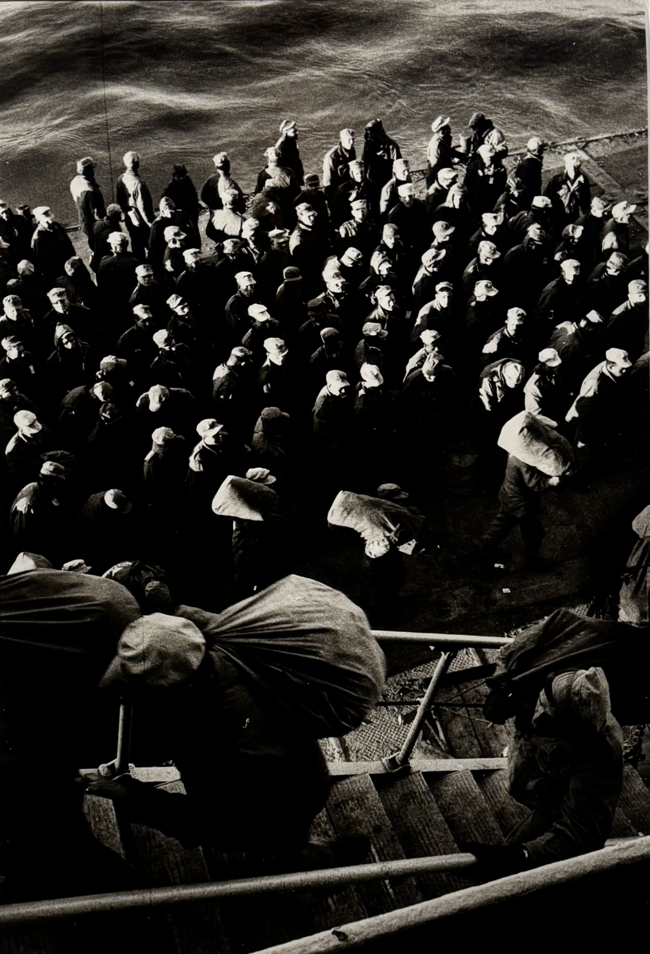



13 March 2025 – Across Time and Space
Love is a profound and multifaceted emotion, taking on various forms and expressions that shape our human experience daily. It exists as romantic love, a deep and passionate connection between two people; familial love, the unconditional bond between parents, children, and relatives; platonic love, the deep affection shared between friends; and self-love, the appreciation and care we show ourselves. Love transcends time and space, leaving imprints on our lives in ways both seen and unseen. Photographers have attempted to capture and preserve these expressions of love in a single image: the warmth of a mother holding her child, the unspoken tenderness between partners, the joyous laughter of friends sharing a moment of pure happiness. In every frame, there is an essence of love—whether it be through the eyes of a couple, through the shapes that bodies take, the gentle wrinkles on an elderly couple’s intertwined hands, or the quiet solitude of an individual embracing self-love. In Camera Galerie has gathered a collection of images from various photographers across time and space under the title “In Love.” This exhibition offers a diverse and intimate portrayal of love in its many forms, as seen through the lenses of various artists. In a relatively small space, one can browse the vision of love by André Kertész, Eva Rubinstein, Bertien van Manen, Koto Bolofo, Nobuyoshi Araki, and many more. Each photographer brings their unique perspective, capturing moments of tenderness, passion, nostalgia, and connection. Through their work, they remind us that love is universal, yet deeply personal—a force that binds us together and shapes the way we see and experience the world.






23 February 2025 – Revoir Paris
Revoir Paris
Un petit séjour d’un mois
Revoir Paris
Et me retrouver chez moi
With the words of Charles Trenet in my head and on the tip of my tongue, I entered the exhibit of the same title at Huis Marseille in Amsterdam. The exhibit features a large selection of 72 original large-format photographs, 16 of which were rediscovered in 2017. These photos were taken by the successful French amateur photographers, the Séeberger brothers, for four photography competitions organized by the city of Paris in the early 20th century. They are currently housed in the Musée Carnavalet – the museum of the history of Paris. The Séeberger brothers, Jules and his two younger brothers Henri and Louis, dedicated significant time and effort to these competitions. The photos showcase well-known locations in Paris, such as Montmartre, as well as lesser-known spots like the Bièvre River, now buried and invisible to pedestrians. Each location is brought to life by the presence of real people from that era, specifically hired by the brothers to represent Parisians. Although some of the photos are conventional in their setup, they remain unique testimonies of the Belle Époque on the eve of World War I, These images evoke for me a deep longing for the Paris of yesteryear, a city full of charm and character that has since faded into history. And Charles Trenet’s song resonates within me with the same nostalgia.
Seul sous la pluie
Parmi la foule des grands boulevards
Quelle joie inouïe
D’aller ainsi au hasard




23 February 2025 – The Flâneur dilettante
Saul Leiter had a distinctive approach to his art, often described as that of a “dilettante”—an amateur who pursues art for the sheer love of it rather than for professional acclaim. This approach resonates with the concept of the “Flâneur”, a French term that translates to “stroller” or “lounger” in English. A “Flâneur” is someone who wanders the streets aimlessly, observing the world with detached curiosity and wide-open eyes, seeking beauty in everyday life, whether it reveals itself or not. Leiter embodied this spirit in his photography. He would walk the streets of New York City, capturing fleeting moments and the interplay of light and shadow. His work was not driven by a desire to document social issues or make grand statements but by a simple love for the act of seeing and capturing the world around him. This approach deeply resonates with me, as it mirrors what motivates me most in photography. Saul Leiter’s images often feature reflections, shadows, and blurred subjects, giving them a dreamlike quality. This aligns with the “Flâneur’s” tendency to observe life from a distance, finding beauty in the mundane and overlooked. His approach was more about the journey and the experience of wandering through the city than about the destination or the final image. His humility is both touching and compelling. FOAM in Amsterdam showcases, under the name “An Unfinished World”, a large body of his work, including the types of pictures described above, in both color and black and white. The exhibition also features more intimate series that reveal how he might have felt about his models. These pictures express a lot of love, with the models appearing beautiful, innocent, and fearless, suggesting they felt safe and loved. The images are beautiful, moving, and intimate.






15 February 2025 – America
The Rijksmuseum presents a comprehensive exhibition on American photography, titled “First Major Survey of American Photography.” With over 200 pieces on display, the exhibit offers a thorough overview of American photography, featuring artists from diverse backgrounds and spanning the last 150 years. Curated from the Rijksmuseum’s own collections, the exhibition notably excludes some prominent American photographers, such as Ansel Adams, Annie Leibovitz, Dorothea Lange or Steve McCurry. However, it dedicates significant space to Robert Frank and his influential book “The Americans,” which has inspired many post-war American photographers. Not denying ourselves the pleasure, we wander through the history of photography with works by famous photographers like Diane Arbus, Paul Strand and László Moholy-Nagy, but also from lesser known photographers like Lisette Model, Irene Poon and her powerful portrait of her sister Virginia, Mong Smith and the omnipresence of Stars and Stripes, Ben Shahn, or Alice Austen. Many of these names are still relatively unknown today and not regularly shown, making this event a discovery of many talents. The topics are varied, ranging from portraits, everyday personal moments to major historical events, showcasing how photography has evolved into an integral part of our day-to-day lives since it was invented in the XIXth century. Although I selected only black-and-white photos to show here, the exhibit is also rich in color photography.



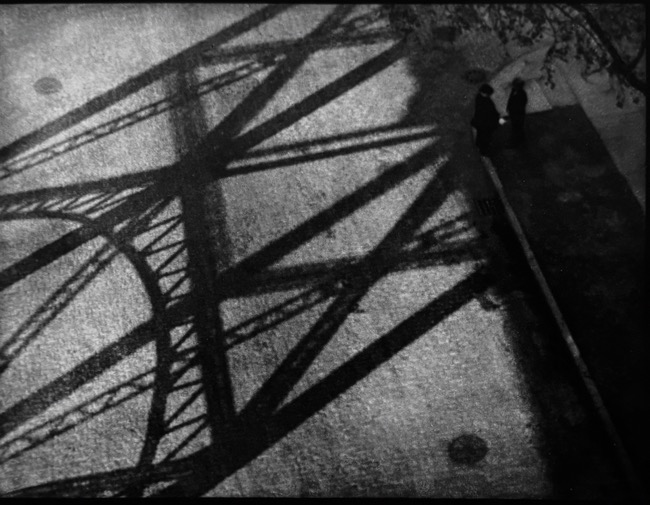


11 February 2025 – Why?
Visiting a photo exhibit by Sebastião Salgado always brings deep pleasure due to the perfection of the photos, setting, subject, lighting, and framing. However, it also evokes a sense of disbelief: too perfect, too beautiful to be fully real. I imagine Mr. Salgado in his posh loafers and high-priced clothes, going on an expedition with a myriad of assistants preparing everything for him so that he just has to push the trigger and create the perfect photo signed “Salgado”. His series Amazônia presented at the National Museum of Singapore, curated, and designed by his wife Lélia Wanick Salgado, guardian of the temple, starts in the same way: Majestic landscapes illuminated by an ethereal light, menacing clouds, breathtaking views taken from a helicopter, deep blacks, perfect photos. As we explore further, the exhibit shifts in tone and becomes much more personal. We encounter one by one the inhabitants of the Amazon, people deeply connected with the forest, struggling to preserve their current way of life. This reveals how fragile humanity is and how threatened their ways of life are in today’s world. The exhibit fosters a profound connection with Edneuza, Miro, Alzira, and Sina. They gaze back at us, questioning: why? Through their beauty and elegance, we gain insight into their souls and ponder how humanity went astray, leaving us with a deep sense of unease: We are destroying these people and their way of life with our modern world, leaving us with little more than to gaze at them in awe, admiration and despair. More than just another show, an experience.
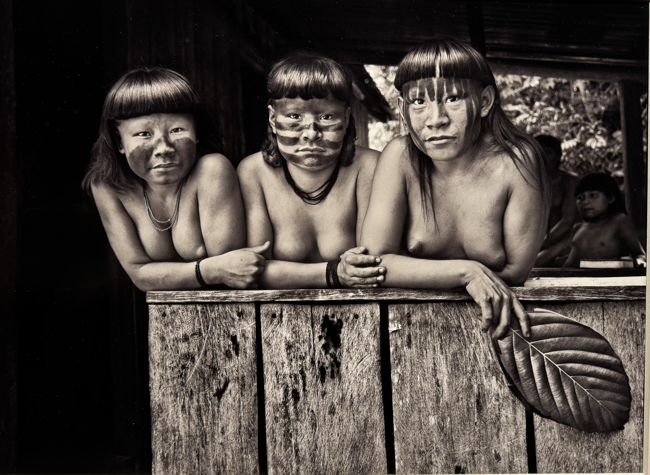

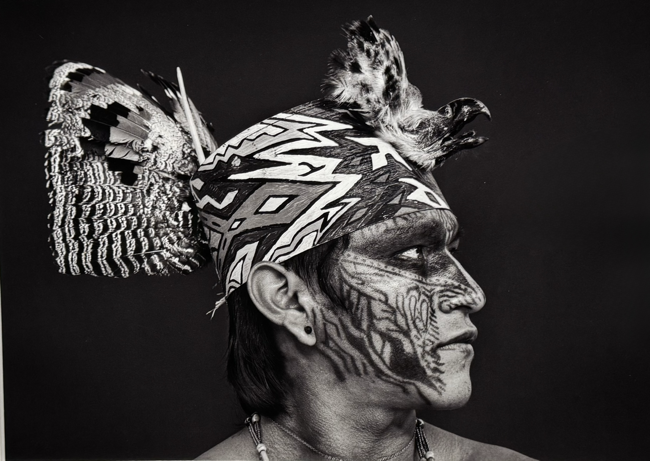


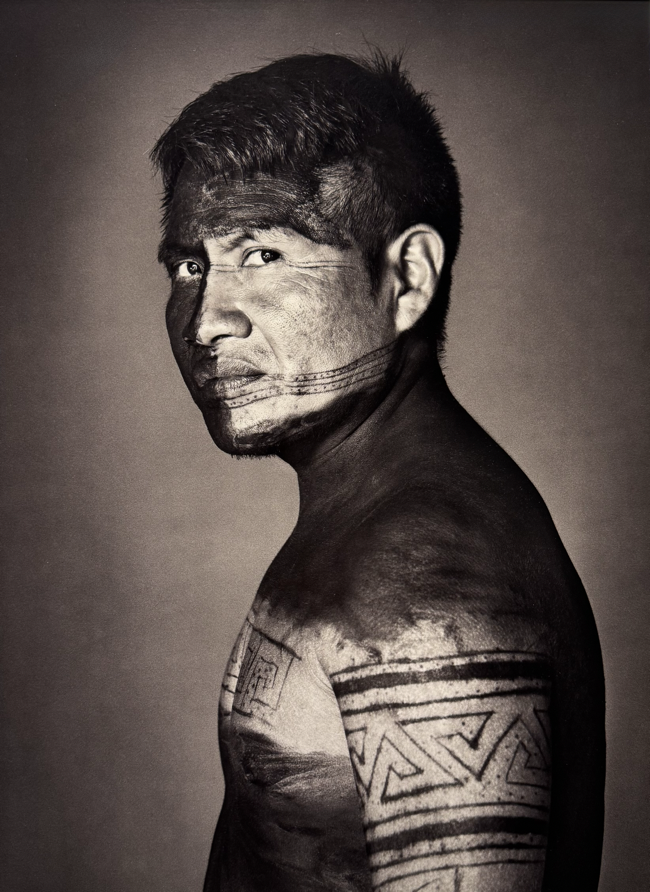
18 January 2025 – Women
John Lennon said it “Woman, I can hardly express, My mixed emotions at my thoughtlessness, After all, I’m forever in your debt”… It took a while but we are getting there: we are finally recognizing the importance of women throughout history, science, the arts, and every other field. The same applies to photography, and specifically to Japanese photography. The Fotomuseum Den Haag seeks to address this ancestral inequality with its current exhibition, I’m So Happy You Are Here – Japanese Female Photographers from the 1950s to Today.
While some Japanese photographers have become widely recognized, I’ve shared before the awe I felt visiting a Daido Moriyama exhibition, one of the most influential figures among many. But what about women? Japanese women are often admired for their discretion and humility, not to mention their role in a culture traditionally dominated by men. This exhibition represents a ground-breaking effort to highlight the photographic work of not just one, but 26 Japanese women. The topics explored are broad, ranging from classic street photography to innovative creativity and experimentation. It offers a refreshing perspective on Japan, one that is unfamiliar to Western audiences – a Japan seen through the eyes of women. I cannot say I loved every piece presented but I was particularly sensitive to the work by Ishiuchi Miyako, Nishimura Tamiko and finally Yanagi Miwa, with her “elevator girls”, a series of tableaux reflecting on the place of women in the Japanese society.



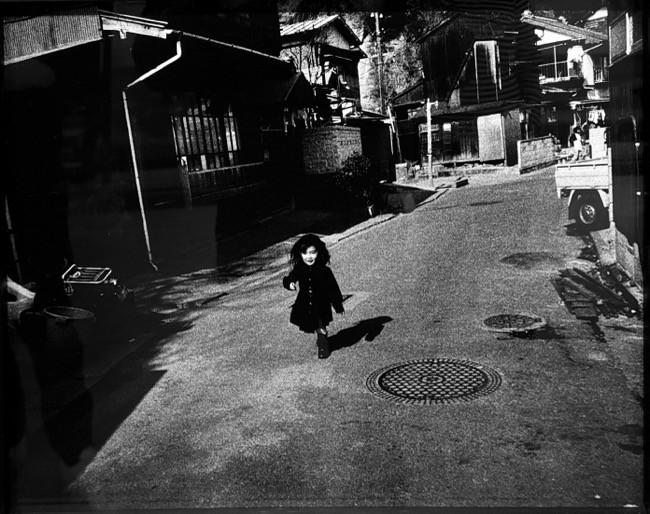


15 October 2024 – Watch! Watch! Watch!
While in Barcelona for work, I was thrilled to discover that a major Henri Cartier-Bresson exhibition was taking place at Fundación Mapfre. For years, his work has been a source of inspiration for me; I have explored his books and attended exhibitions of his work around the world. Yet here, the exhibition’s title seemed almost like an injunction: “Watch! Watch! Watch!” It felt as if Henri Cartier-Bresson himself were urging me to look more closely, to see beyond the surface and uncover new perspectives. This exhibition was a pure delight. The familiar magic of his well-known photographs was on display, and seeing them in Barcelona made them feel timeless all over again. Each shot invited me to pause, reflect, and discover details I had missed before — a glance, a shadow, a simple and strong composition. Cartier-Bresson’s genius lies in his ability to capture moments that reveal not only the subject but an entire world within a single frame. While many of his photos were familiar, the exhibition also surprised me with lesser-known images, offering new insights into his artistic journey and historical involvement. There were striking images from World War II, capturing both the chaos and resilience of the time. They were particularly moving, documenting life during and just after the war, including images of defeated Germany in 1945. These images reveal the strength and struggle of people, cities, and cultures in dispair. The exhibit also highlighted his many travels, including images from Cuba, India, and Italy. These photos illustrate Cartier-Bresson’s ability to find the universal in the specific. This exhibition was a reminder of his philosophy of the “decisive moment,” where he captures the essence of a place, person, or culture in a single instant. Throughout, “Watch! Watch! Watch!”, I fell compelled to follow his message: look beyond the obvious, truly pay attention, and find beauty in unexpected places.




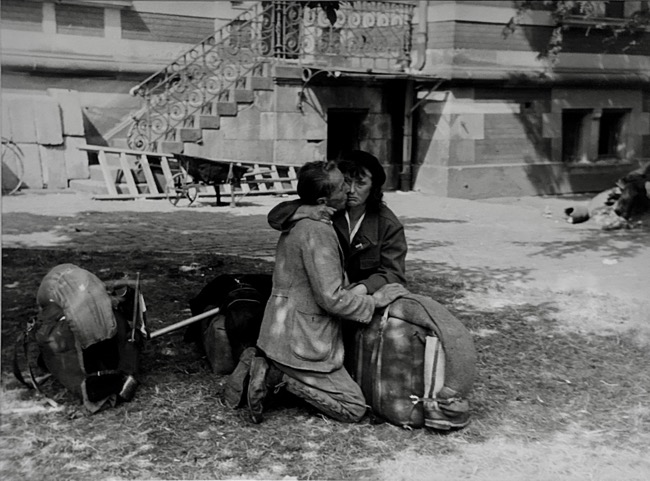
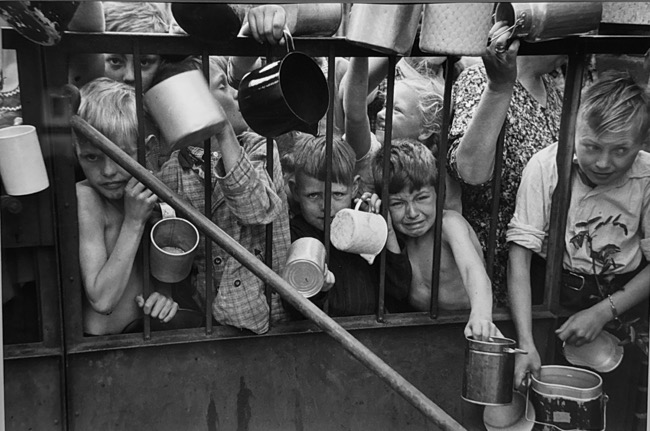


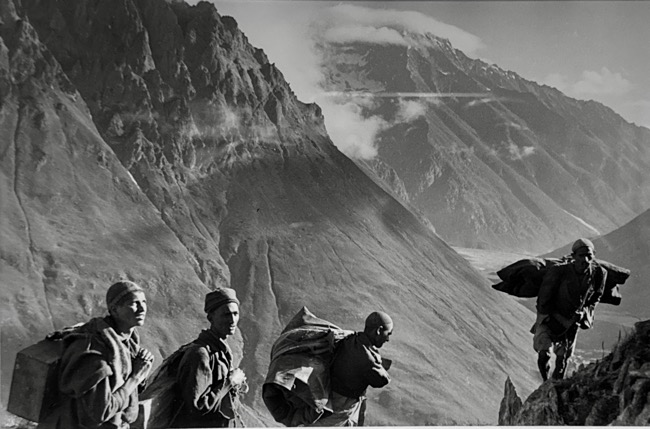



21 September 2024 – Hoho! Fan of Fan Ho
Fan Ho is one of these photographers making iconic photos while breathing, a second nature for him and a definite coup de coeur every time I see his images for me. Born in Shanghai, emigrated to Hong Kong in 1949, he relentlessly chronicled the life in his new home during the 1950s and 1960s. His photographs are candid accounts of the lives of his fellow countrymen. Simple people doing simple tasks, children playing in the streets, vendors working or simply passing by. Fan Ho became a master of light and shadow, His most iconic picture is “Approaching Shadow” of 1954, but it is one of many. I love the atmosphere, the ambiance of a lost world. His photographs have something very compelling, showing the position of humans in the city, small figures passing by in the immensity of the place. Fan Ho could be easily compared to Henri Cartier-Bresson: a discreet witness picturing his fellow men without interfering, a humanist capturing what makes humans tangible.





21 September 2024 – Unnoticed or Unseen?
Unseen is a feast for the eyes; more than 60 exhibitors from around the world gather in one place over a long weekend to showcase what’s new, in the world of international photography. The spectacular gasometer is the host of the large-scale exhibition area. The visitor can stroll around the location in a pattern of their choice, starting from the center, exploring the rays of the circle, or otherwise. The wonders are numerous. The styles, formats, prices, patterns varied, intriguing, and never make you indifferent. As always, one cannot like everything. The art shown goes from most hideous to sublime, from ridiculous to jaw dropping, all in the eye of the beholder. The public goes along the same lines: sophisticated, provoking, dull, exciting, uninterested, or blasé. The gallery staff can be friendly or be perceived as intimidating. for those friendly ones, a small chat always gives an insight on what the artists on display have tried to achieve: a moment of learning to enhance comprehension or awe. Several hours are necessary to render justice to the place and to honor the pieces on display. Several coups de coeur result from this in-depth exploration. I spent the most time discussing the work of Joost Vandebrug and his imaginary landscapes created one small rectangle of color at a time, in the manner of pixels: the result, seen from a distance, is stunning. Zooming in brings you to a new plane of reality, not less amazing. I was intrigued by the aerial landscapes of Kadir van Lohuizen: his “Food for Thought” series explores the Dutch Food chain, mixing social engagement and visually pleasing images. Those cows in Texas looked like ants in a wasteland. I stumbled upon the works of Johnny Miller, Natascha Libbert, Romain Jacquet-Lagrèze, the empty spaces, abandoned by mankind, of Steven Seidenberg, Robert Conrad, Thomas Kemnitz and Nicola Brandt or the over-crowded landscape of Hans Wilschut. It seems unfair not to mention all the wonders experienced, but it is only human. A second visit would have allowed more amazement and sense of wonder. One thing is certain: the next Unseen will be worth the visit.



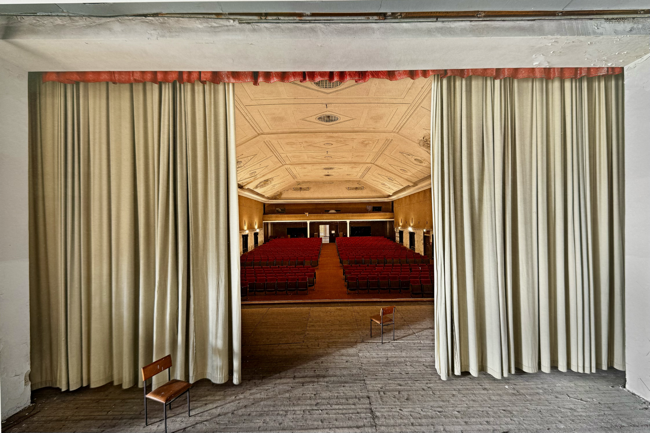






19 September 2024 – Toujours plus Haute
The bar is set always higher by Roy Kahmann: It is with renewed pleasure that I visit the Haute Photographie events in Rotterdam or in Amsterdam. High quality display and presentation, top notch photographers, beautiful setup. I don’t pretend to like everything but recognize that Roy Kahmann is doing a fantastic job promoting carefully selected emerging as well as confirmed artists, more than fifty in total. This time around, the event was in a new home, Studio3000, located in Amsterdam-Noord: a large space, all in white, walls and ceiling, with several artists on display present at the event. On top of that, I was in very pleasant and unexpected company from France, right after work. What else to ask for? The work of David Ballam showing Africa as we don’t know it: a bit of Sebastiao Salgado and Jimmy Nelson with a notch extra: according to Roy, David is the only photographer, with Salgado, daring to show blurred backgrounds: these are just perfect, with focus on the massive horns of these domestic animals. Going further, I admired the delicate photographs of Anna Riabova, inspired by Dutch masters, “Escape” by Olga Karlovac or Joep Hijwegen’s colorful “Blur”. I particularly enjoyed the work by two artists “dialoguing” with AI. Hassan Ragab presents a world that could be, overtaken by over-population, with improbable assemblies of buildings and busses, all crowded: a mixture of reality with impossible architecture, the Egypt of tomorrow? Funny and Frightening. Fully enjoyable. The other artist is Nancy Poeran. From a picture, Nancy dialogues with an AI to arrive at the essence of things. Over and over, she manipulates the output generated by the AI, add sketches and feeds it back to the machine until she reaches her goal. The result is stunning, and all is said in the title of the work ” We are all made of light and shadow”. Enlightening shapes of light and shadows. A masterpiece.








14 September 2024 – Killip’s Humanity
I am still wondering how it is possible, after so many years of attending exhibitions, reading about it, and being immersed in it, the name of a contemporary photographer of importance remained completely unknown to me? And that of “one of the most influential British photographers of his generation”? Amazing shortage of knowledge! The name is Killip, Chris Killip. Born in 1946 on the Isle of Man, Chris Killip, after a career as a commercial photographer, started to record the lives of the inhabitants of his native island. Inspired by the photograph of Henri Cartier-Bresson depicting a young boy carrying two bottles of milk, he continued by expanding his horizon to the North-East of England in the 1970 and during the Thatcher years in the 1980’s. His series like Seacoal and Skinningrove give us a view of life in remote areas of the UK. Areas left out of the London wealth and attention, where people visibly struggle in their day-to-day lives, where the sense of community is the only thing they share. Killip, in a way, is for me the Ken Loach of photography: he lives an impression of profound connection and empathy with the people he photographed, like Ken Loach did in his films. Same people left behind by society and progress, and yet showing their deep sense of humanity. Killip said it himself “I wanted to record people’s lives because I valued them. I wanted them to be remembered. If you take a photograph of someone, they are immortalized, they’re there forever. For me that was important, that you’re acknowledging people’s lives, and also contextualizing people’s lives”. The large retrospective at the Fotomuseum of The Hague is a tribute to his immense work.





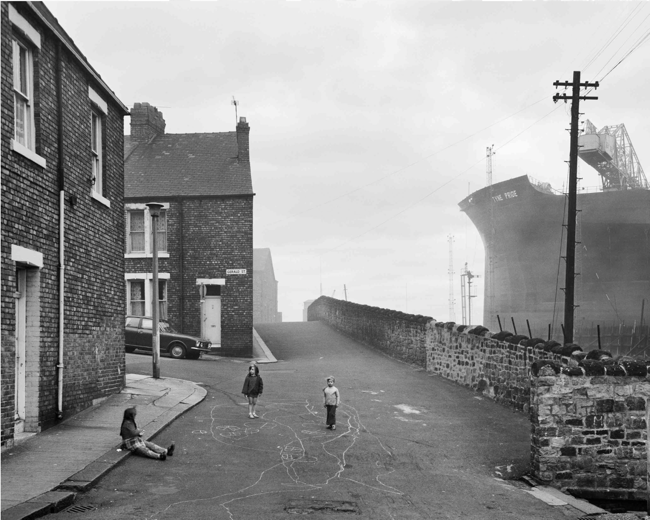
21 June 2024 – Across The Pacific
Yasuhiro Ishimoto (1921-2012), a Japanese photographer, may not be as well-known in France as Daido Moriyama, but he is nonetheless also a significant figure in the annals of Japanese photography. Ishimoto, who studied at the Institute of Design in Chicago from 1948 to 1952, is a unique example of cross-cultural education during a period when it was not as prevalent. After returning to Japan in 1953, he emerged as a prominent figure in the Japanese art world. Le Bal is showcasing a comprehensive retrospective of his work, titled “Lines and Bodies”, featuring a total of 169 rare prints, the majority of which are vintage and printed by Ishimoto himself. The exhibition includes a variety of images from both Chicago and Tokyo, demonstrating his approach of merging Japanese culture with Western influences. His photographs are graphic and occasionally stark. I was particularly drawn to his compositions that blend architecture and people. Ishimoto is also renowned for his depiction of the Katsura Imperial Villa in Kyoto, which sent “shockwaves through the world of architecture and design”. His modernism and fresh perspective on the world have drawn comparisons to Brancusi, also exhibited in Paris (by chance). This is my second visit to Le Bal, and as always, the exhibition is well-presented, solidifying this institution’s place on my list of must-visit venues for photography exhibitions in Paris.








19 June 2024 – Today’s France
“C’est beau, c’est grand, c’est généreux…. La France” said General de Gaulle in one of his speeches.
450 photographs, 200 photographers, a project spanning over three years, several state institutions involved: the Ministry of Culture, the Bibiothèque Nationale de France, a pharaonic budget to support the press profession. The result: “France under their eyes”, a massive exhibition at BnF François Mitterrand showing France as it is: grand, beautiful, generous. But one may add, very diverse, rich of cultures, sad at times. The rich and the poor, the young and the elderly, the straight, the bi, the gay, the employed and unemployed, the ones living in small towns or in banlieues, in Bask land, Brittany or Burgundy, the French people look at you in their immense diversity and reconcile you with your own country by telling their stories, deeply moving, always intriguing and interesting. What a trip! The exhibition is organized under four logical themes: Liberty, Equality, Fraternity – our own motto -, but with a fourth one, reflecting on the future: Potentialities. Gazing through 450 photographs seems like a daunting task, but it is not the case. The stories are captivating, one after another. Time passes without feeling it: We share resting time with the monks of the Strasburg cathedral, work with Christelle in Charlieu, fish on a boat with Camille, feed the pigs with Manuel at his farm of Rosnoën. We come out of this experience with a smile on the face: “C’est beau, c’est grand, c’est généreux…. La France”. A message with a striking relevance today…







18 June 2024 – A full plate of Serrano
America is a difficult topic all together. The relationship is tumultuous. The feelings extreme: It can be love and at the same time, it can be hatred. America has produced the best and the worst. So how to go about “Portraits of America”? Is the plate full or empty, half-full or half-empty? Musée Maillol gives an answer to this arduous question with a large retrospective of the works of Andres Serrano. Not the simplest of photographers. Some of his pieces have been debated at length in the US Senate as being blasphemy, no less. The “artist with a camera”, as he calls himself, has relentlessly shown us what today’s America is when it comes to religion, sex, death, politics, poverty, violence. The result is provocative, disturbing and straight in your face. From a gallery of large portraits of first-nation Americans to the homeless, to the members of the Ku-Klux-Klan, to Donald Trump himself. We get the full plate! Some of the photographs cannot be shown here. Serrano pushed the envelope to the point where some of his work has been vandalized in previous exhibitions. But isn’t that the role of the artist? to hold a mirror in front of your face and help you think about what it returns? In any case, this exhibit cannot leave you indifferent and the steep contrast with the Maillol sculptures is another topic of discussion.



18 June 2024 – New Shores
Stephen Shore is an American photographer who shows us the banality or the beauty of his country, as created by men and women, and seen from his car. Empty spaces, worn-down functional buildings, immense skies, wide highways, filling stations glowing at night, cross-roads in small towns. His series and books include Uncommon Places (1982) and American Surfaces (1999), with photographs that he took on cross-country road trips in the 1970s. The Fondation Henri Cartier-Bresson gives a large retrospective of his work, both in black and white and color, from the early beginnings to the 2020’s and his “Topographies”, taken from a camera-equipped drone. The title of the exhibition says it all: “Vehicular & Vernacular”. Vehicular to reflect on his extensive use of vehicles in his work and his practice to shoot pictures from a car window and more generally from a mobile angle, creating thereby a new form of “vehicular photography”. Vernacular reflecting on the functional, at times mundane, aspect of the American landscapes created by people, rather than the spectacular we are more used to in Europe. With these, the photographer, through his oeuvre, brings us to the (new) shores of his Americanness right in the middle of the Marais in Paris. I was particularly attracted to his latest work, showing patterns from the skies that would otherwise remain unseen from the ground. In that respect, his work connects to the work by Edward Burtynsky, although the latter focuses more on the damages created by industrial landscapes on the environment, whereas Shore explores simply the shaping of the American landscapes by settlers.


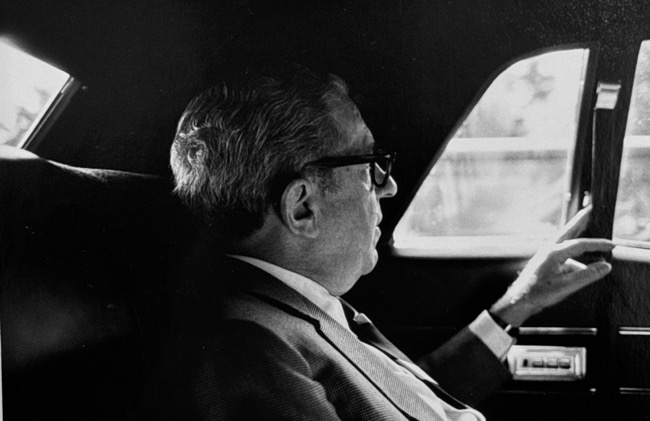



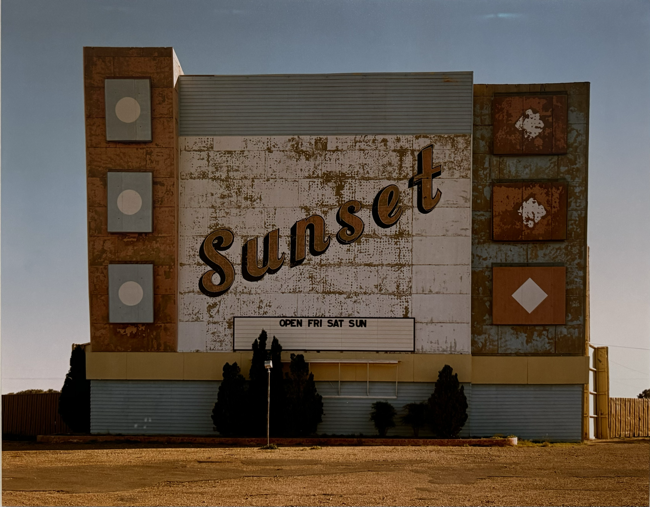

14 June 2024 – Trees in Between
At the edge between reality and dream, Dana Cojbuc’s work invites us into her fantasy world. Using her camera, she captures nature as it is—messy, chaotic, dark, intermingled and raw. She then expands these images with a charcoal pencil, creating an imagined world where trees have no beginning or end, gravity doesn’t exist, and the forest floats in emptiness. This unique fusion of photography and drawing results in a surreal experience that captivates the viewer. Her piece “Yggdrasil,” named after the great tree in Norwegian mythology that connects the heavens, earth, and underworld, is showcased at the small gallery “l’Angle” in Hendaye, France. During a residency in Norway, Dana connected deeply with the nature there, experiencing the sea, forest, and ominous skies. The residency offered her a unique opportunity to immerse herself in a landscape that is both rugged and mystical, filled with contrasts and dramatic beauty. The experience profoundly influenced her artistic vision. Photographing this reality wasn’t enough for her; she felt compelled to extend it into an infinite, imagined world that transcends the physical limitations of the environment she encountered. By blending these elements with her charcoal drawings, she created a seamless transition between the real and the imaginary, encouraging viewers to explore their perceptions of reality and illusion. The result is stunning, deep, and unsettling. Viewers find themselves torn between the photographic reality and the drawn fantasy, questioning where the boundary lies between the two. This tension is a deliberate aspect of Dana’s work. She seeks to challenge our understanding of what is real and what is imagined, blurring the lines until they become indistinguishable. Her use of charcoal in her work makes it rich in texture and emotion. Dana was present at the gallery to introduce her work and discuss her future plans, including adding color to her invented world. Her presence added a personal touch to the exhibition, allowing us visitors to gain deeper insights into her creative process and the inspirations behind her work. She explained how adding color could further transform her pieces, bringing a new dimension to her already dynamic creations. This next step in her artistic journey promises to open up even more avenues for exploration and innovation. As she continues to evolve and experiment, we look forward to witnessing the extraordinary worlds she will undoubtedly create.



25 May 2024 – A perfect Vision, in Hindsight and Foresight
“In Hindsight” is the title of an exhibition at Museum Hilvesum of the works by the Dutch photographer Rutger ten Broeke, at the occasion of his 80th birthday, showcasing a retrospective of his prolific career spanning over more than 60 years. For me, an occasion to discover this artist. The exhibit offers a unique opportunity to explore the evolution of ten Broeke’s artistic vision and technique, providing a window into his world of photography. One of the standout features of the exhibition is the way it is organized to reflect the different periods and themes that have characterized ten Broeke’s work – a journey through time and space of sorts. The early sections focus on his initial experiments with light and shadow, showcasing his talent for creating depth and dimension within the frame. These early works often depict landscapes and urban scenes, revealing ten Broeke’s keen eye for detail and his ability to transform ordinary settings into extraordinary compositions. Once moving through the exhibition, we come across ten Broeke’s powerful 10,000 portrait series. These portraits, people staring back at us, are a highlight of the exhibit, demonstrating his skill in capturing the essence of his subjects. Each portrait shows a sense of intimacy and immediacy between the photographer and the subject, allowing the viewer to connect with the individuals portrayed. I was pleased to meet Ed van der Elsken at an older age, staring at me with a wink in his eye, or Laszlo Moholy-Nagy leaning over me, with a grin on his face. Museum Hilversum, once more, surprises us by presenting yet another Dutch artist, known for sure by many, but until now, unknown to me.




20 May 2024 – When only Laughing remains
Boris Mikhailov is one of the most influential photographers to emerge from Eastern Europe in the latter half of the 20th century. Born in Kharkiv, Ukraine, in 1938, Mikhailov has developed a body of work that is as much about personal expression as it is about documenting the socio-political landscape of the Soviet Union and its aftermath. His photography, often raw and determined, captures the complexities and contradictions of life under Soviet rule and the subsequent transition period. Fotomuseum Den Haag opens the Ukrainian Diary in a large retrospective covering his work from 1965 to 2019. Mikhailov’s early work, starting in the 1960s, was shaped by his background in engineering and his experiences living in the Soviet Union. During this period, he began experimenting with various photographic techniques, often using expired film and unconventional developing processes to achieve unique aesthetic effects. His most favoured topic was nudes, which was frowned upon and could lead to losing one’s job or even straight to jail. Mikhailov lost his job but continued to push boundaries by mocking the Soviet propaganda and coloring black-and-white pictures. He persisted in developing his own artistic language to document everyday life in his country, with stunning at times humorous, pictures of his fellow countrymen, enjoying the sun or a bath at the seaside. Boris Mikhailov’s photography is a profound exploration of the human condition under the pressures of historical and political change. His work, marked by its honesty, innovation, and emotional depth, provides an invaluable record of life in the Soviet Union and post-Soviet Eastern Europe.






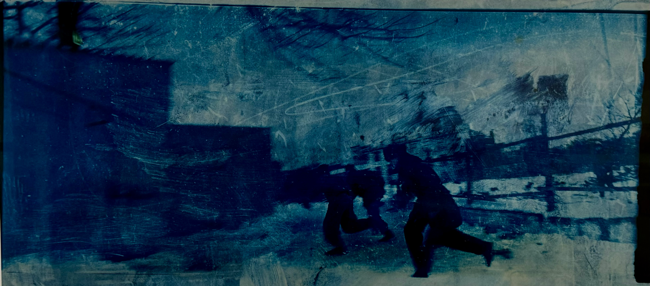
4 February 2024 – Going Local
Alongside his hymn to the yéyé years, Jean-Marie Périer, who settled in the region, has taken the time to document the people from here “les gens d’ici”. The anonymous you meet everyday on the market, at the butcher or the baker. Those people that make the territory between Villefranche de Rouergue and Villeneuve genuinely unique. The people of Aveyron, most of which were born and raised here and who work to make a living in their village or town. The result is a lovely gallery of portraits from the none strangely associated to Jacques Dutronc, to Mr Condamines presenting his cheeses on his chest or Mr Gardelle rocking his baguette like a baby. The yéyés are far and the people from here more real and important than ever.
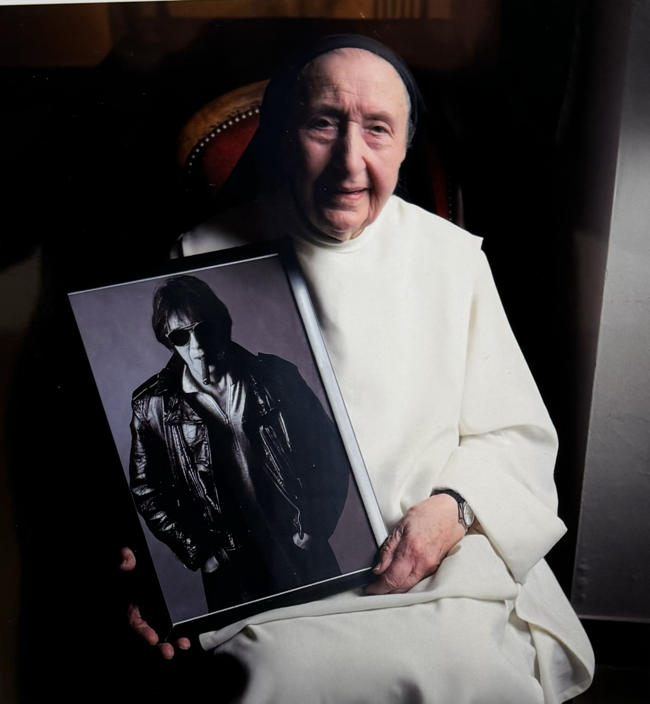




4 February 2024 – Yéyés in Aveyron
Between Villefranche de Rouergue and Figeac lies the beautiful village of Villeneuve, seat of a very special and unexpected maison de la photographie nested in the tourist office: Jean-Marie Périer, a famous photographer of the yéyé period, later film maker, has settled there and created this museum for his photography, in a medieval building, on two stories in the heart of the village. This is a trip down memory lane, that of Salut les Copains, and all the stars of that period, fallen and forgotten or still active and famous, a piece of French history from the sixties onwards. International stars are not forgotten from the adolescent Rolling Stones and Beatles to Bob Dylan or Chuck Berry. Périer has known and photographed them all. We can enjoy the candid shots of Françoise Hardy, Sheila, both dressed as Bécassine, or Johnny Halliday, Eddy Mitchell, Dutronc, Berger and France Gall. All amazingly young, alive, happy and jumping, bursting of energy. A sweet and fun exhibition, reminiscent of that time of carelessness and confidence in the future. The time of the Yeah! Yeah! Of the yéyés.




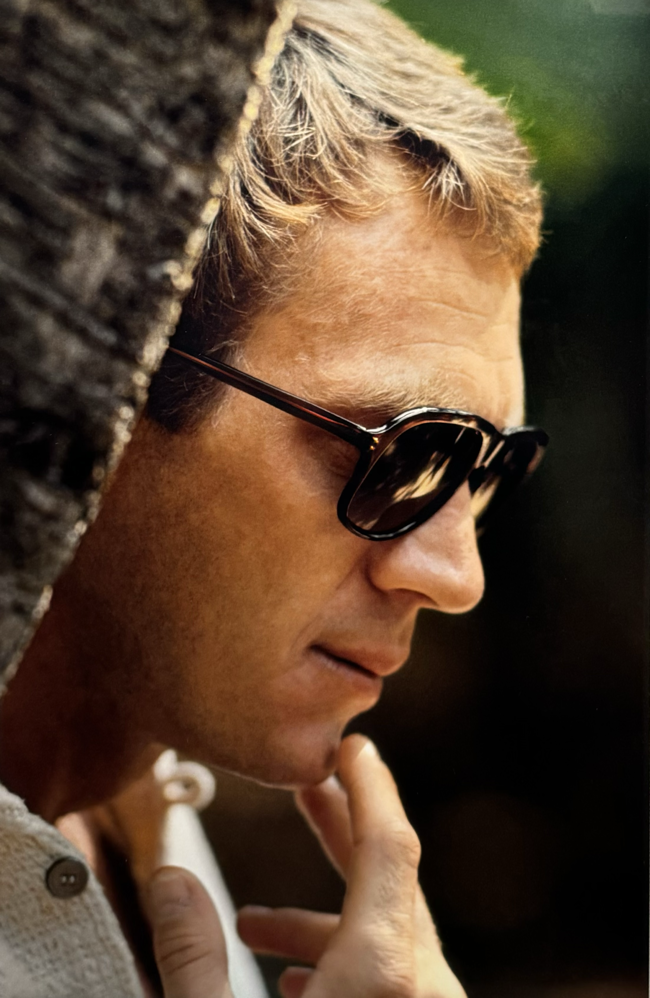
1 February 2024 – Art Rotterdam
The yearly event Art Rotterdam is always a good occasion to check out the latest trends in modern art and contemporary photography. Galleries from all over Europe gather in the iconic van Nelle factory and compete for the most outrageous or unique offerings. It goes from the ugliest (like this purple and pink styrofoam and polyurethane bas-relief titled « United Nations » by Folkert de Jong) to the strangest like this huge rabbit made of straw by Erik van Lieshout (I wonder who can buy and display such a piece) to the brightest, the gloomiest, the most expected, the most conventional or, at times, the really special: I enjoyed the small sculptures of Ossip, mixing and assembling books, photography, wires, like the two sculptures inspired by Belle de Jour, the book written by Joseph Kessel. All in the eye of the beholder and the wallet of the potential buyer. Photography is not left behind with again the same range of displays and offerings. My selection is very subjective and I went to what caught my eye, ending up revisiting some familiar photographers, rather than stopping for the bright and shiny. Julie Cockburn, already seen at Unseen (if at all possible) continues to embroider old photographs, giving them a pleasant and colorful twist. Homayoun Sirizi employs the same technique planting coronations on older Iranian revolution photographs, rooting them in the present, outside of the frame. Lisa Sartorio represented by Galerie Binôme revisits places destroyed by war, and reenacts the destruction with the palm of her hands, using a high quality soft Japanese paper, giving a vivid and present view, almost fairytale-like of the explosions. Her ambition is to continue with other places where war occurs – a never-ending task, I am afraid. Binôme presents also the interesting work by Laurence Aëgerter who revisits the magnificent skies painted by Ruisdael and attracts the astute eyes of the Dutch collectors as something yet familiar but new and different. I also enjoyed the paper cuttings of Thomas Manneke giving to his photographs a third dimension, the familiar presence of Johan van der Keuken and the clair-obscure portrait by Harold Strak. These pieces, presented in the always impressive van Nelle factory, make for a pleasant afternoon.





27 January 2024 – Lucebert in the Limelight
My knowledge of the Dutch culture expands daily with new discoveries, This time, I came across Dutch poet Lucebert, an artist, dubbed as “poet of the COBRA movement”, determining in the art movement of the fifties and also famous for the following verse “All things of value are helpless”, mounted, irony, on the roof of an Insurer in Rotterdam in the 1970’s. What I did not know, is that Lucebert, as a complete artist, was also an astute photographer. In honour of his 100th birthday (he was born in 1924 and died in 1994), Fotomuseum Den Haag has organised an exhibit showcasing his talent, mainly exercised in the 50’s and 60’s. Poetic photography, nostalgic pictures of the circus, intuitive shots (he was autodidact) breaking away from the conventions of the time. Lucebert was more attempting to capture the unspeakable, the untouchable, the indescribable. Enough food for thought for a pleasant experience, browsing through beautiful vintage black and white photographs of people, situations and places.







27 January 2024 – (Extra)ordinary People
When ordinary is extraordinary. For sure, Rob Hornstra’s characters are ordinary but at the same time far from ordinary. And yet, they are you and me, your neighbor, the shop keeper at the street corner, your cousin, as long as they carry a Kalashnikov and fight to survive in difficult circumstances or impossible climates in Russia, Iceland, Abkhazia or elsewhere. Fotomuseum Den Haag offers a large retrospective of his work around Europe. A gallery of portraits of ordinary hard working people with a plus: a past, a history, a background. The photographs are impeccable and strengthened by the stories that go with them. A child in a shelter, poor paysans in a remote village of Abkhazia, survivors of terrorism, nostalgic of the good old days of the nazis or communism, or simply butchers at their store staring at you with blood all over and a big knives in their hands. What sentiments about mankind? one reaction could be to want to escape as far as possible and let everything behind with a feeling of helplessness or one could be to want to read all these stories, reflect, and form compassion for your fellow human beings, wherever they are, whatever their backgrounds, their nationalities, they are humans, like you, with their history, fears, desires, limitations and beauty. In that sense, these ordinary people are extraordinary. Hornstra follows the work done by August Sander who relentlessly portrayed the German people in the early twentieth century, but the colours, the actuality of Hornstra’s photographs make it more vivid and straight in the face than the beautiful vintaged black and whites of Sander. The small sampling below shows only photos taken in Russia, but I could also have selected pictures taken in Iceland, The Netherlands, or elsewhere, and these would have provided the same sense of profound connection with humanity.


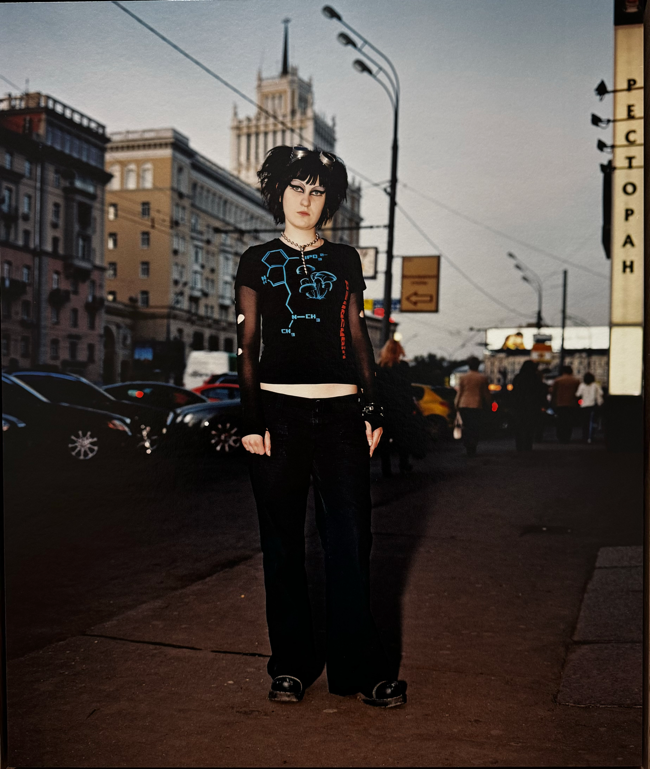

13 January 2024 – Mode in Mood, Mood in Mode
As often, I did not know the existence of Anton Corbijn before attending the large retrospective of his work at Cobra Museum in Amstelveen. An enigmatic title “Moød” welcomes the visitors: “Mood” with the second o scratched and an e added to form the word “Mode”, thus the title of this entry, Mode in Mood or Mood in Mode. These two words however represent well the work of Corbijn. Pictures full of atmosphere, giving a certain mood, and the constant link to fashion and mode. Whether it is Vanessa Paradis in Chanel or Adut Akech in Alexander McQueen and many more. Corbijn worked for Elle, Vogue and other famous glossy magazines. At the same time, he is not a pure fashion photographer. He also photographed many famous artists for NME (New Musical Express), the not less famous British musical magazine, at the spearhead of the latest musical trends. It is an enchantment to see and recognise Bryan Ferry, Iggy Pop (not too difficult as he rarely wears a top), Paul McCartney, Chrissie Hynde, Annie Lennox or Elton John. Another incredible display by the Cobra Museum, celebrating this year the 75th anniversary of the Cobra movement, but that’s an all other story.

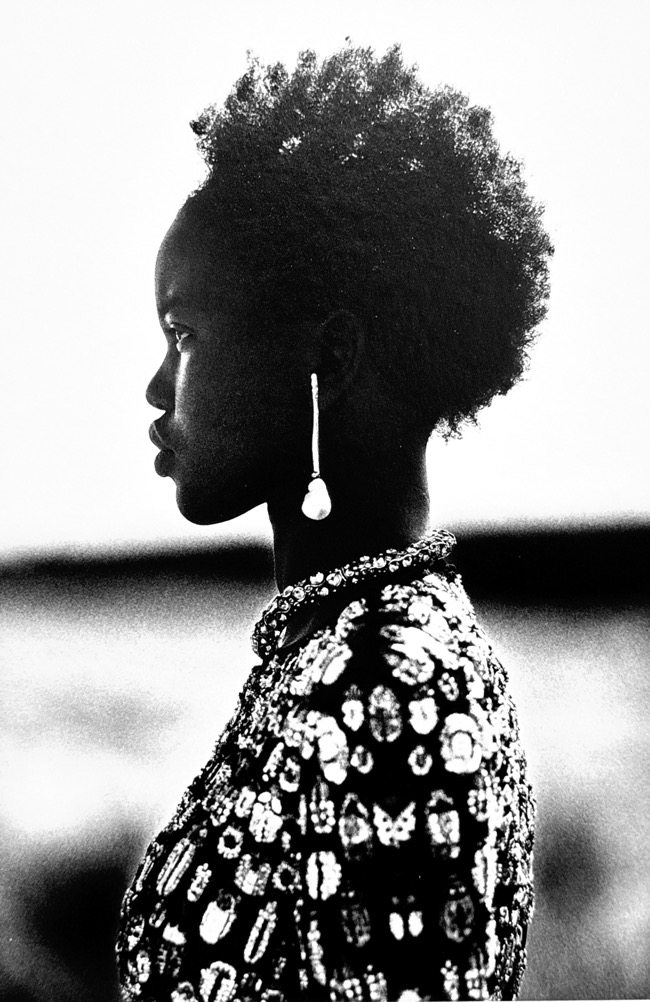



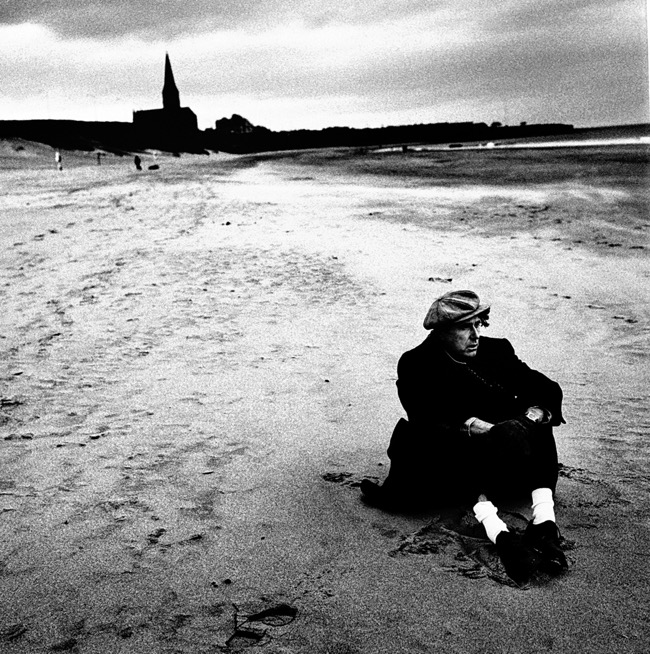

4 January 2024 – Soul
Japan remains a fascinating place to me. Its landscapes, its people, its history and culture are sources of excitment, thrill, happiness, surprises. Sufficient motivations to visit the current exhibit in Musée Guimet “An ephemeral portrait of Japan” before it is too late. Photographer Pierre-Elie de Pibrac has been several times to Japan. His project Hakanai Sonzai took eight months of research and patient approach to people. The result gives a gloomy portrait of Japan. People look sad and lonely, lost in their thoughts, in their most intimate self, questioning their own existential presence, unreachable. Is that the Japanese spirit we see or is it that after the photo was shot, the characters turn to the photographer in a big smile and laughter? The exhibition continues with a differnt series Mono no Aware depicting well carved black and white lansdcapes and natures mortes. Unsettled and improbable buildings and places, emptiness, with a certain nostalgy of a brighter past. This exhibit allows the viewer to dig deeper under the varnish and get an insight of the Japanese soul. Musée Guimet is full of wonders and serves well the cultural presence of Asia in Paris.





4 January 2024 – A Bicyclette…
“If you leave early in the morning, If you go on these roads, By bicycle, We were a bunch of good friends, There were Fernand and Firmin, There were Francis and Sébastian, And then Paulette”… It is with these words that the song by Pierre Barouh and Francis Lai, greatly interpreted by Yves Montand starts. In this case, they could have changed the name Paulette with Ruth. American photographer Ruth Orkin (1921-1985), internationally known for the photo titled “American Girl in Italy (1951)”, while still a teenager, undertook a bicycle ride – or rather a ride with her bicycle – across the United States from Los Angeles to the Atlantic, exploring on her way Chicago, Philadelphia, New York, Washington and Boston. On this coming of age journey, she took more than 350 photographs of urban landscapes, people, self-portraits and carefully crafted compositions involving her bicycle. She became famous along the way, got interviewed by local newspapers, as after all, she was only 17 years old and it was 1939. After that, Ruth continued a career in photography, working for Life magazine among others, traveling to Israel and Italy. The Fondation Henri Cartier-Bresson gives a large account of this journey and her later work, in an exhibit showing more than 40 pictures and associated documents, giving Ruth Orkin the place she deserves in the gotha of women photographers. Charming and fresh photographs, like her “American girl in Italy”, reminiscing of Audrey Hepburn in Roman Holiday.






3 January 2024 – Black And White Symphony
Paul McCartney and Stevie Wonder were singing Ebony and Ivory in 1982, a song, metaphor, aligning the black and white keys of a piano keyboard with the theme of racial harmony, between blacks and whites. 2024, the Bibliotheque Nationale presents, at its marvelous François Mitterrand site, “Black and White: an Aesthetic of Photography”, a very large exhibit, entirely based on its own collection, celebrating the black, the white and the millions of nuances of grey in between, so characteristic of photography, from its origins in the 19th century to today. Most heavyweights are represented, from Henri Cartier-Bresson to Daido Moriyama through Félix Nadar, Robert Frank, William Klein, Willy Ronis and many more (200 of them), representing 37 countries and all streams of photography. A real full-bodied symphony with all the richness of the strings, woodwinds, brass and percussion. By choice, the 300 photographs exhibited are not presented chronologically, but more by themes, with a mix of periods, from the 20th and 21st century. The viewer is thereby invited to focus more on the graphical contrasts and the play of light and shadows offered by black&white photography. whether it is with landscapes, portraits or details, we are exposed to the wide range of artistic creation throughout more than 100 years of photography. From the black and white imposed by the techniques available at the time to the conscious choice of representing the world in all the shades of grey between pure black and pure white. Not to forget, the first monochrom photographs presented, dating back to the late 19th century, were more blue or sepia than black& white. I was fascinated by the pictures of his children taken by Emile Zola and the portrait of a young Sarah Bernhardt by Félix Nadar. To finish the exhibit, a ribbon shows the richness of the shades of grey from lowkey to highkey, from almost black to almost white. Stunning to see those photographs side by side, ordered in that fashion.








16 December 2023 – Picture Perfect
There is little to be watched on TV in general and on Dutch TV in particular. There is however this program “het perfecte plaatje”, the perfect picture in which famous Dutch people compete in weekly challenges to deliver perfect pictures. Up to them to decide how to deal with the requirements. Once completed, their work is judged by a panel of photographers and some go through to the next week, some are eliminated. Reality TV is not my thing, but in this case, you follow the photographers in their struggles to find the right subject, angle, light, expression, to realize the shoot, select their pick and receive judgment, The full artistic process is thereby followed. It is interesting and entertaining. The winners of edition 2023 (Spring and Fall) are presented in Museum Hilversum. One only sees the result of the above process, not the process itself. What to think of it? In this case, I came to the conclusion that seeing the person developing from idea generation to realization was more interesting than seeing the actual results without explanations. In any case, an entertaining exhibition of good photographs, probably not all perfect as expected but surely the result of a labor of love by the artists.

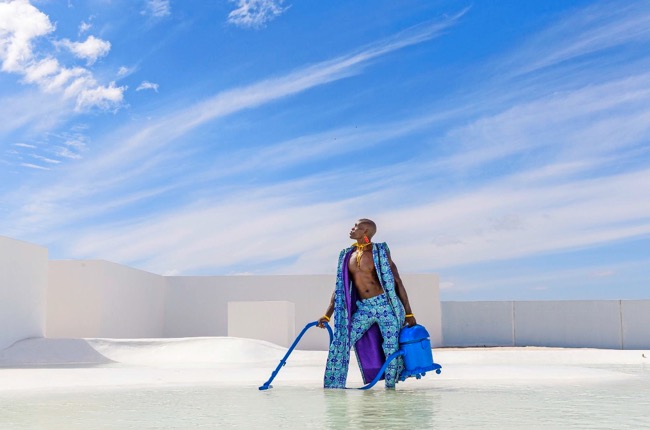

16 December 2023 – Remembering Madiba, bye-bye illusions
The year was 1990. A century ago. Live on CNN on February 11th, an older man with grey hair wearing a grey suit was released from prison in Cape Town in front of the world. He was grave but smiling and waving at the cheering crowd assembled to meet him again, after 27 years in prison. His right fist closed and raised, defiant, with Winnie at his side smiling. Madiba. Nelson Mandela had disappeared from view and from photographs in 1964 after giving a speech at the conclusion of his trial, where he was convicted and received a life sentence. He was then a young man in his 40s, a former boxer with full cheeks, a beard and a mustache, his hair parted in an odd way. From 1990 until his death in 2013, a Nobel price, the end of Apartheid in South Africa, a presidency, world fame, a rugby world cup and many more events, he was under the scrutiny of photographers from around the world. A charismatic figure, a cheerful man despite all what he went through, a smiling human being, probably deeply good in his soul. Museum Hilversum presents an exhibit featuring Dutch photographer Ilvy Njiokiktjien and South African photographer Gideon Mendel, both “Remembering Mandela”. A good mix of photographs following Madiba throughout his political appearances post 1990 for Mendel, a large focus, in colors, on the free society created after the end of Apartheid for Njiokiktjien with series like “Pray for Mandela”, “last farewell” and her “Born Free, Mandela’s generation of Hope”. What to think of it? Yes, whites and blacks mix in today’s South Africa. They seem to live alongside each other rather than with each other. In most cases, the society is still divided, the rich and the poor, the privileged and the others, the ones with opportunities, those without. Illusions of a united society?





9 December 2023 – Sane/Insane
“There’s a fine line between genius and insanity. I have erased this line.” This quote by an obscure American pianist, composer, author, comedian and actor Oscar Levant could have been made by Yayoi Kusama. Now 94 and living already since the 1970s in a mental health facility, Kusama was breaking all the conventions at an early age. Her art is populated by her obsession for phalluses and her hallucinations showing dense fields of (polka) dots. She spent 5 years in The Netherlands between 1965 and 1970 and the Stedelijk Museum in Schiedam gives an account of this productive time for her. That was the time of the sexual liberation, of protests and of happenings. Her activities, happenings and mode shows, were often fixed on camera by friends like Harrie Verstappen, Theo van Houts or Cor Stutvoet, and the museum shows some of the photographs, together with the pieces of art she created during those events, sculptures, paintings, clothes and installations. Why Schiedam? The reason for the exhibition there specifically is the controversial performance that Kusama delivered in the chapel of the Stedelijk Museum in 1967, in which she painted the naked body of the well-known Dutch artist Jan Schoonhoven with dots. I have seen a much larger exhibit by Kusama in Singapore but this one, in the classical environment of the chapel built in 1787, gets a special spot because of the steep contrast with the work of Kusama and allows a further reflection on the concept of sanity-insanity.





2 December 2023 – The left (brain) of Linck
Frederick Linck was likely right-brained, being a photographer, creative and artistic. He was also left-brained with his methodical capturing of the people around him, on the street or in their daily activities. He often found his subjects in his immediate surroundings. People he met inspired him to ‘communicate through the camera’. After his passing in 2020, his estate donated 150 of his photographs to the Hague Historical Museum. The result is an exhibit providing a unique portrait of that city in the 1970’s. The Hague in the 1970’s was very different from today. It was before the gentrification and the rise of modern buildings. The population was less diverse than today, living their lives in their neighbourhood, shopping on the market or in the traditional stores, butcher, grocer, Fruit & Vegetable vendor, working in the shops, drinking coffee or a beer at the local brown café. Looking at these pictures has a taste of nostalgia, of a world that was and that is no longer. Frederick Linck had the passion to document that world and to give us, fifty years on, an account of how it was back then. Although I don’t have specific connections with that city at that time, I still feel the value of the sharing for the future generations.

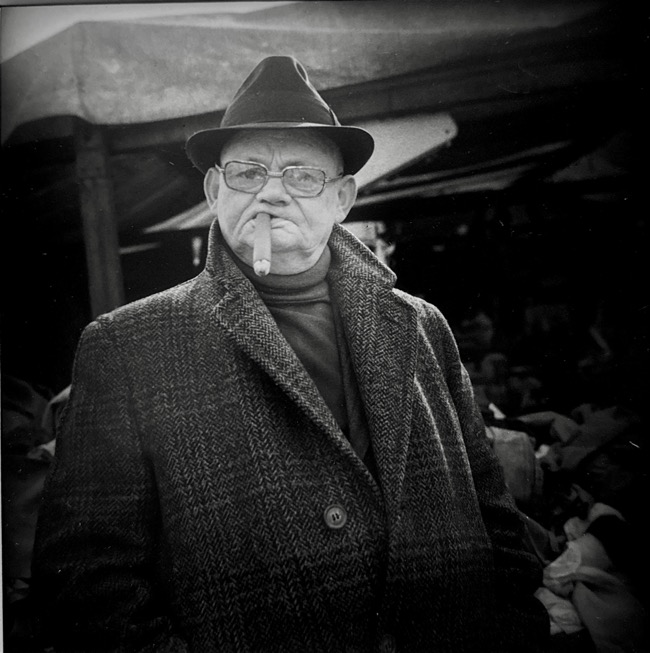



11 November 2023 – Veteran’s Day
A large retrospective of Daido Moriyama constitutes, by itself, a very good reason to travel to London. The greatest living Japanese photographer, born in 1938, a veteran, has been very productive throughout his life, and a great inspiration to many. From the American occupation of Japan, through the 60’s and 70’s, Daido Moriyama is particularly famous for his dark, grainy, at times blurred, often random, photographs of Tokyo and other cities. His pictures have a rough, bold look with strong contrasts and grainy textures. Shadows in his pictures create mysterious and sometimes spooky feelings. He takes pictures of everyday people in everyday situations, stray dogs, city scenes, and quick moments of connection between people. Moriyama’s photos often have tilted angles and unexpected views that make them feel organic and alive, just like the busy pace of city life. His pictures don’t just show what things look like; they make you feel you are part of them. They make you think about the real and not-so-perfect parts of life, going beyond what is typically seen as beautiful or orderly. The Photographers’ Gallery gives us a large view of his oeuvre, on several levels of display, repeating ad infinitum some of his famous photographs on the walls (like his panty hoses) and superposing those with more orderly framed prints. I had already seen a large retrospective exhibit in Paris (as reported here) and preferred the former rather than the latter. Maybe having something to do with the way the work is presented. Nonetheless, a visit to London definitely worth the trip.
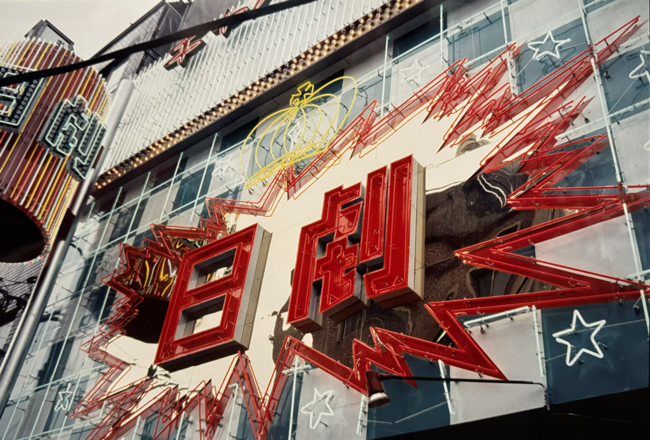


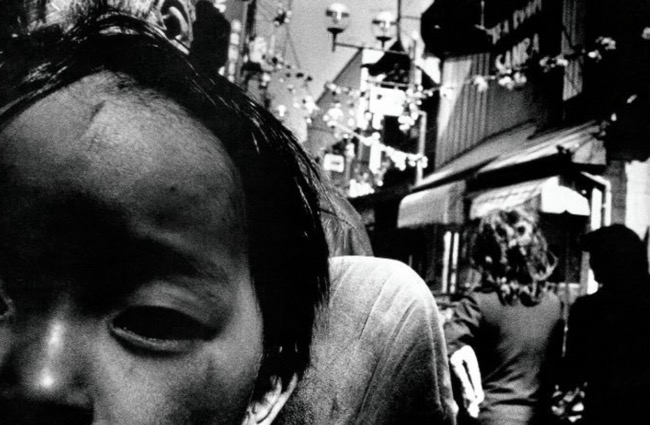
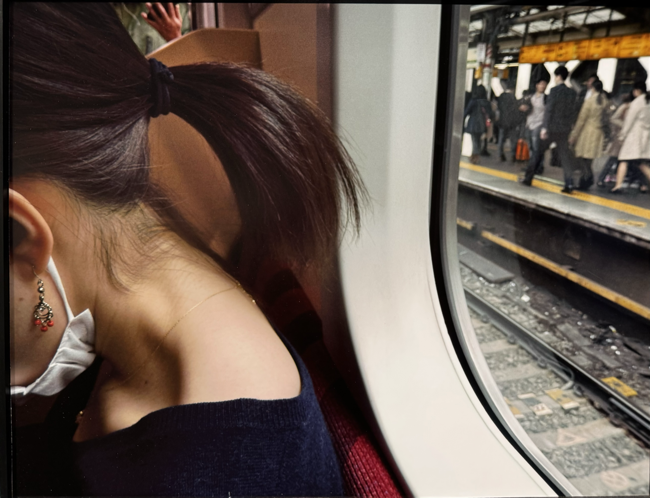


5 November 2023 – AAF Amsterdam
The Affordable Art Fair in Amsterdam is the yearly rendez-vous for art lovers of all sorts, from top notch connoisseurs ready to spend tons of money to enlightened amateurs looking for a good deal to just by-standers and young parents on an early morning leisurely stroll. The spectacle is as much on the picture rails as in the alleys of the location in Amsterdam-Noord. There is Art for all tastes to look at, admire, despise and possibly buy. I focused mainly on the photographs and found, like always, a few jewels. I particularly enjoyed the troubling portraits and body accumulations of Nanda Hagenaars (gallery Mick) and dwelled, as requested by the artist, upon the pictures of Joost Wensveen (Warnar and Warnar Art dealers) and not give in to the desire to simply swipe to the next. I finally spent some more times on the beautiful stand of “The Route Photography” Gallery, presenting remarkable photographers like Erdal Kinaci or Tahir Özgür that I decided to single out, among many more of high quality. I did not buy anything but could have easily indulged on many pieces, if I had extensive wall surface to cover with photographs. Or maybe it is soon time to invest in one of these remarkable Ionnyk digital art frame systems allowing a renewed bluffing experience of marvelous black and white photography.



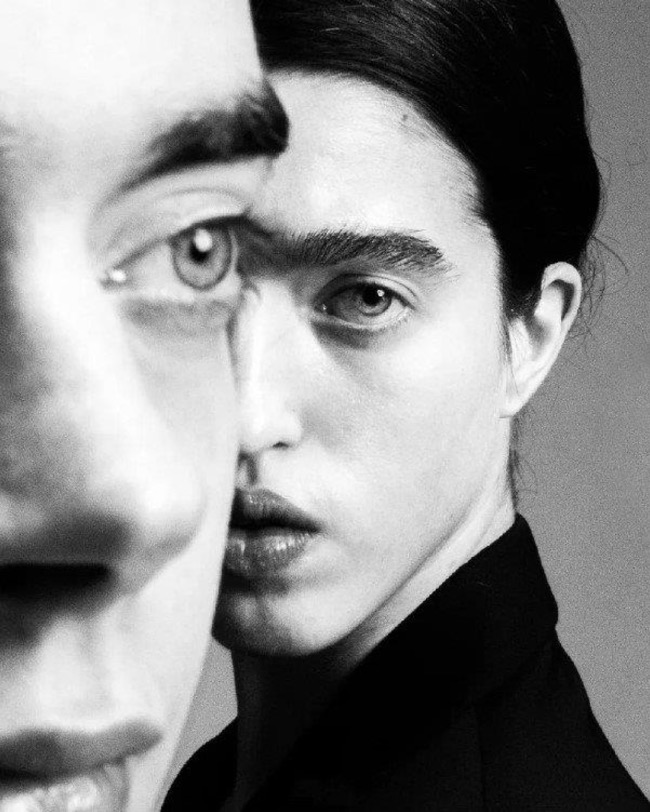
30 October 2023 – Not so Black and White
By one of these enjoyable life happenchance’s, I stumbled upon a wonderful photo exhibition in the corridors of the Amsterdam Medisch Centrum, a place that could easily be overlooked when going about your medical appointment. This time around, it is an old employee who was given the opportunity to present his incredible work. Iskandar Kley was working in the High Care department when he participated in the Creative Employee program. His life changed when he encountered a 1946 photograph by W. Eugene Smith “The Walk to Paradise Garden” depicting his two children, Patrick and Juanita, getting out of the darkness of a shaded area into the light of a garden. This image left such a strong impression on him, that he was influenced in his own photography ever since he first purchased a camera in 1977. The result is stunning, strong contrasts of dark and light, Dantean architecture, people in the streets in Japan, The Netherlands, Turkey or Paris, to mention but a few parts of the world where he took pictures. Amsterdam Medisch Centrum acknowledged and recognized his talent by exhibiting his work, just before his departure as an employee, under the title “not everything is so black or white”, giving a hint to the viewer that not everything can be easily categorized as right or wrong, good or bad. There are often shades of gray and complexities in various situations, requiring a more nuanced understanding and consideration. The photos of Kley invite the reflection about these nuances.





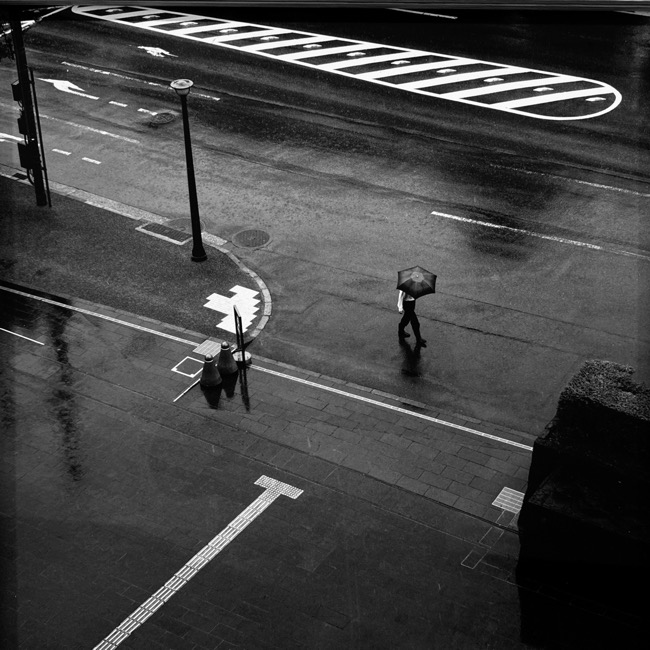

21 October 2023 – On the move again
Another large retrospective of yet another largely unknown (to me) Dutch photographer is presented at the Fotomuseum Rotterdam: “Ad van Denderen: On the Road” showcases the evolution of documentary photographer Ad van Denderen, on his way to better photography, personal evolution, etc. Over the last 55 years, he photographed Apartheid in South Africa, migration, and the never-ending geopolitical conflict between Israel and Palestine (just look at your news channel today), topics all very relevant today. Van Denderen studied at the Utrecht School for Graphic Arts and then traveled throughout Asia and the Middle East. In the years that followed, he photographed in places like Chechnya, Iran, Israel, the Palestinian Territories, South Africa, and Southern Europe. He also captured photos in the Netherlands, for instance in prisons at Kleine Gartmanplantsoen and Havenstraat in Amsterdam. The exhibition spans van Denderen 60 year-long career, showing his evolution as an artist. I was, as always, particularly attracted by his black-and-white photography of Gaza, Belgium, India, Egypt and Zaire.
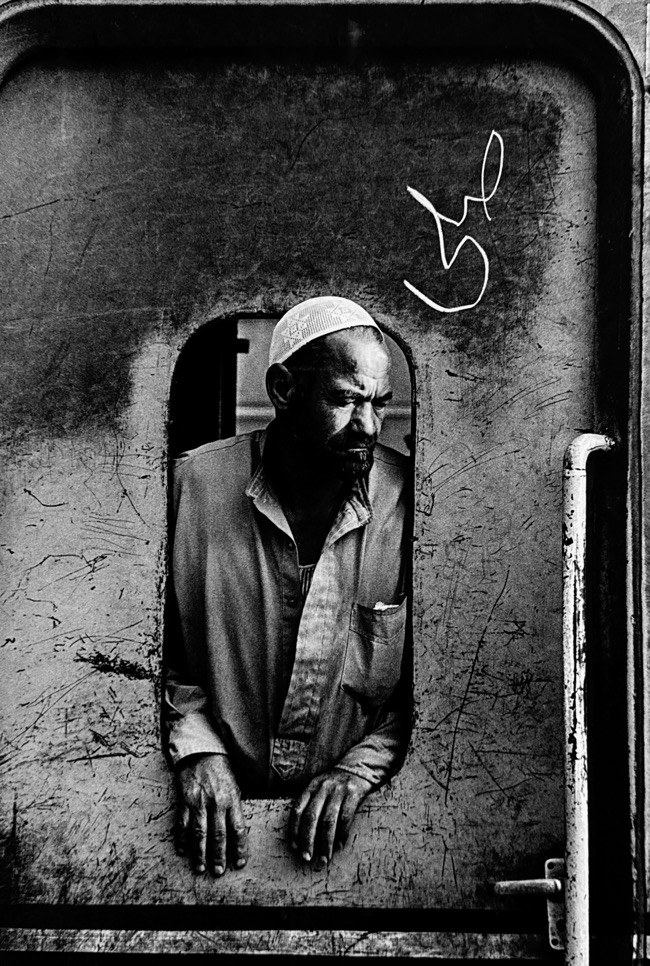
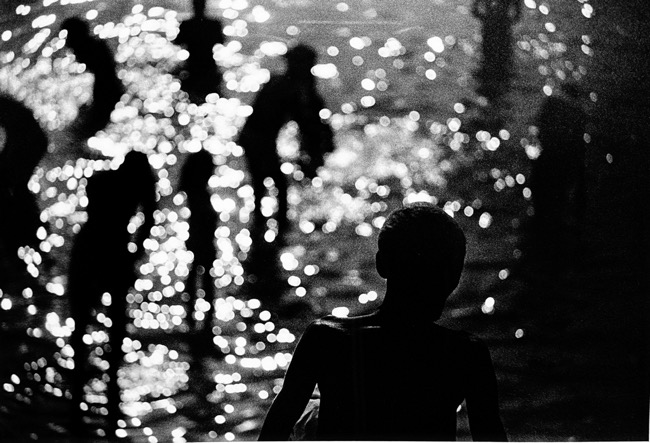
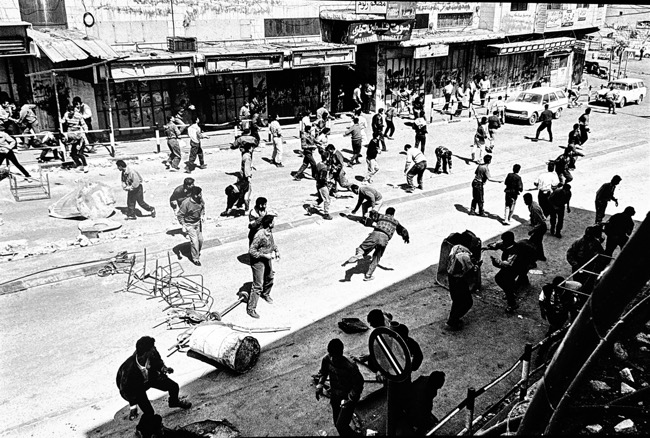
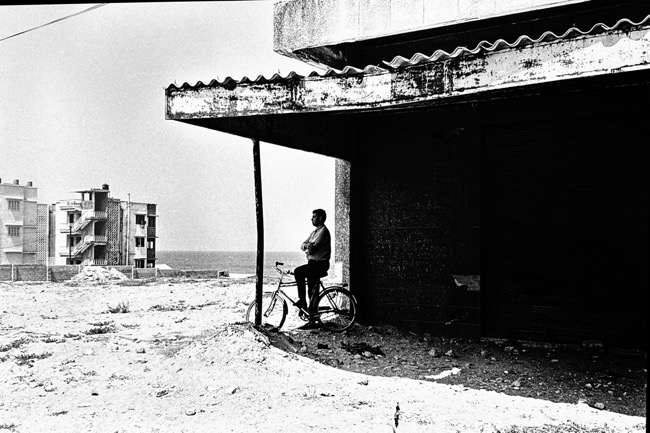
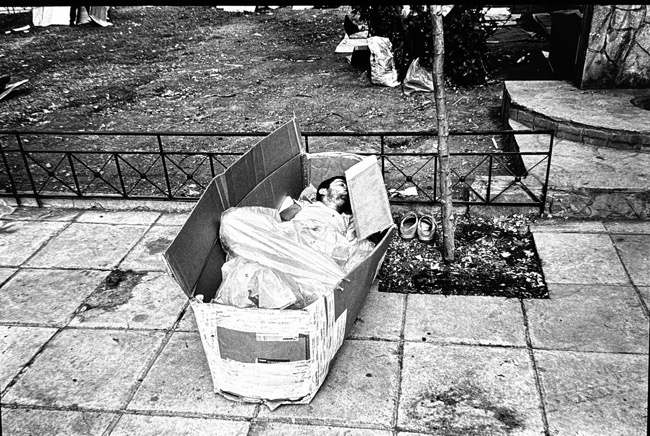



14 October 2023 – Güler Shadows
Ara Güler’s early photographs are unique and yet familiar. A renowed Turkish-Armenian photojournalist and photographer. Born in 1928, in Istanbul, Turkey, and passing away in 2018, Güler left an indelible mark on the world of photography. His work primarily focused on documentary and street photography, capturing the essence of Istanbul and the soul of its people in a way that was both captivating and timeless. His black-and-white photographs, a Play of Light and Shadow, as the exhibit at FOAM Amsterdam is titled, remind me of the photographs of Brassaï, at the same period. With strong compositions and deep contrasts, Güler walks us through the streets of Istanbul and makes us meet its inhabitants. At times reaching abstraction, his silhouettes and compositions are haunting us. Throughout his career, Ara Güler was recognized with numerous awards, including the title of Master of Leica, and he was a member of Magnum Photos. His photographs have been exhibited in galleries and museums around the world, and it was time FOAM recognized him as such with a major retrospective.





8 October 2023 – Photo Blossom
Japan remains a fascinating place to us, occidentals. The closest we can get to it in The Netherlands is in Leiden, at the SieboldHuis. This institution regularly puts together high quality exhibits of Japanese art under all its shapes and themes. Photography is indeed one of them. This time around, under the title “Japan on a Glass Plate”, over 150 hand-coloured photographs offer a unique insight into late 19th-century Japan. The Kurokawa Collection is one of the most important and extensive private collections of Meiji photography in the world, and it is shown in Leiden. The pictures of photographers such as Kusakabe Kimbei, Baron Raimund von Stillfried, Adolfo Farsari, Tamamura Kozaburo, Ueno Hikoma and Shimooka Renjo are presented. Photographs were captured in black and white at that time, but painstakingly hand-painted thereafter, giving a stunning and vivid view of Japanese society. Some of the photographs exhibited were already admired at the Veuve Ambal exhibit in Beaune, as reported in this blog. Sumo fighters, tattooed gang members, Samurai, Geishas, Cherry blossoms, all these elements collectively represent different facets of Japanese culture, both past and present, and they all do indeed feature various colorful aspects. The use of vibrant colors on these pictures is adding to the richness and visual appeal of the culture, ensuring a feast for the eyes.








23 September 2023 – Happy Happenstance
In the series of happy happenstances that life brings, I met Abed Abidat during Unseen. He was there to present the books his Marseille-based publishing company “Images Plurielles” has produced. Marseille is the captivating Mediterranean port which serves as the gateway to Northern Africa, with a rich history and a diverse culture and population. The books presented reflect that connection to the Mediterranean world like for instance the marvelous “Son Oeil dans la Main”, a fortunate collaboration between Raymond Depardon and Kamel Daoud exhibited at L’institut du Monde Arabe en 2022 and presented in this blog. Abed caught my attention with a splendid book “Algeroid”, result of a remarkable work. Abed spent several years in Algiers, taking pictures of people and locations with an instant polaroid camera. This approach allowed him to weave direct links with his subjects as he was able to hand over the polaroids directly. His work went however one step further: retaining the negatives, scanning them and inversing them with a software gave the remarkable pictures presented in the book: stunning views and portraits with a slightly outdated and nostalgic flair.





23 September 2023 – Unseen seen
Unseen is the photography long-awaited annual rendez-vous in Amsterdam. A place where almost 70 galleries from all over the world gather and showcase artists from everywhere, every genre, making it a fair not to be missed. However, the challenge lies in the sheer volume and diversity of photography on display in the circular fair area. From the whimsical and ostentatious to the contemplative and classic, from the boundary-pushing (!) avant-garde to the soul-stirring and sensitive, from the brightest colours to the darkest black and white, Unseen offers a wide spectrum of photographic expressions. Consequently, visitors face the difficult task of making selections from this rich and broad tapestry of creativity. It is, of course, an inherently imperfect process, as by necessity, some exceptional artists will regrettably go unnoticed or unselected. Browsing through the galleries, from Paris to Istanbul, from Amsterdam to Cape Town, progressing in zigzag between the walls covered with photographs, I came across some remarkable artists, like Didier Engels and his accumulations of containers, largely unnoticed as an artistic object, or Jacob Aue Sobol of the prestigious Magnum agency, Jonas Bjerre Poulsen and his delicate compositions making me immediately think of Japan, Ali Bilge Akkaya and his uncertain architectural constructions extending beyond the limits of the photograph onto the frame, or Anna Lanza with her remarkable metaphysical landscapes. Unseen is a feast for the eyes and for the soul. I am looking forward to the 2024 edition.










22 September 2023 – Sal before Gado
The name Sebastião Salgado is synonymous with breathtaking photography and unwavering commitment to social and environmental causes. Born in Brazil, after pursuing a career in economics, obtaining a PhD and working for the International Coffee Organization in London, his path would take a dramatic turn when he picked up a camera for the first time during a trip to Africa in the early 1970s. This moment marked the genesis of his transformation from an economist to one of the world’s most celebrated photographers. Before Salgado became a world star with projects such as “Workers”, “Genesis” or others, After working for the French photo agency’s Sygma and Gamma, he joined Magnum Photo’s in 1979. He left Magnum in 1994 and formed his own agency, the Paris based Amazonas Images. All the picture stories that Salgado produced from the early 80’s to the 90’s was on negatives. The stories were printed in the dark rooms of his studio and the prints distributed to a select group of leading Photo Agencies worldwide such as the Amsterdam based ABC Press. Salgado’s photography was not just about capturing images; it was about storytelling. With a deep reverence for humanity and a desire to shed light on its most pressing issues, he travelled the globe, documenting the lives of marginalized communities, the plight of refugees, and the consequences of environmental degradation. It is this period of his long career that was displayed extensively on the walls of Haute Photographie 2023 in Amsterdam. Photos never seen before and profoundly human. Sebastião Salgado’s legacy extends far beyond his remarkable pictures; it is a testament to the power of compassion, storytelling, and the enduring impact that one person can have on the world. His work remains an enduring source of inspiration for me.





22 September 2023 – New Heights
Haute Photographie has become a regular event in the world of photography, a unique international photography fair: once organized in Rotterdam and once in Amsterdam. The latest edition has taken place from September 20 to 24, 2023, in Amsterdam Noord, featuring an impressive lineup of over fifty (inter)national photographers. Roy Kahmann, the owner of Kahmann Gallery in Amsterdam, is the founder/curator of Haute Photographie and consequently, many artists represented by him are featured in this event. A few other galleries are present as well, together with independent photographers. Difficult to report here on so many artists, genres and styles. One spends some time there, browsing, negotiating steps in between a varied and colourful crowd in narrow corridors. An experience in itself. Photographs are generally of high quality, most artists are present and the focus is on selling. I particularly enjoyed the work of Ernst Yperlaan, and his haunted views of a completely empty Amsterdam, the portraits of Cooper Seykens, showing strong characters, the colourful Angola views of the French Laura Bonnefous, already noticed in a previous edition, or the monumental imaginary museum presented by Yani. I could have continued with many more artists and report on what I really did not like. Haute Photographie remains a high quality showcase of many talented artists, local or foreign. I am looking forward to the next edition, in Rotterdam, this coming winter.








7 September 2023 – Serendipity in Saint-James
Serendipity is one of the nice words of the English language. It is an unplanned fortunate discovery. This is exactly what happened while on a clothing spree at Saint-James. This small town in Normandy should be pronounced Saint-Jââââm and not Saint-Djèèèèmsssss. It is the hometown of the famous Saint-James brand of clothing. it is also a lively community putting together, once a year, an open air Photo Festival. The subject of this year “Rurality”. Eight photographers present their work throughout the village. Their names will remain unkown to most of us: Victorine Alisse, Elisabeth Blanchet, Jérôme Botte, Bruno Compagnon, Philippe Fauvel, Patrice Olivier, François Phliponeau and Hans Silvester, the most famous of them, former member of the Rapho photographic agency and now one of the last great independent photographers who present photogrpahs from his “Pastorale Africaine” book. By lack of time however, I only focused on the display of François Phliponeau’s photographs. Phliponeau is a member of ATD Fourth World, a NGO that works to overcome poverty by seeking out people living in the worst economic conditions and exclusion. As a writer and photographer, Phliponeau reports on people around the world struggling for survival. I particularly enjoyed his pictures taken in Madagascar.




6 September 2023 – Doisneau Nostalgia
Undoubtedly, Robert Doisneau stands as France’s most renowned and celebrated photographer. I stumbled across a large exhibit of his work in Caen this Summer titled “The crossing of a Century”. Although his photographs are well known and visible everywhere, a short visit is always a renewed pleasure. His body of work, spanning the streets of Paris, the empty banlieue, and various other locations, possesses an uncanny ability to elevate ordinary moments into captivating and profound scenes. Through his lens, Doisneau’s photos weave a narrative that transcends time, rendering the everyday life of his subjects intriguing and brimming with significance. When you gaze upon Doisneau’s images, you are transported into the heart of the scene. His photographs exude the essence of joy, exuberance, and sometimes even romance, forging an intimate connection between the viewer and the individuals portrayed. In the midst of his photos, you become a silent observer, sharing the laughter, the tender moments, and the vivacity of life in his captured world. Doisneau’s profound influence on photography in general and on me in particular cannot be overstated. His pioneering approach to candidly photographing people in the streets, often without their awareness, gave rise to the genre we know as “street photography.” This approach democratized photography, allowing for the unfiltered and spontaneous documentation of urban life. In the present day, Doisneau’s photographs resonate with me with an overwhelming sense of nostalgia and longing. They serve as time machines, transporting us back to the post-World War II France – a bygone era I haven’t known, but certainly a France that does not exist anymore. Yet, Doisneau’s work endures as a source of inspiration to me and many more, a reminder of the beauty in the ordinary, and a timeless testament to the human spirit.


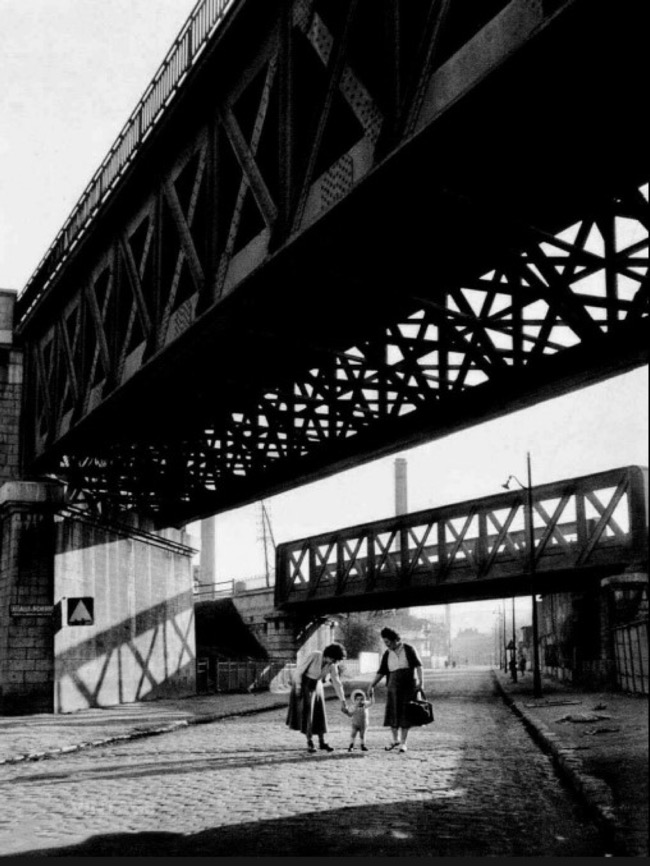
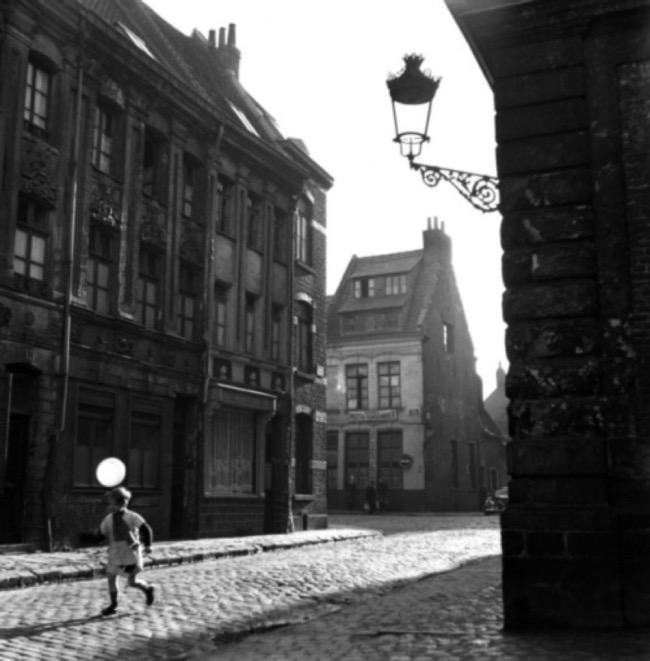

2 September 2023 – Sweet Zoetmulder
I discovered the photographs of Steef Zoetmulder at the occasion of an exhibition in the Rotterdam Kunsthal. After moving through the different levels and corners of the building, we finally found the small room dedicated to his work. Zoetmulder photographed a wide range of topics, not so much for the sake of the topic but more to explore ways to show things, patterns, leaning towards abstraction. As often the case, the first pieces are classical in nature, where as the most recent work is more abstract. The pictures diplayed in Rotterdam give thereby a good overview of his evolution as an artist. I was particularly attracted to his distorded colourful woman, very representative of his evolution. Steef Zoetmulder is possibly a lesser known Dutch photographer, but certainly worth a new discovery. This exhibition was made possible due to the collaboration between the Univeristy of Leiden and several associations, to revive the work of this important artist. Hundreds of vintage prints and contact sheets were exumed from oblivion to be saved and displayed.




26 August 2023 – Footsteps
To complete the survey of “Women at the front”, I cannot not mention the last three photographers presented: Susan Meiselas, Carolyn Cole, both still active, and Anja Niedringhaus who lost her life tragically at an Afghan checkpoint way too early and was robbed of many more photographs she will never make. All three are driven, dedicated, committed to report on what they saw, to share with the rest of the world human misery and suffering, the life and death of others. Whether it is Susan Meiselas in Nicaragua and El Salvador, Carolyn Cole in Iraq and Liberia or Anja Niedringhaus in Afghanistan or Iraq, these three women demonstrated courage and determination in their art, using their skills to convey powerful stories. Their work also serves as a reminder of the risks photojournalists take to document important stories and the impact of visual storytelling on our understanding of the world. The exhibit “Women at the Front” at the Fotomuseum in The Hague is wider in scope than the same seen in Paris a year ago, covers the work of the same exceptional eight women and hopefully will serve as a trigger for other girls to follow their remarkable footsteps.






26 August 2023 – Catherine, Françoise, Christine and the Others
These are Catherine Leroy, Christine Spengler and Françoise Demulder. All three born just after WWII. All three left a name as photojournalists, all before their time, a the top of a profession, supposedly reserved for men (the others). Catherine Leroy is well known for her coverage of the Vietnam War. She began her career at a young age and gained recognition for her fearlessness and dedication. She, a tiny fragile young lady, embedded herself with U.S. Marines, capturing the harsh realities of combat. Her iconic photograph of a wounded Marine being comforted during the Battle of Huế in 1968 remains one of the most powerful images of the Vietnam War. She continued to cover conflicts worldwide until her death in 2006, leaving behind a legacy of courage and exceptional storytelling through her lens but remarkably no book. Christine Spengler is well known for her work in war zones and conflict areas. Her career, spanning from the 1960s to the present, covers numerous conflicts and humanitarian crises. Spengler’s photographic style, characterised by unconventional techniques, creates hauntingly beautiful and evocative images amidst the chaos of war. She not only captured the violence and suffering of war but also the resilience and human spirit that endure even in the darkest times. Her work stands as a bridge between the brutality of war and the universal human experience. Françoise Demulder, who died in 2008, focused on social issues and human rights. Her empathetic approach to storytelling allowed her to connect deeply with her subjects. Demulder’s work shed light on the refugees, the struggles of marginalised communities, and the impact of conflict on civilians. She made history in 1977 by becoming the first woman to receive the prestigious World Press Photo of the Year award for her photograph of a lady imploring a Christian Phalangist in La Quarantine in Beirut. This specific achievement but also the legacy of Catherine Leroy and Christine Spengler shattered gender barriers in the male-dominated field of photojournalism and highlighted their exceptional talents in capturing the horror of war.

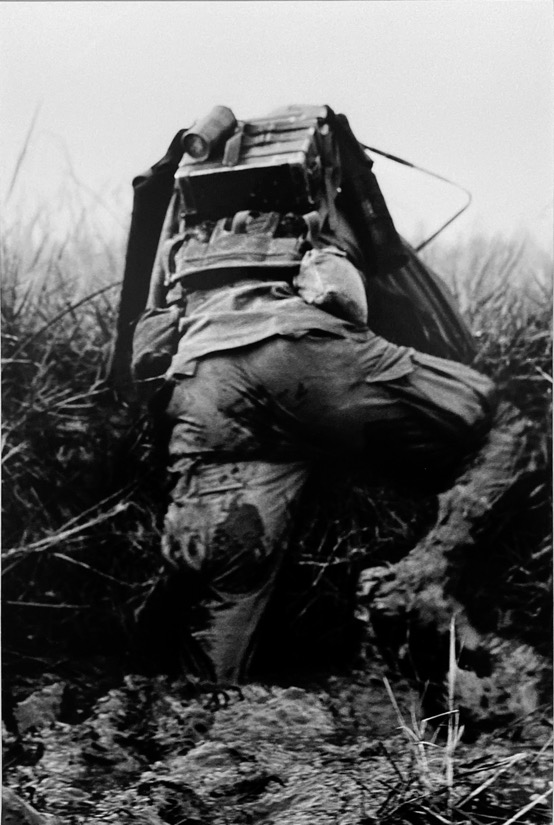



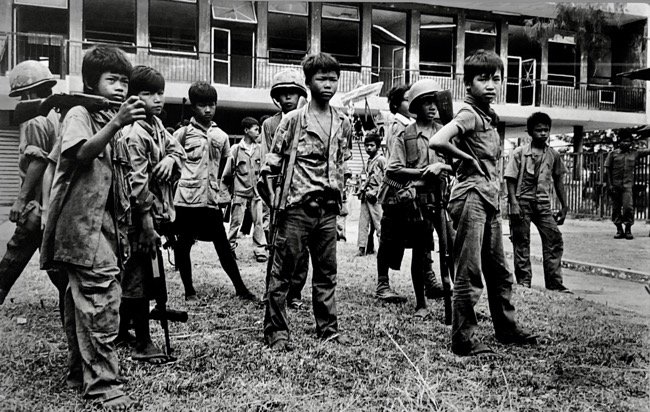



26 August 2023 – Pioneers
Two remarkable women photographers who made history in the world of photojournalism, at the beginning of the 20th Century are featured among the “Women at the Front” presented at FotoMuseum Den Haag. The exhibit is the same that I visited one year ago in Paris and that I reported here, under the title “Exceptional Women”. The two women are Gerda Taro and Lee Miller. Although they came from very different backgrounds and covered different wars, both shared a strong love for photography and a determination to challenge the rules of their time. Gerda Taro was born as Gerta Pohorylle in Germany in 1910. When the Nazis started persecuting Jews in the 1930s, she had to escape to Paris. Her experiences as a Jewish refugee deeply affected her work. She started taking photos in Paris and later went to the front lines of the Spanish Civil War with Robert Capa. Lee Miller, born in the USA in 1907, began her career in front of a camera, as a fashion model in New York. She then went to Paris and became a student of Man Ray, where she learned photography. She later covered World War II. Both of these women, even though they started their careers working with men, made a name for themselves through their photography. Gerda Taro’s life was cut short in 1937 while she was taking photos during the Battle of Brunete. But her legacy lives on through her impactful photographs, which continue to inspire people who want to become photojournalists. Her work, which was often mixed up with Robert Capa’s, is now celebrated for its strong emotions and personal look at the Spanish Civil War. Lee Miller’s career continued after World War II in different directions, but her photos from the war are still what she is best known for. Her pictures, with a honest and clear style, have left a big mark in the world of photojournalism. In the end, both are proof that with a strong dedication to your passion, determination and talent, you can break any barrier, no matter where you come from or what challenges you face. They both made their mark as pioneers in a field that was mostly led by men and remain an inspiration to generations of young women.



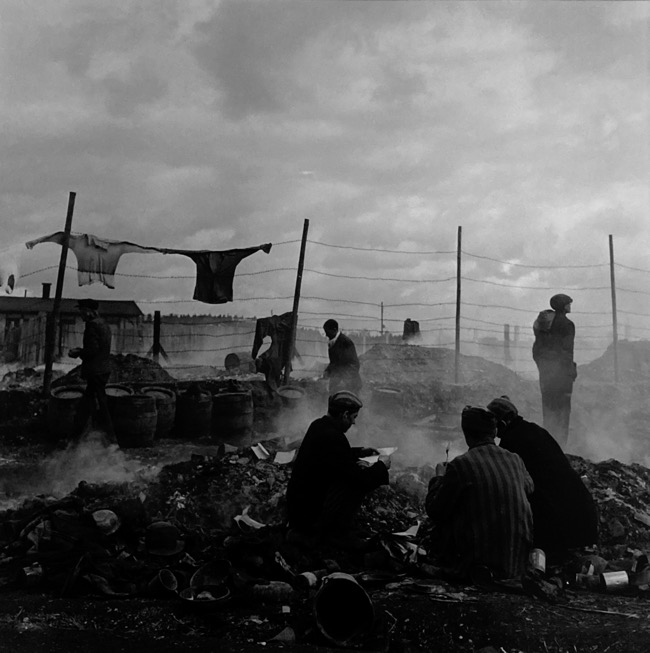


12 August 2023 – Frankly said
Robert Frank, a famous Swiss-American photographer who died in 2019, left an indelible mark on the world of photography with his groundbreaking work. His most renowned work, “The Americans,” which has a privileged position on my bookshelves, captured the essence of post-war America with a candid and unvarnished eye. Frank’s images challenged conventional norms of the time, offering a raw and authentic portrayal of American life, often tinged with a sense of alienation and introspection. His photography pushed the boundaries of documentary photography and had a profound influence on generations of photographers, including Henri Cartier-Bresson, reshaping the way we perceive the world through the lens. Robert Frank’s artistic vision and daring approach continue to inspire me and provoke thought today. The photographs on display at the MoMA are anterior to Frank’s work on “The Americans” and belong to a series titled “Black & White and Things”, assembled in 1952 (while “The Americans” was published in 1958). I don’t know how selected those photographs specifically in this particular way but wrote a statement to the effect that these were important to him, under a famous sentence from Le Petit Prince by Antoine de Saint-Exupéry’s “it is only with the heart that one can see rightly what is essential is invisible to the eye”. His message said, in a somewhat cryptic English “sombre people and black events, quiet people and peaceful places, and the things people have come in contact with this, I try to show in my photographs”. Seeing these few photographs from the original thirty four assembled by Frank is a delight for the eye, frankly speaking.



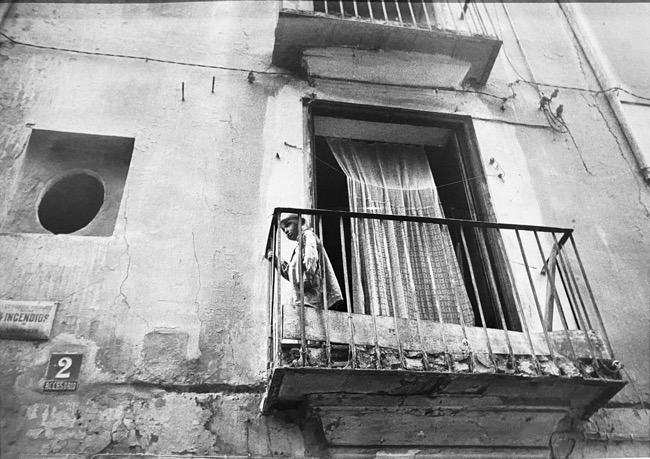
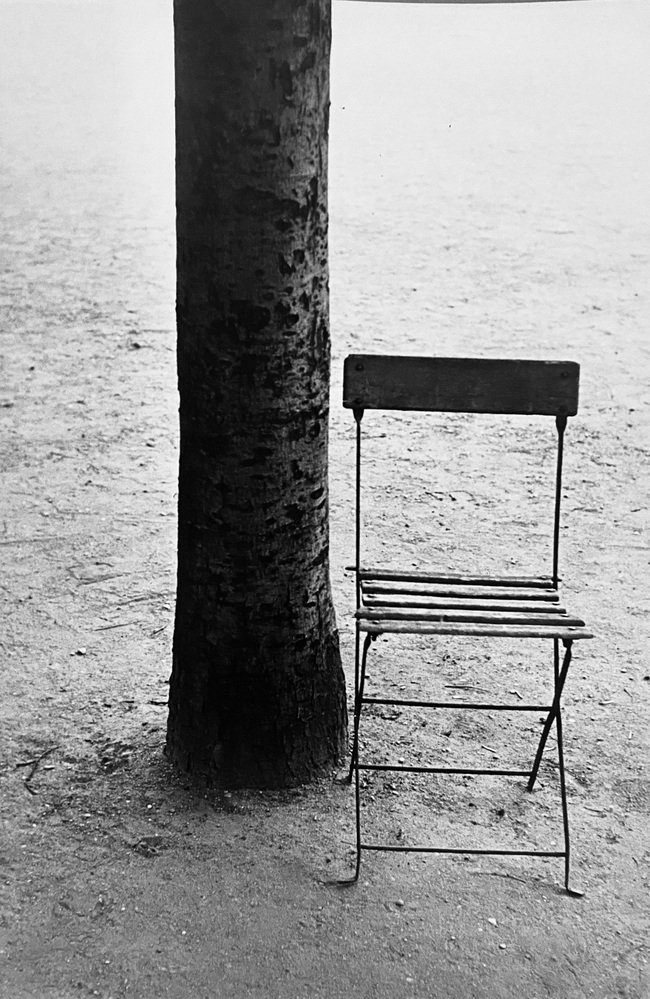
12 August 2023 – The Man who came in from the Cole
Continuing my exploration of the small scale exhibitions of the MoMA’s huge collection, I stumbled upon the “Ernest Cole’s House of Bondage” gallery, showing recently acquired photographs from his “House of Bondage” series, first published in 1967, and other material from various artists who took on the subject of apartheid in South Africa, in the footsteps of Cole. Ernest Cole was brave. He used his camera to show the world what life was really like for people who were treated unfairly because of their skin color. The pictures he took were not easy to take, but they told important stories about people who kept their dignity and strength even in very hard times. The exhibit did not just show Cole’s photos. The gallery pays homage to the legacy he left behind by also showing work from other artists who were inspired by him and shared their own stories about apartheid. Together, these artworks help us understand the past and how people stood up against injustice. In this special place, I felt like I was stepping into history and seeing how powerful art and photos can be. They remind us that even in very tough times, people can use their creativity to make a difference and help others understand what is happening in the world. This exhibit is a tribute to the strength of the human spirit in the face of difficult challenges.


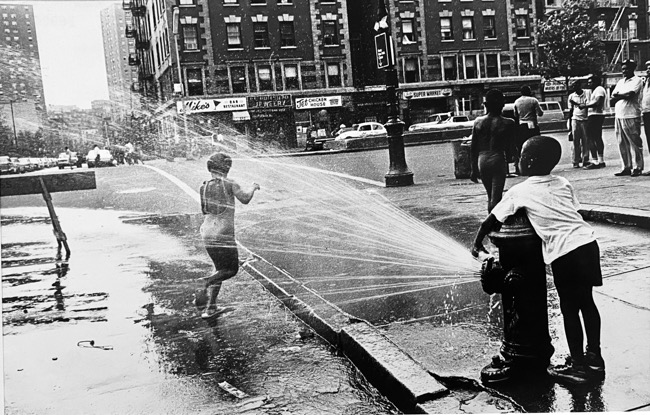




12 August 2023 – Modern Times of Wonder
Margaret Bourke-White embodied the intersection of modern times and technology. Her photographs not only documented the defining moments of her era but also harnessed the cutting-edge technology of her time to do so. In the midst of the Great Depression and the early years of World War II, Bourke-White’s camera lens captured the realities of industrialization and its human toll. She was one of the first photographers to use the 35mm Leica camera, which allowed her to work in challenging conditions and capture candid moments with unprecedented speed. Her photographs of the wind tunnel at Fort Peck Dam, and the Brazilian Clipper showcased her technical prowess. Margaret Bourke-White’s work not only exemplified the power of modern technology in visual storytelling but also highlighted the societal changes unfolding in her time. In yet another corner of MoMA, a small exhibition called “Modern Times” displays several of her works and others’ around a presentation of Charles Chaplin’s film of the same title. We can admire an acrobatic worker on the Empire State Building (Lewis Wickes Hine), the sheet metal workers placing rivets in an awkward position (Homer Page) and wonder about working in a world pre-OSHA. We can stare at the live-size Meccano construction straight out of a Jules Verne novel (Louis Lozowick) or stop on the strong composition of Anatoly Skurkhin’s showing a man brandishing the daily Pravda that describes the program of the party. MoMA’s large collections are displayed, on rotation, in the Collection gallery, providing a continuously renewed sense of wonder.




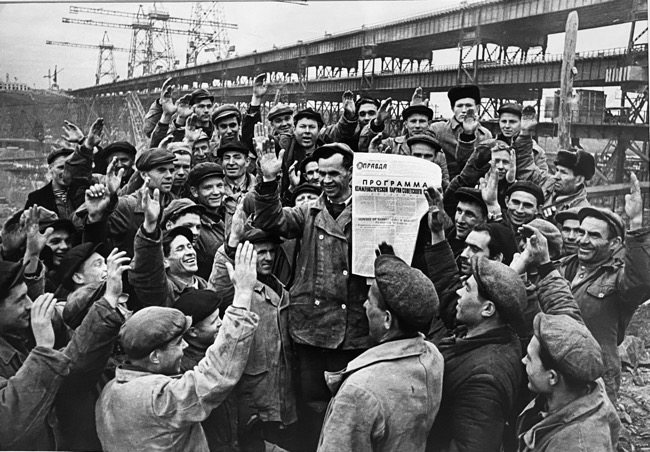

12 August 2023 – Old Masters
MoMa is a fantastic place for inspiration. Steichen, Stieglitz, Lartigue, Atget are names that resonate far in the world of photography. The American system is such, that rich people donate their collection to museums as part of their estate. The Abbott-Levy Collection is one of those, named after the photographer Berenice Abbott and the art dealer Julien Levy. As an example, while working in Paris as Man Ray’s studio assistant, Berenice Abbott met Atget, and at their final visit, just months before his death, she made one of the few known portraits of him. She collected his work and donated to the museum in 1968. The photographs presented in a small room of MoMA not only carry an historical significance, but also fill the viewer with awe and admiration. Whether it is Jacques-Henri Lartigue taking pictures of wealthy people strolling down Avenue des Acacias in Paris, or Jacob August Riis showing us the back alleys of New York, such as Mulberry Bend that epitomised, according to him, “the worst of the city’s slums, or Edward Steichen immortalising the iconic Flatiron building, or Stieglitz in the smoke of steam trains. The prints are impeccable, the compositions stunning and the cumulation of them, next to each other, an everlasting source of renewed inspiration.






12 August 2023 – Becoming
The photographs in “The Archive of Becoming” by Karl Ohiri, presented as part of the New Photography 2023 exhibition at MoMA, are sourced from discarded film negatives of portrait studios in Lagos, Nigeria. These studios abandoned the negatives as they transitioned to digital photography or simply shut down and disappeared. This series is an extension of Karl Ohiri’s larger initiative, the Lagos Studio Archives, initiated by him in 2015. while Finish collaborator Riikka Kassinen joined the project in 2022. Through this initiative, they have in the meantime curated thousands of film negatives dating from the 1970s onwards, preserving a cultural legacy. Karl Ohiri is a London-born, British-Nigerian artist living in Finland. His drive is to explore the Human Condition. His work on “The Archive of Becoming” aims at spotlighting the contributions of unidentified commercial photographers. It showcases the personalities that the unnamed subjects projected while posing for the camera. The negatives featured in the series have suffered from deterioration due to neglect in the humid climate over many years. This decay erodes the stable self-representation that photographs typically offer. All in all, an insight into the lives and stories of these Lagos inhabitants we will never meet.



12 August 2023 – Printing Memories
A letterpress type-case is a specialized storage compartment used in traditional letterpress printing. It is designed to hold individual metal or wood type characters, as well as other elements used in typesetting for letterpress printing. Kelani Abass inherited the printing business of his parents in Lagos, Nigeria and repurposes such type cases not for letters, but as vessels of remembrance. Through this adaptation, he explores the importance of material heritage and the archive as a bridge between past and present. The photographic image is the starting point of multi-layered work intertwines with the letterpress type-case, assuming the role of a vessel. The outcome is profoundly captivating. This type case metamorphoses into a tangible embodiment of memory, housing moments and historical occurrences within its compartments—readily accessible yet also nestled within, waiting to resurface. Kelani Abass masterfully unravels his personal history in layers, resulting in a multi-faceted representation of his past. As part of the New Photography 2023 exhibition at MoMA, we can explore our own memories while reflecting upon the pieces presented.
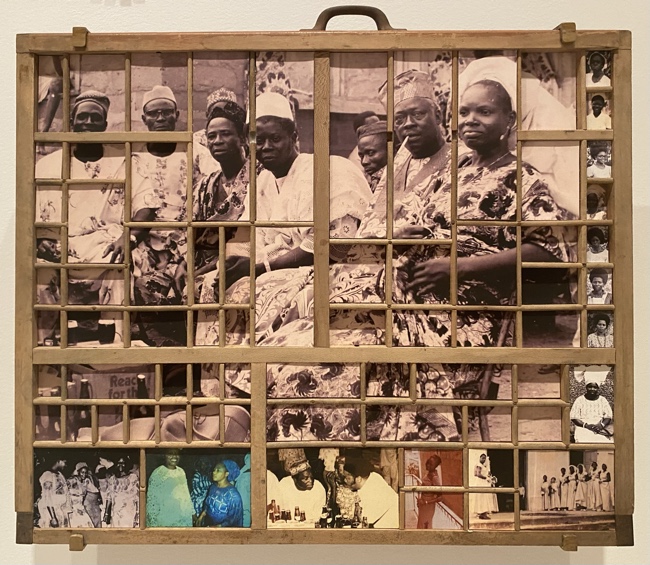


12 August 2023 – Let’s go to the Beach
Akinbode Akinbiyi was born in 1946 in Oxford, England, to parents from Nigeria. He is a street photographer who takes slow walks through big cities like Bamako, Berlin, and Lagos, always with his Rolleiflex twin-lens reflex camera. He is someone who uses photography and poetry to tell stories about everyday life. He is not just interested in normal routines; he is more interested in the special quality of regular life, curious about how people live in their communities and spaces. He is mainly interested in the small things that happen in daily life, like politics, religion, and human nature. He wants to show what lies beneath the surface and what is meaningful in everyday life. He uses the streets as his studio, capturing the feelings of different places and people. He is also trying to grasp something important he remembers from his past, like the innocence and wonder he felt as a child in London and Lagos. This time, thanks to the MoMA and its New Photography 2023 exhibition, he invites us to go with him to the beach in Lagos, with his on-going series “Sea Never Dry”. Large square prints of 1m x 1m in gorgeous black and white cover the walls. The photographs were all taken at Bar Beach, on Victoria Island in Lagos, over several years. They shaw a couple watching a child on a horse, a group of boys, a lady looking at the sea or other passers-by.. These photographs hold a kind of innocence and childlike honesty and provide a certain degree of peace: a refreshing change amidst the bustling New York.


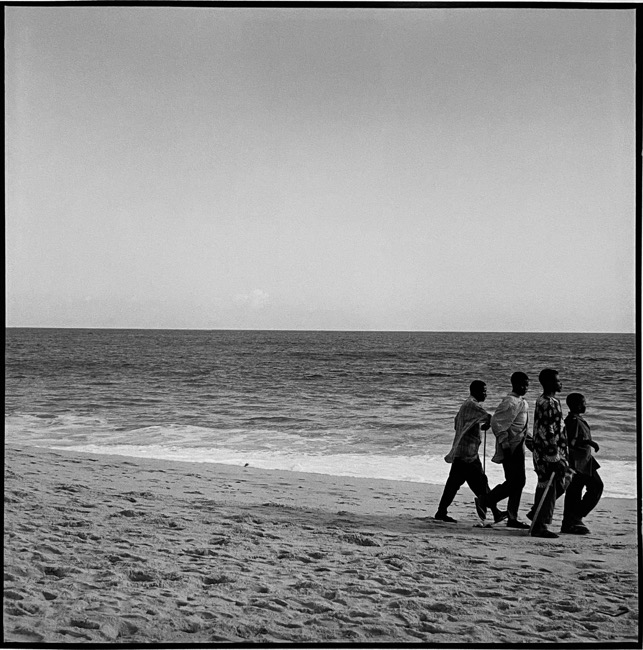

12 August 2023 – A Trip to Lagos, NY
Nigerian photography stands as a dynamic and vibrant facet of the country’s rich cultural tapestry. It carries diverse narratives, reflecting the nation’s history, traditions, and contemporary realities. Rooted in a fusion of indigenous artistry and global influences, Nigerian photography has evolved into a powerful means of storytelling, social commentary, and artistic expression. The Museum of Modern Art (MoMA) pays a distinguished tribute to Nigerian photography, acknowledging its profound cultural significance and artistic merit. This recognition is personified by the display of the photographs of Logo Oluwamuyiwa, born in 1990, who invites us to a trip across Lagos and its diversity. As part of the New Photography 2023 exhibition, Logo wanders through Lagos, on a bike, a taxi, or on foot. His photographs are dark and powerful and give us a unique insight on life there, allowing us to develop new perceptions and encounters. “Hazy II” and “Intent to Fish” are two examples of a strong composition. “Hazy II” shows a person walking underneath a high motorway: a marginal? a left out? a tramp? we don’t know and are left with the questions. “Intent to Fish” shows a traditional fisherman, preparing his gear before going to work. We expect the next move to be a more traditional picture of a fisherman, throwing his net, in the hope of catching some fish. Lagos, like New York City, are world cities, full of mysteries, issues, constraints, but also full of life. Photographs from Lagos are refreshing and give us more than what we know about this major African city. People live, love, smile, cry, work there, like everywhere else. And it took a local person to show us that, and MoMA to feature this artist in the Big Apple.





29 July 2023 – We are all humans
Human interaction relies on an extraordinary skill we all share: deciphering faces. As we observe each other’s faces, unconscious cognitive processes orchestrate recognition and interpretation. This ability, a quintessential human trait, shapes understanding, connections, and social navigation. Our face recognition expertise rests on an innate ability to detect features. Eyes effortlessly navigate eyes, nose, mouth, and eyebrows, extracting nuances that define uniqueness. Yet, this intricate detection is just the beginning of a greater process, our ability to fit in, to understand, to blend in. At the same time, a human face is the window to the soul of the person. We, as humans, are all uniquely beautiful, independently of age, gender, origin. This is what documentary photographer Ruben Timman is showing us. He has dedicated his life and work to documenting the beauty and dignity of the humankind. He has portrayed more than 3,500 people in exactly the same way: straight from the front, with a black background, as pure as possible. He has also created the Museum of Humanity in Zaandam, north of Amsterdam. A museum dedicated to you and me, showing our differences but also our similarities, hoping to bring back a bit of comprehension amongst humans, one portrait at a time. The Museum of Humanity is a unique place, located in an old weapon factory, also witness of people hard working. It features portraits, great and small, of various origins and tells the stories of these people. It could be you, as well as me. The photos below are just a small example of these people staring back right at you.
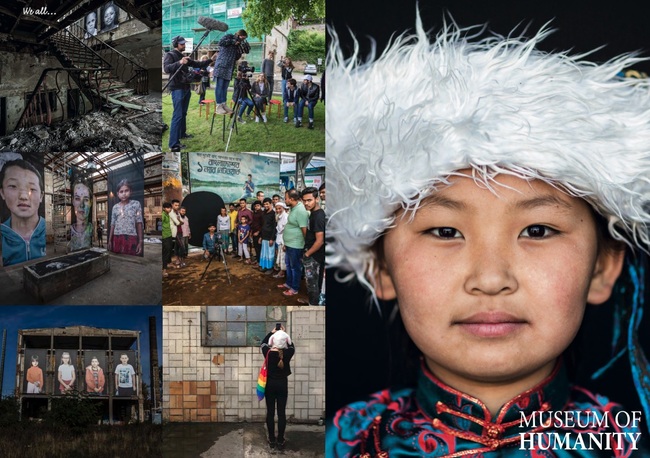
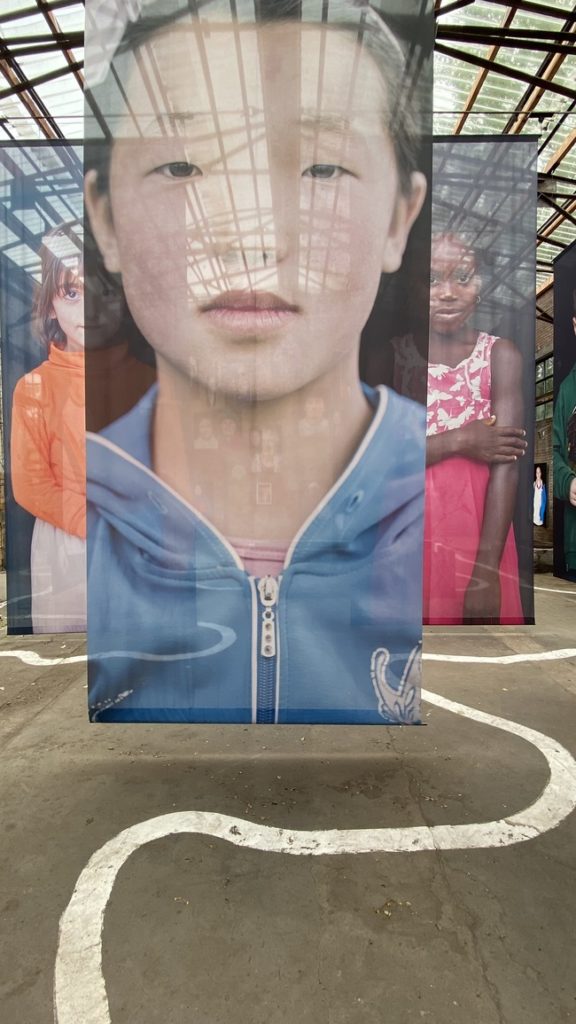
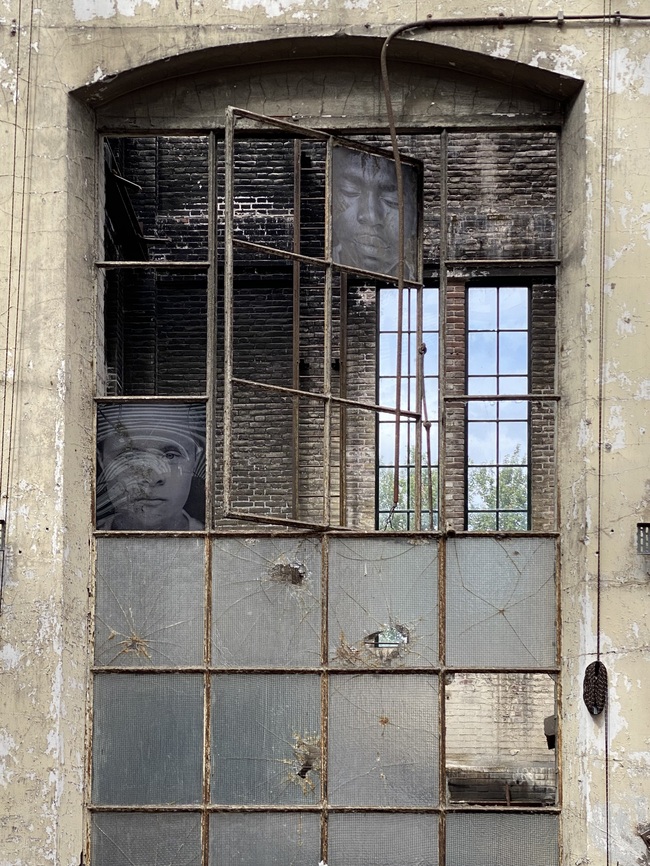

26 July 2023 – A Life in Colour
The name may make you smile, at least if you are French and if you pronounce it the French way: Gruyaert, « gruyère ». Harry Gruyaert is Belgian, from Antwerp, a Magnum photographer, master in saturated colours. Le Bal, located two steps away from Place Clichy is a non-profit organization founded in 2010 by, among others, Raymond Depardon himself, is a location for exhibitions, reflection, etc, centered on the contemporary image in all its forms – photography, video, film and the new media. A perfect location for a last exhibition before departing. The place is wide, well lit and has been designed, for the purpose of this specific exhibit, to match Gruyaert’s photography : bright deep colours on the walls, matching well the colour tones of the pictures exhibited. The photograph describes his work as « an instinctive arrangement of forms, colours, symbols, light, and motifs » and that’s what we see displayed throughout. The subjects and locations are not important. Whether it is an empty beach tent in Ostende, soldiers marching In Waterloo, the window of a café on Antwerp or a street scene in India or Egypt, the photographs of Harry Gruyaert are aesthetically well thought through (more than the instinct a modest photographer may describe) and pleasing to the eye. Beautiful colours, sharp arrangements , perfect light on a late afternoon, the so-called golden hour. Cibachrome, a technology from the past century, most people probably don’t remember it, is, of course, also for something in those rich tones on the vintage prints displayed. A modern print would probably not yield the same quality. All in all, a very pleasing experience to stroll through Gruyaert’s world. In his own words, he talks about the « instantaneous miracle of the unexpected« , another version, in my view of Henri Cartier-Bresson’s moment décisif, but yet with a different sensibility all together.



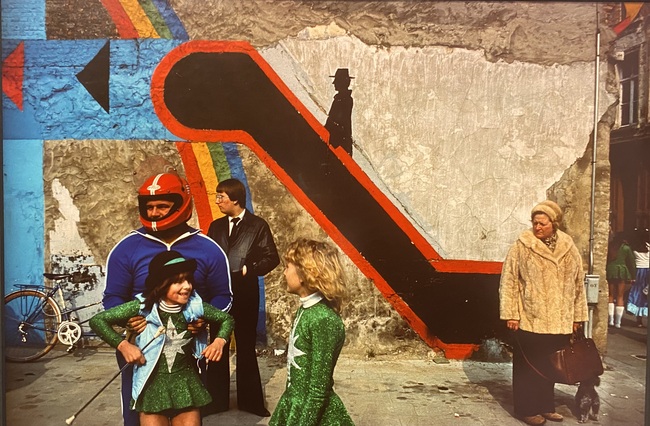


26 July 2023 – Khaldei – Sutkus Pas de Deux
Russian photographers, although less known than their Western counterparts, have left an indelible mark on the world of photography, showcasing their exceptional talent and unique artistic vision. Two prominent figures in this realm for me are Yevgeny Khaldei [1917-1997] and Antanas Sutkus [born in 1939], each contributing to the medium in distinctive ways. Yevgeny Khaldei’s (a Ukrainian by birth) work stands as a testament to the power of photography in shaping historical narratives and capturing pivotal moments in time. He is best known for his iconic photograph, “Raising the Hammer and Sickle over the Reichstag”, which has become one of the most celebrated images of World War II. Taken on May 2, 1945, during the Battle of Berlin, the photograph depicts a group of Soviet soldiers raising the Soviet flag on top of the Reichstag, symbolizing the triumph of the Red Army and the defeat of Nazi Germany. Beyond its significance, Khaldei’s photograph offers a glimpse into the world of photojournalism during wartime and the complexities of working under a regime that demanded propaganda and an absolute control over the narrative. As the chief photographer of the Soviet news agency TASS, Khaldei was required to capture images that documented events and that were used as propaganda means for the Soviet regime. “Raising the Hammer and Sickle over the Reichstag” was carefully staged by Khaldei to convey a sense of triumph and resilience. On the other end of the spectrum, Antanas Sutkus’s photography presents a different aspect of the medium. Sutkus, a Lithuanian photographer has managed to capture the essence of the human condition during the Soviet time. His images depict ordinary people in their everyday lives, reflecting the spirit of the time and providing a window into the soul of the Soviet and post-Soviet societies. Sutkus’s ability to establish a profound connection with his subjects enabled him to create images that evoke deep emotions and a sense of universality, making his work resonate with audiences beyond geographical and cultural boundaries. Sutkus represents a different era in the history of Russian photography, a time of transition and artistic liberation when photographers could explore a broader range of subjects and styles. The juxtaposition of Khaldei’s and Sutkus’s photography illustrates the diversity and complexity of Russian photographers’ contributions to the art form. Moreover, many more photographers have emerged since then, pushing the boundaries further and further, to fully bloom in the post-Soviet era to this day, emerging with new challenges, not yet resolved.






26 July 2023 – Coup de ❤️ for Antanas Sutkus
I came across the name Antanas Sutkus just recently and saw some of his work while in Paris, thanks to Liza Fetissova. He has become my coup de ❤️ of this trip. Despite my ignorance, he is a renowned (worldwide) Lithuanian photographer, now 84, who has often been regarded as a counterpart to Henri Cartier-Bresson. Both photographers are celebrated for their contributions to the world of photography, and their works share certain similarities while also showcasing unique individual styles and cultural influences. Like Cartier-Bresson, Sutkus is known for his mastery of capturing the “decisive moment” – that split-second when all the elements of a scene come together to create a compelling and meaningful image. Just like Cartier-Bresson, Sutkus has an exceptional ability to anticipate and seize that moment and to tell profound stories about the human condition. Whether it is a gesture, the subtle expression of a face, or a poignant interaction between subjects, like this little girl and her mother in the case of Sutkus, both photographers excel in recognizing and immortalizing these instants of pure poetry. Both have been committed to black and white throughout their career, playing with the different shades of grey to create timeless pictures. While Cartier-Bresson has travelled throughout the world and is well known for his candid street photography globally, Sutkus’s work centers on the people and landscapes of Lithuania and the surrounding Baltic area. This focus provides a unique cultural perspective and offers a valuable insight into the daily lives and experiences of the people living in this particular part of the world, especially vivid today. Sutkus’s photographs are intimate and authentic, talk about the resilience, joy, and struggles of ordinary people during the social and political turmoil of the Soviet and post-Soviet eras. As Antanas Sutkus and Henri Cartier-Bresson stand as counterparts in the world of photography, both leaving a lasting impact on the medium through their mastery of the decisive moment and their deep respect for the human condition, I wonder why the Fondation Henri Cartier-Bresson has not yet organised a dialogue between these two masters. Maybe time to ask that question?


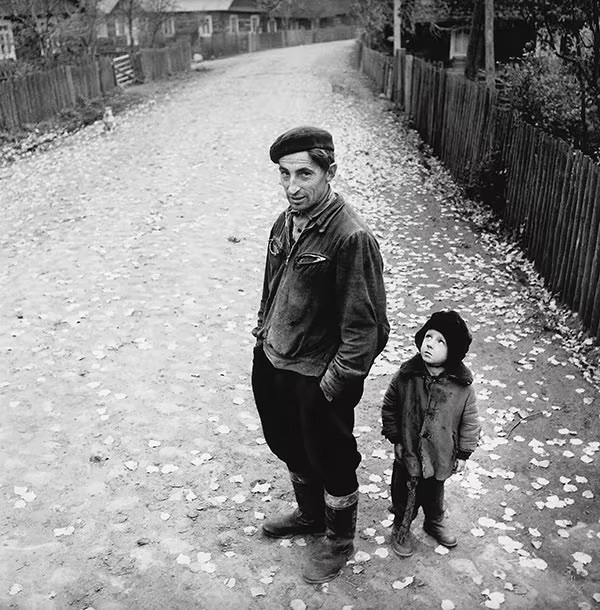


25 July 2023 – Tender Liza
In the world of photography, tenderness is a delicate and powerful emotion to capture. It involves capturing moments of warmth, vulnerability, and affection that evoke a sense of intimacy and connection between subjects. Photographs that convey tenderness often have the ability to stir deep emotions within viewers and create a lasting impact. Whether it’s a loving gaze between a mother and child, a tender touch between partners, or a gentle interaction with nature, tenderness in photography can take various forms. The essence of tenderness lies in the subtleties – the softness of a smile, the warmth of a hug, or the gentle caress of a hand. A skilled photographer can seize these fleeting moments and freeze them in time, allowing viewers to experience the emotions that were present in that very moment. Such images have the power to transcend cultural and linguistic barriers, touching the hearts of people from different backgrounds and experiences. This is what Liza Fetissova has achieved when putting together her exhibition under the title “Tenderness”. This exhibition is at her image: excentric, compassionate, caring, amazing, unexpected, sensitive, touching, a skilled observer, keenly attuned to the subtleties of human emotions and the natural world. Liza is bringing together, in Paris, the works of artists from varied backgrounds and through times, with a wide choice of photographic medium that can influence how tenderness is perceived. Black and white photography, with its timeless and classic appeal, can accentuate emotions and create a nostalgic or timeless quality in the image. On the other hand, color photography can amplify the emotional impact by using tones to evoke specific moods. From the works of Antanas Sutkus in the 60’s, the big discovery for me and subject of a future coup de coeur, to the works of Igor Savchenko and Igor Moukhin in the 90’s or of Sergei Maximishin and Evgeny Mokhorev in the early 2000’s to the more recent work of Danila Tkachenko and Igor Elukov in the last decennia. Liza offers a large tour d’horizon of talented artists, too long ignored or under represented.







25 July 2023 – van der Keuken in Rhythm
I had the opportunity to attend a significant exhibition of Johan van der Keuken’s body of work in Rotterdam, hosted at the Photography Museum in November 2022, as reported here. Interestingly, a similar exhibition, under a different title “the Rhythm of Images”, which is currently being presented at Musée du Jeu de Paume, was jointly organized by the Rotterdam Photography Museum. The exhibition is a gold mine of over a hundred photographs and films carefully curated from collections in both The Netherlands and France. Many more than shown in Rotterdam in 2022. The prints, particularly to me, spark an engaging and thought-provoking exchange with the visitor. The photographs showcased in the exhibition span van der Keuken’s entire creative journey from 1955 to the early 2000’s, time of his death. As viewers explore the collection, they gain a profound understanding of the artist’s evolution over time, ultimately leading him to explore the realm of filmmaking in his later years. The exhibition provides an insightful look into van der Keuken’s lifelong exploration of movement and rhythm, expressed through photography and film. Inspired by the early times of cinema, his photographic works highlight power structures and deconstruct conventional patterns of visual language and narrative. Van der Keuken’s artistry is marked by keen observation and a passionate drive to capture unfiltered, spontaneous, and occasionally intense moments of reality. This evolution in his work is apparent in his experimental, fluid approach to editing, harmoniously blending with the rhythm of music and sound in his films. Through skillful juxtaposition of contrasting elements, he crafts a novel and inventive visual language that eloquently embodies his distinct artistic vision. I am however, and remain, particularly sensitive to his street photography in Paris, of course, in the years 1956-1958, inspired, to some extend by Henri Cartier-Bresson.



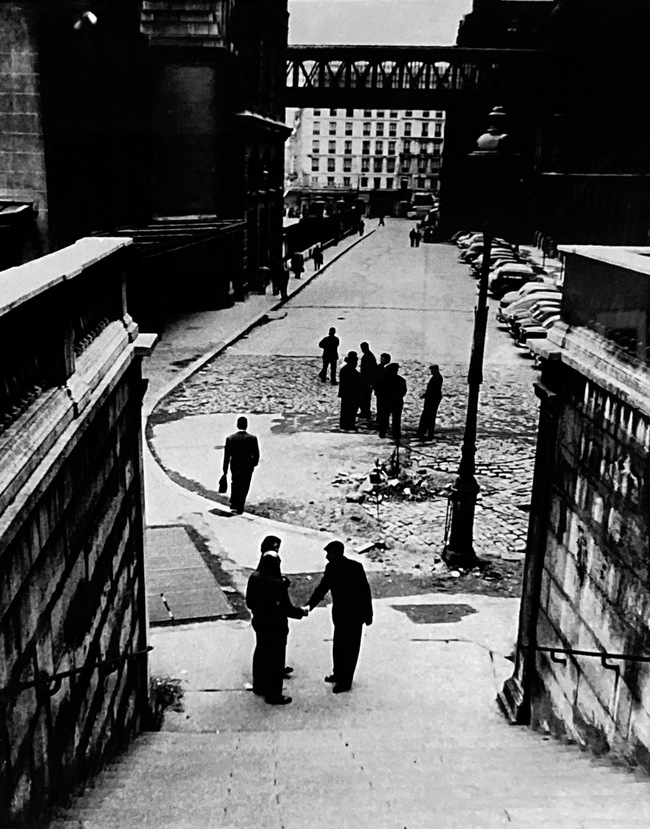


25 July 2023 – The world of Horvat
The name Frank Horvat, a highly esteemed and widely recognized photographer renowned for his exceptional fashion photographs, is likely to resonate with many. However, what may not be as commonly known is that Frank Horvat was born in Italy, and his family was compelled to flee due to the oppressive racial laws that specifically targeted Jews before the outbreak of the second world war. Following this, he wandered through various parts of Europe until eventually finding a home in Paris. Destiny brought him face to face with the influential Henri Cartier-Bresson, who graciously gave him invaluable advice, including investing in a Leica camera. This momentous encounter led Horvat to become a member of the prestigious Magnum photography agency. The Musée du Jeu de Paume is now presenting a large and unprecedented exhibition of Horvat’s body of work, an exhibition of colossal size, the first of that magnitude since his death in 2020. Remarkably, this exhibition focuses only on the first fifteen years of his career. “Paris, the world, fashion” are the themes woven throughout the exhibition, showcased through an astounding collection of no fewer than 175 prints and other evocative documents. Embarking on a journey through this exhibition is nothing short of a sensory delight, as Horvat’s photographs effortlessly radiate life, humor, emotion, and individuality. His lens beautifully captures a wide array of subjects, often embracing the unexpected and weaving tales of diverse lives and experiences. The sheer breadth of choices for this review is staggering, a testament to the diversity and richness of his photographic endeavors. One particular photograph that touched my heart depicts a man, either sleeping or dead, on the Howrah Bridge in the city of Calcutta, India. Another poignant image immortalizes a Belgian miner in the midst of changing attire after a hard day of labor, poignantly capturing the toil and resilience of the working class. Horvat also embarked on a compelling series of photographs taken in the streets of Paris with a telelens, offering a unique perspective of the city. For instance, an enigmatic shot portrays an anonymous lady amidst a crowd at Galeries Lafayette, her countenance evoking a sense of solemnity and depth as she seeks out her Christmas gifts alongside her fellow Parisians. Another spellbinding photograph portrays a pensive lady aboard a bus, seemingly adrift in a world of her own contemplations. The photograph of Gare Saint-Lazare in 1959 provides a great portrait of the bustling train station: a moment of sheer movement and dynamism during daily peak hour, contrasting with a solitary island of serenity where a couple shares a smile. It is a testament to Horvat’s ability to encapsulate diverse narratives within a single frame. Undoubtedly, Frank Horvat revolutionized the genre of fashion photography, imprinting his unique artistic vision into every shot. One particularly compelling example of his mastery is the captivating shot of Carol Lobravico and Iris Bianchi at Café de Flore, radiating an unparalleled allure and sophistication. Yet, it is the photograph of Coco Chanel, quietly hiding on a staircase, peering with modesty at her own show, that deeply resonated with my soul. Finally, a photograph taken in Venezuela in 1963, reveals an eerie similarity to the political leaders of the present time. In essence, Frank Horvat’s legacy is one of a visionary artist who harnessed the power of photography to tell compelling stories, unveil hidden beauty, and shed light on the intricacies of humanity. His photographs continue to inspire and evoke a range of emotions, leaving an indelible mark on the art and fashion photography, enriching the world with his singular vision and artistic brilliance.






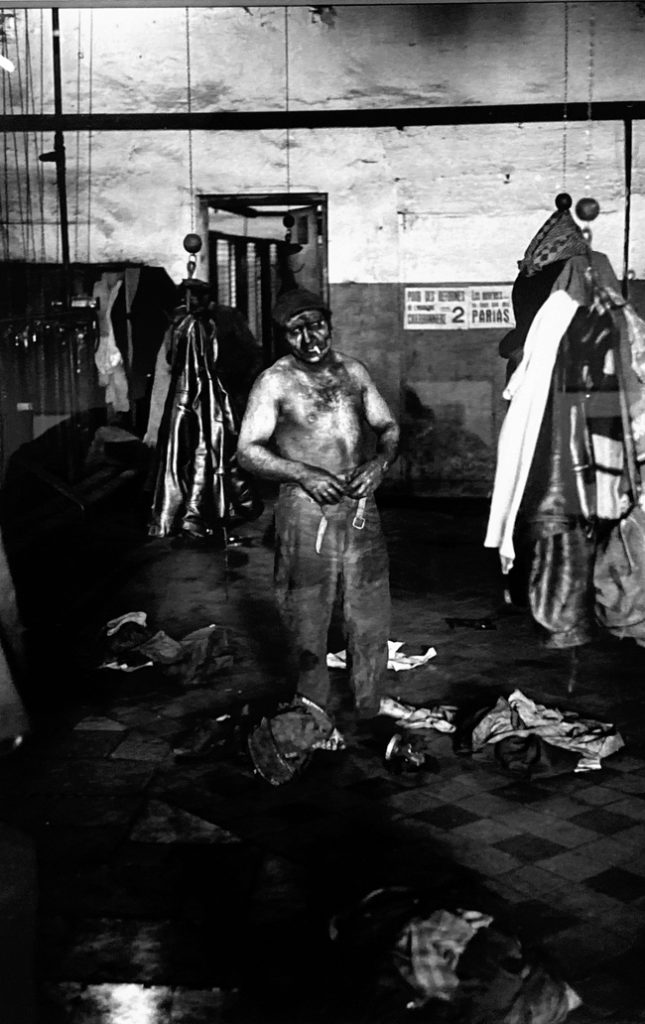


24 July 2023 – A Diamond in Disguise
I did not know of the existence of Julia Pirotte before being made aware of an exhibition at the Shoah Memorial. There is no more impressive place in Paris. The weight of history, the intangible presence of the 75,000 jews deported from France during the war, the solemnity and peace of the place make an impressive location for a photo exhibit. However, Julia Pirotte, as Polish jew, born Golda Perla Diament, has her place here. She was born in Poland, joined the Communist party, went to jail, escaped Poland to land in Belgium where she married Jean Pirotte, a worker and trade union leader. That’s where she met Suzanne Spaak that suggested she should take on photography. After successful studies, she began her career as a photojournalist, taking pictures of Polish miners and in the Baltic republics. When the Second World War broke out, she fled one more time, to Marseille, where she spent the rest of the war. First as a journalist, reporting on the poverty in Marseille, then on the resistant movement against the German occupation. She finally joined the resistance and smuggled weapons and leaflets for them. At the liberation of Marseille, in August 1944, she took back her camera and documented the fights. After the war, she continued, returning to Poland, to report on the reconstruction and noble causes. She got recognised later, in the 80’s and started to be exhibited in various places. The Shoah Memorial shows more than 100 of her photographs, paying tribute to yet another woman, too long in the shadows of other (male) photographers.

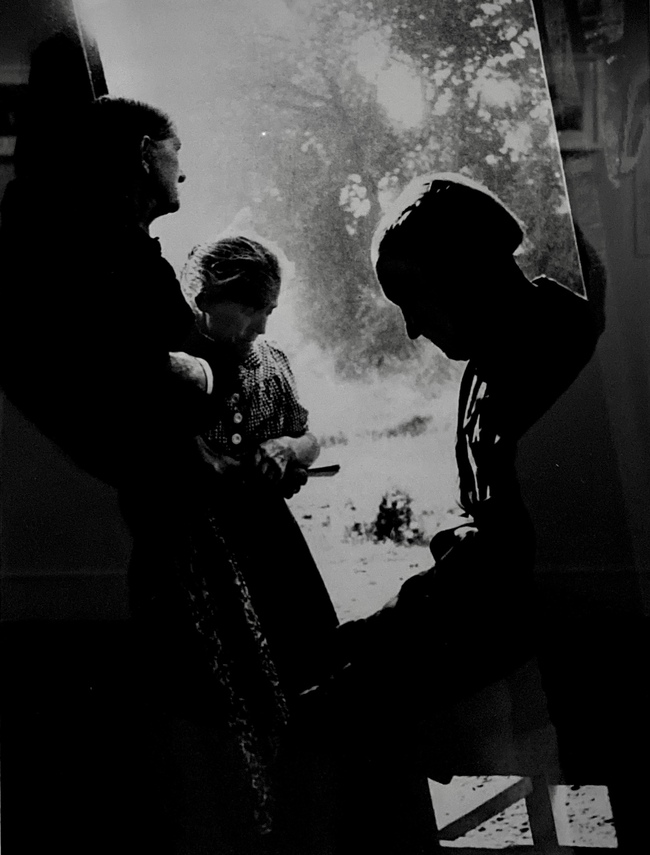



24 July 2023 – Battaglia’s Battle
The main battle of Letizia Battaglia was against the Mafia in Sicily, where she was from. Born in 1935, she was one of the first female photo reporter of Italy. The Italian Cultural Institute in Paris, located in the beautiful Hôtel de Galliffet, 50 rue de Varenne, 5 minutes away from Musée Maillol, gives a large “Mostra” of Battaglia’s work, one year after her death, under the name “Cronaca, Vita, Amore” or “Chronicles, Life and Love”. I would have expected something about death as well, as Battaglia, in the Palermo the 1980’s, witnessed and documented many assassinations, executions, mainly related to the Mafia. Gruesome murders, in plain daylight, on a chair, in a car, in the street. She was there to document the crimes, to report, as witness. She was also very active to illustrate the lives of her contemporaries, poor and rich, workers, marginals, small children or old ladies. A somewhat dark environment but poignant pictures. Life and love in Sicily, the hard way. Chronicles for sure as Battaglia considered herself a militant. Photographer, reporter, publisher, active feminist militant, she leaves behind a large body of work that, like many times with women, has stayed in the shadow for too long. The Italian Cultural Institute made the right choice to open up its beautiful walls to render justice to this grande artiste. A great book was also published at this occasion.





24 July 2023 – One of a kind
Elliott Erwitt is one of a kind. Not only one of the most important photographers of the 20th century and member of Magnum Photos since 1954, two features he shares with Henri Cartier-Bresson, but also because of his breadth of themes and humoristic approach to capturing moments of everyday life. He was very European, very American, full of surprises, versatile, open to any topic (including dogs in the street), a total artist, making a feast for the eyes and for the soul, from mundane scenes in the streets or elsewhere. He was called a “painter of intimacy”, mixing irony, humour and a deep humanity. A quote, worth meditating for future work, summarizes his unique and humble approach: “You first get a sort of frame and then wait for somebody to fill in”. Musée Maillol pays tribute to his genius in a large exhibit spanning over a career of more than 70 years “Elliott Erwitt – A Retrospective”. The large exhibition of more than 200 black and white and color photographs is a pure delight. too many wonderful scenes to report here. I just selected a few, characteristic of his genius.








23 July 2023 – Mystery Street? a mystery…
Now that the Fondation Henri Cartier-Bresson has two exhibition areas instead of one, it can offer its walls to events, such as the personal exhibition of Vasantha Yogananthan “Mystery Street”. The alliance between the Fondation, the Hermès Foundation and the International Center of Photography of New York allows to feature young artists, with a book published and a presentation of their work. “Mystery Street” explores the time between childhood and adolescence, in the city of New Orleans, deeply affected by the passage of hurricane Katrina in 2005. According to the intent, the children shown become a living metaphor of the city body. This remains a mystery to me. I could not feel particularly close or touched by the photographs exhibited and question, apart from doing their share of an alliance, the need to use that particular space for that specific exhibition. I would have preferred to see the works of other street photographers, in the foot prints of Henri Cartier-Bresson.



23 July 2023 – The King
I was asked recently, “why is Henri Cartier-Bresson your favorite photographer”? I reflected upon that question for a second, and said: it’s his approach that I admire, the placement of the person, his view point, his discretion, being present without being visible, his humility, his sense of composition. He has been around for a long time, has been everywhere and has taken many pictures throughout his long life, but always with the same approach: placement, a sharp sense of observation, discretion and just taking a few shots: not 500, not 50, not even five just a few: one, two, three at the most of one subject, no more than that. So, when the fondation Henri Cartier-Bresson presents a new exhibit, it is an everlasting pleasure to come to Paris, visit it and enjoy his photographs. This time around, the fondation presents his photographs of the coronation of King George VI, on May 12th, 1937, at the occasion of the other coronation, that of King Charles III, with a most appropriate title “The Other Coronation”. Henri Cartier-Bresson was sent there by Ce Soir, a communist newspaper, to cover the event. Instead of focusing on the event itself, HCB decides to take photos of the people, those ordinary folks, present that day to follow their king. The result is stunning, portraits, often funny, grave, somber, joyful. People side by side, trying to get a glimpse of the event, or at times, just falling asleep and missing it all. The small scale exhibit is located in “The Tube”, the new space underneath the original exhibition space of the Fondation. For me, Henri Cartier-Bresson remains the King.




22 July 2023 – WorldPress Photo 2023
Mark’s visit was the right occasion for another visit of the World Press Photo exhibit 2023 before it was too late. Year after year, new generations of photographers tell stories about pain, sorrow, blood, disasters and sometimes hope. Musuk Nolte took pictures of workers, in full gear, dealing with the environmental disaster caused by an oil spill at a Repsol refinery. A young Simone Tramonte took happy bathers near a huge off-shore wind farm in Danemark, co-owned by thousands of electricity consumers. Mads Nilsen shows us a stunning contrast in Afghanistan: a very well lit bakery guarded by a standing man while women in full blue burka are sitting to the left, in the darkness of the night in Kabul. Anush Babjanyan was awarded a long term project award for documenting battered waters in Central Asia. The red colour looks unreal for healthy waters. Ahmad Halabisaz documents the fight of women in Iran, represented by a single young woman, fiercely sitting on a chair in front of a busy square in Tehran. Jonathan Fontaine went to Somalia to report on the lives of the refugees there. A single woman, Samira, facing a large number of small tents in the desert, epitomizes the Nomad’s final journey because of droughts and wars in the region. Chad Ajamian reported on the floods in Australia, using the technique of infra-red, giving more unreal pictures.







08 July 2023 – Cas Case
I saw the photographs of Cas Oorthuys on 20 October 2018 at a wide retrospective “dit is Cas” at the Nederlands Fotomuseum, and reported about it in this blog. This time around, the completely renewed Verzetsmuseum in Amsterdam is giving a small presentation of Cas’s work during WWII. Cas Oorthuys took hundreds of photographs during the German occupation of The Netherlands, to witness the reality of that occupation. He had to work within the limits imposed by the occupant, no strategic locations or topic. He also took the opportunity to take illegal photos at the same time to show the activities of the resistance movement. Photographing became forbidden in 1944 but Cas continued his work throughout the Hunger winter of 1944-1945. Some of his pictures of the time have become iconic since then, like the desperately hungry woman, staring in the vacuum and nibbling on a piece of bread. The exhibit shows, in the typical Oorthuys square format, picture from this period, but also from his trip to Germany in 1946 and Indonesia in 1947. Oorthuys has become one of the icons of Dutch photography and the Verzetsmuseum pays tribute to his life and his work.





27 June 2023 – The FFF Effect
It is at the occasion of a business trip that I took the opportunity to skip lunch and visit a large solo photo exhibition of Abe Frajndlich’s work, given at the Fotografie Forum Frankfurt (FFF). I did not know of the existence of either before that time. FFF is a large exhibition space located in the middle of town. It operates under the same principles as FOAM in Amsterdam, as an independent center for photography. Abe Frajndlich, apart from having a name difficult – if not impossible – to pronounce, is a well-established and well-known American photographer, known mainly for his portraits of celebrities with whom he rubbed shoulders throughout his professional life. He was born in Frankfurt just after the war and moved to the USA at age 10. His solo exhibit is large (more than 160 photographs) and eclectic, covering his entire career. Its title: Chameleon, to denote his “iridescent diversity”. Diversity is indeed the master word of this collection: from his black and white street photography in multiple countries, through his portraits of famous artists such as Leonard Cohen, Louise Bourgeois, Daido Moriyama, David Hockney or Jack Lemmon, his staged images of Gordon Parks or Louise Dahl-Wolfe and his pictures from his book Eros Eterna. I forgot to mention the marvelous collages. My favorite of all remain this enigmatic “Man Graffiti” and “Miami De Kooning”, both blurring the genre between photography and painting. Frajndlich is a chameleon for sure and this retrospective, in his home town, was a discovery and worth the 20€ taxi to get there.




27 May 2023 – Swimming in Laan’s Lane
Art is a delicate wisp, an ethereal essence that defies permanence. Its ephemeral nature is like a breath, a fragile existence that can vanish with the passing of time. Yet, photography has the power to capture those fleeting moments in a few milliseconds, freezing them in an everlasting frame. Through the lens, the transitory dance of light and shadow, the fleeting beauty of nature can be preserved. Photography serves as a visual testament to the evanescent, immortalizing shapes, stories and experiences that might otherwise fade into oblivion. It is the art of capturing the ephemeral, turning fleeting glimpses into eternal memories. This is the art of Nico Laan. His “Temporary Drawings” exhibition tells it all: carving the landscape for a moment and capturing it for eternity. Fotomuseum The Hague draws a parallel between his work and M.C. Escher’s drawings, likely because of the piece “Geometric Illusions”. To me however, his work is closer to that of Edward Burtynsky, even though the latter Canadian artist merely focuses on what industry leaves behind where as Laan acts as a sculptor who, with every stroke and chisel, reshapes the natural world, infusing it with his creative spirit, leaving on his photographs an indelible mark that blurs the boundaries between artifice and nature’s raw beauty.

Coastline, 2020 ©Nico Laan

Waterline, 2020 ©Nico Laan

Geometric Illusions, 2021 ©Nico Laan
27 May 2023 – Let’s talk about Photography and emotions
Melancholy, with its inherent sense of longing and sadness, has long been a subject of artistic exploration. Through photography, melancholy can be evoked by capturing desolate landscapes, decaying urban environments, or introspective portraits that reflect a profound sense of solitude. The interplay of light and shadow, black and white, and subdued compositions contribute to creating an atmosphere of melancholy in the photographs.
Alienation, a feeling of disconnection or isolation from one’s surroundings, can be poignantly portrayed in photography. Images that depict urban anonymity, empty spaces devoid of human presence, or individuals lost amidst a crowd evoke a sense of detachment. Photography can reveal the estrangement experienced in modern society, highlighting the dissonance between the individual and their environment.
Vulnerability, the state of being exposed and open to emotional or physical harm, can be captured through intimate and candid moments. Photographs that capture unguarded expressions, tender gestures, or fragile subjects invite viewers to connect with the inherent vulnerability of the human condition. The rawness and authenticity portrayed in these images serve as a reminder of our shared fragility.
Throughout his collector’s life, Simon Ophof has been motivated by what he calls his three pillars: melancholy, alienation and the vulnerable person. He has given his collection of photography, necessarily a subjective effort, to the Kunstmuseum Den Haag, shortly before his death in 2022. An exhibit “Speaking of Photography” gives a small glimpse of the large body of eight hundreds prints from famous and unknown photographers, allowing viewers to delve into the depths of these human emotions. Black and white photography possesses particularly a unique power that transcends the limitations of color. It allows the viewer to focus on the essence of the subject, unveiling a raw and profound narrative. The interplay of shadows and highlights creates a dramatic contrast, evoking emotions and emphasising texture and form. Black and white photography possesses a timeless quality, bridging the gap between the past and the present, and imbuing the image with a sense of nostalgia. It is a medium that embraces simplicity, yet carries a depth that can captivate and resonate with viewers on a profound level. No doubt Simon Ophof’s collection of Black and white pictures presented resonate the most in me.

Havana, Cuba, 1996 ©Hans Franz

Untitled, 2020 ©Thomas Manneke

Gottfried Brockmann (1903-1983), Germany, 1924 ©August Sander

Construction of Philips headquarters, Eindhoven, 1961 ©Aart Klein

Verolme Shipyard, Botlek, Rotterdam, 1962 ©Aart Klein
27 May 2023 – Xiaoxiao solo
This is the third time that I visit an exhibition of photographs by Xu, Xiaoxiao. The first was in Breda, the second in Hilversum. This time, the photomuseum in The Hague presents a solo exhibition titled “Life along the Great Wall”. With her keen eye for details and profound talent for storytelling, Xu, Xiaoxiao unveils a series of photographs that offer a unique glimpse into the lives of those who reside alongside one of the world’s most iconic structures. Xiaoxiao’s photographs capture the indomitable spirit of those living in its shadows, embodying the strength and unwavering determination that has sustained generations on the marshes of China. Xiaoxiao’s lens reveals a mosaic of vibrant cultures interwoven along the Great Wall. We witness a harmonious blend of traditional costumes and vibrant rituals with a touch of despair. These photographs serve as a powerful testament to the multicultural tapestry that has thrived alongside the ancient stones but give a sense of a nearby end, somehow, Through her exhibit “Life Along the Great Wall,” Xu, Xiaoxiao invites viewers to embark on a visual journey that transcends time and space. Her poignant photographs not only showcase the past magnificence of the Great Wall but also illuminate the human stories that unfold alongside this monumental structure. Xu, Xiaoxiao’s artistry captures the resilience, cultural diversity, and profound connections that breathe life into the ancient stones, leaving an indelible mark on the hearts of those who encounter her remarkable work.




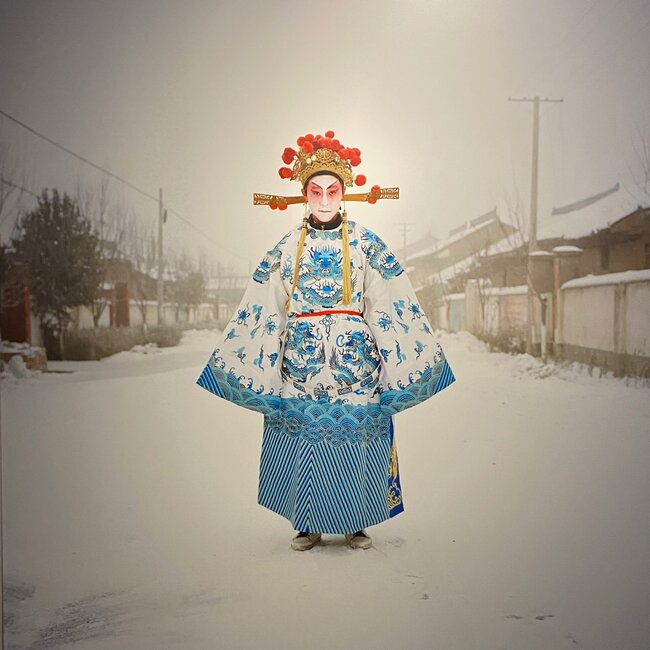
All photos ©Xu, Xiaoxiao
13 November 2022 – WFH’s Darkroom
When mentioning the name Willem Frederik Hermans, any Dutch person will reply to you “The darkroom of Damocles”, his most famous literary work, taking place during WWII and just afterwards. A bit of existentialism, cynicism, a reflection of human condition dressed up like a thriller. What most people don’t know however is that Willem Frederik Hermans was also an avid photographer with his own darkroom. Taking as a pretext his 100th birth anniversary, Fotomuseum Den Haag presents his photographic work on a small scale with several vintage and new prints. The name of this exhibit, chosen by WFH himself, as indicated on a box he left behind “Quite Important Photos”. It is at the time of “The Darkroom of Damocles” publication in 1957 that WFH purchased a camera and started to learn about how to use it with his friend Nico Jesse. He spent some time taking pictures, first in his immediate surroundings around Groningen, then in Amsterdam and Paris. He left behind some 15,000 negatives under which some interesting pictures of the cities, focusing a bit on the less glamorous details, buildings, posters. He also tried to take portraits but was always limited by his shyness. It is in his archives that WFH had a binder titled “quite important pictures” that was used as a title for the exhibit. Although far less developed than the oeuvre of other Dutch photographers active in the 1950’s and 1960’s, the pictures of Hermans serve as a witness of a world that is no more. For that reason alone, they are quite important indeed.








6 November 2022 – Van der Keuken and friends
Johan van der Keuken was inspired by others. He mentioned studying Henri Cartier-Bresson throughout. Some of his friends were present in the large retrospective given by the Nederlands Fotomuseum, providing the viewer with an insight in his inspiration, allowing us to better understand his work. A pleasure to see works by Cartier-Bresson, Emmy Andriesse or Eddy Posthuma de Boer, alongside the large selection of van der Keuken’s photographs.




6 November 2022 – In van der Keuken’s Kitchen
Johan van der Keuken (1938-2001) was a prolific photographer and film maker. After his passing, his heirs donated his archives of more than 20.000 negatives to the Nederlands Fotomuseum in 2019. Three years later, a large retrospective of his photography is presented in Rotterdam, under a quote of the author “The Art I love Most”. This is a remarkable collection of black and white photos, original or inspired by others, in various places, France, Africa, India, Italy. He shows the human in his day to day activities, taking various viewpoints, as he was always aware of that fact that there is not only one narration to any topic. He attempted to show the intangible behind the perceptible. This became clearer in the films he produced later in his career. A kitchen full of varied ingredients, colours and tastes make for an exceptional experience.






5 November 2022 – Deconstructing Construction
Aglaia Konrad is photographying architecture as an obsession: construction, deconstruction, reconstruction is at the centre of the series she presents at FOMU Antwerpen under the German title “Umbau”. A yellow-coloured wooden structure serves as the support for large photographs representing various parts of the Ghent’s Boekentoren recently renovated. Electric colours, negatives show us another refreshing vision of architecture. A well deserved breath of air after the visit to Congo…

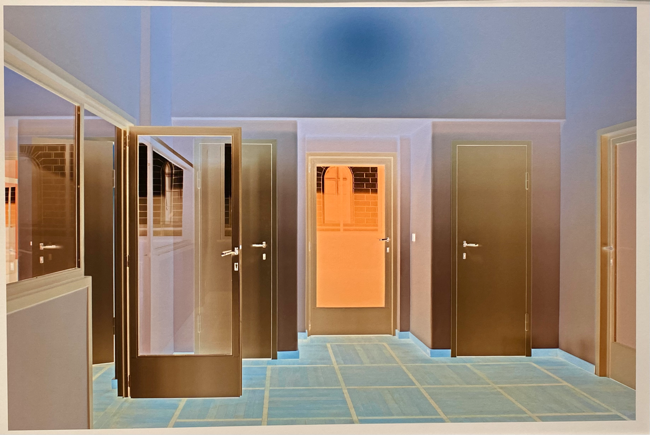


5 November 2022 – Tintin in Wonderland
Belgium and Congo have a long and difficult history. It started in the late 19th century when the King of Belgium, Leopold II, established his own (private) colony there: the Congo Free State, recognized internationally. Leopold ruthlessly exploited the large region and did not hesitate to terrorize the local populations with his private army until the international community started to get interested (late) and forced the personal rule to cease. Eventually, Congo became a Belgian colony in 1908. The brutal exploitation and arbitrary use of violence was reduced but at the same time, a certain level of continuity was established to the further exploitation of resources to the benefit of the dominary power. A colonial (white) power was well established and covered all parts of administration and justice. Belgium enforced an idealistic vision of Congo in the media, in photographs, in reports, depicting a sort of wonderland where local populations were growing happy, were educated, were provided healthcare and civilization, worked freely under the protection of the paternalistic good Europeans. An excellent example of this was given by Hergé, who otherwise enchanted my youth, in his album “Tintin in Congo”… The reality was rather different… social inequality and racial discrimination were the rule and the beautiful system collapsed after numerous hiccups and eventually led to the independence of Congo in 1960. The long and difficult history did not stop there and 60 years later, it continues to haunt the memories of the Belgians. The beautifully led out FotoMuseum of Anwerpen, FOMU, gives a large exhibition on the subject “Recaptioning Congo” in an attempt to highlight the contrasting perspectives from both African and European photographers. The photographs are disturbing, and shed light on the past and present relationships between Belgium and Congo. From the early 20th century judges and “white fathers”, to the tour of St Nicholas in 1933, to the visit of King Baudouin in 1960: a worthwhile trip through the 20th century, as seen with European and local Congolese eyes and a reflection of what civilization is and how it is portrayed by the winner.



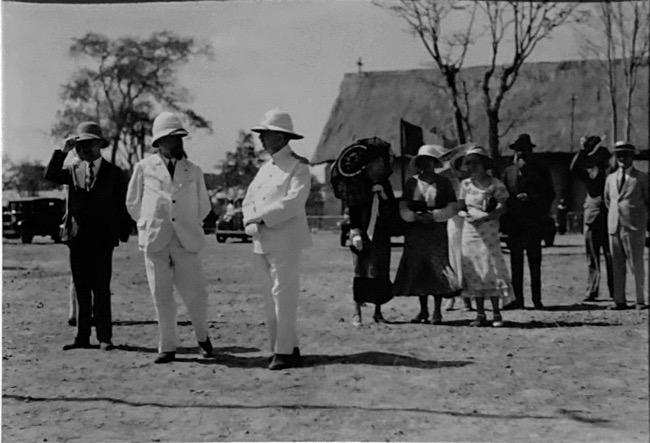



28 October 2022 – It takes two
As part of the Photo Marseille 2022, an open air exhibition is given on the place Villeneuve-Bargemon, just behind the town hall. A short professional stay is an occasion to step out and enjoy. Its title: “The Anonymous Project – A deux, c’est mieux”… it is better with two. A large selection of adorable vintages colour slides spanning over 70 years by amateur photographers, collected by filmmaker Lee Shulman show ordinary lives of two people, taken at a given moment in their activities. Complicity between them, sharing of a moment, a joy, a laughter, a somewhat embarassing situation, a gesture. This is in essence the best of ourselves. The photographs were assembled in a random box of vintage slides purchased by the filmmaker. This exhibition, placed in a public space, where people play and live or just pass by, gives those depicted on the slides a second life. Touching moment shared with them.
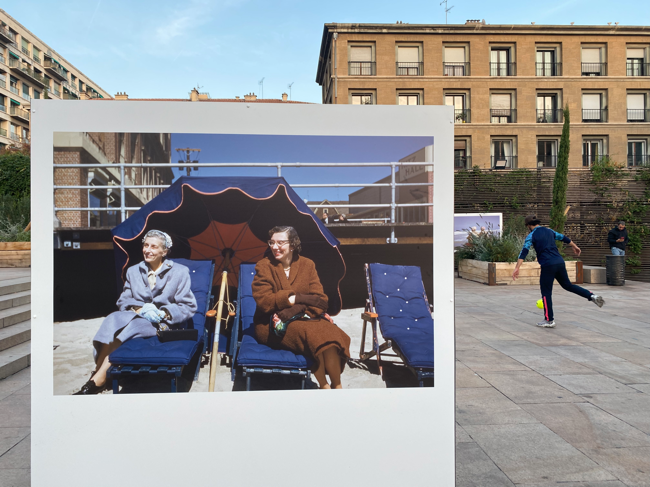
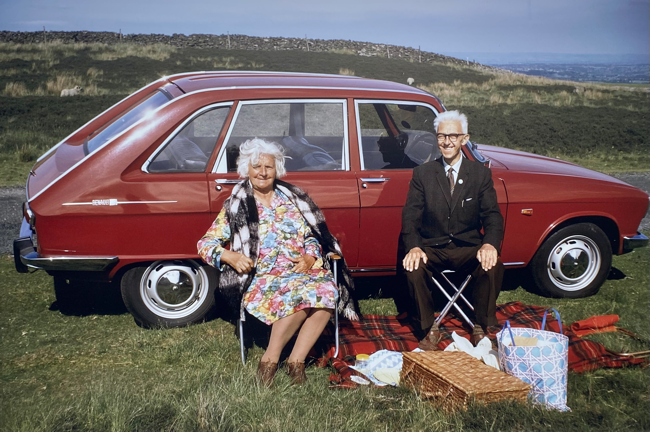

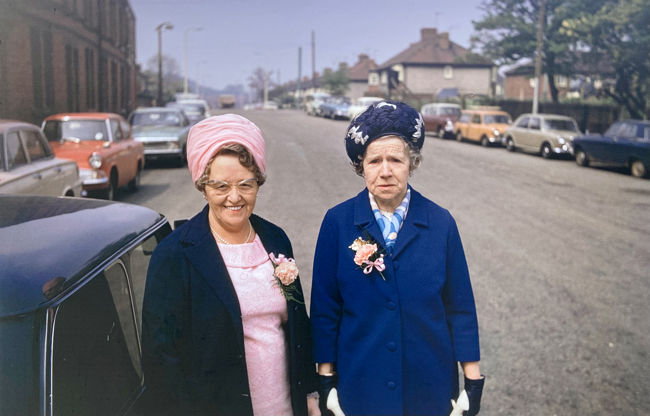

23 October 2022 – Perfect Imperfection
We are all imperfect and finite. The thing is: how do you come to terms with it? The sooner the better, as then, you can live the rest of your life free of this search. For most, it comes later in life as a revelation. Artists have sought perfection in their art, the lines, the palet of colours, the plastic of a body, a rendition of reality. Some are working their creation over and over again, until their view of perfection is achieved. Some have come to terms with imperfection, have accepted it to the point of beautifying it, on canvas, in objects or on photographs. The Japanese have theorized it with their concept of wabi-sabi. Japanmuseum SieboldHuis in Leiden gives a broad exhibition of the concept with more than one hundred pieces presented by Japanese and international artists using different media like photography and ceramics. A wonderful journey through transience and imperfection is offered to the discerning contemporary visitor always caught in his/her day-to-day activities between the speed and the “always more” of our society. A refreshing haven of peace.




23 September 2022 – Burgundian Sakura
The famous maison Veuve Ambal, specialized in Crémant de Bourgogne, opens its doors on a regular basis to small scale photo exhibitions organized together with the Nicéphore Niépce museum of Chalon-sur-Saône. What a delight to see vintage Japanese photographs of the 1860’s. After the opening of Japan to the western world in 1854, some European photographers went to Japan to open up studios like the Anglo-Italian Felice Beato or the Italian Adolfo Farsari. These delightful photographs show the traditional Japan: Geishas, sakura, craftmen, paysans and street views enchant our early 21st centuty eyes. Most of these photographs were posed, to accommodate the technology of the time. They are presented in the halls and corridors of maison Veuve Ambal. A sweet smell of wine in the making in the nostrils, we travel far away, to a different place and time, in a refreshing combination of genres.



6 September 2022 – Lazy Susan?
I saw Susan Meiselas photos for the first time when I was offered her book “Nicaragua” by a dear friend, as being something that would interest me. This was a wonderful gift indeed and I revisit regularly the powerful pictures of the fight of the local population against the ruthless regime of Somoza that eventually lead to his fall and the rise of the Sandinista. No need to introduce Susan Meiselas. This Baltimore born American photographer has been associated with Magnum Photos since 1976. She started her activity close to home, with the strippers of New England, but quickly switched to a more ambitious project in Central America: she documented the insurrection in Nicaragua, in the 70’s, revisited the situation in the 90’s and the early 2000’s. She also spent time in El Salvador or Kurdistan. Her social engagement remained throughout her career, like one of her latest projects in England, covering women in shelters. A short stay in Berlin was the occasion to visit a retrospective of her 50-year long career at C/O Berlin. Under the title “Mediations”, which to me reflects on her approach to documentary photography she practices, more than 250 photographs are presented in this large exhibition covering her oeuvre, in black and white and vivid colors. Of course, the center piece is the so called “Molotov man” with an interesting and revealing behind the scene account of that photography and what happened to that man later. In any case, Susan Meiselas is not lazy Susan.




29 July 2022 – Bliss at the top
Contemplating Matthieu Ricard’s pictures is a Buddhist act in itself, like a moment of meditation. They provide calm, peace and a sentiment of wholeness. Matthieu Ricard, because of his position and his background, has a unique perspective on people and the planet. He probably fits in better than the average westerner in most places he visits. He is part of the landscape and can pretend to be invisible to the outside world, thereby snatching the most remarkable expressions from close by. Does he need a fixer? maybe not. His monk status gives him the aura and introduction most people won’t benefit when traveling overseas. The result? a collection of remarkable views on some of the most breathtaking places and people on the planet. His usual playground is high in the Himalayas, where no one goes. Over the years, he has assembled views of cultures and rites like no other. His eye is clearly generous and caring. His view on people loving and kind. One can clearly see how much he enjoys being there and witnessing these dances, events, large assemblies. The arch de la Défense gives him, in a peaceful place, high above the ground, remote from the rumors of the city, a large space to show his pictures, for our undivided attention and pleasure.


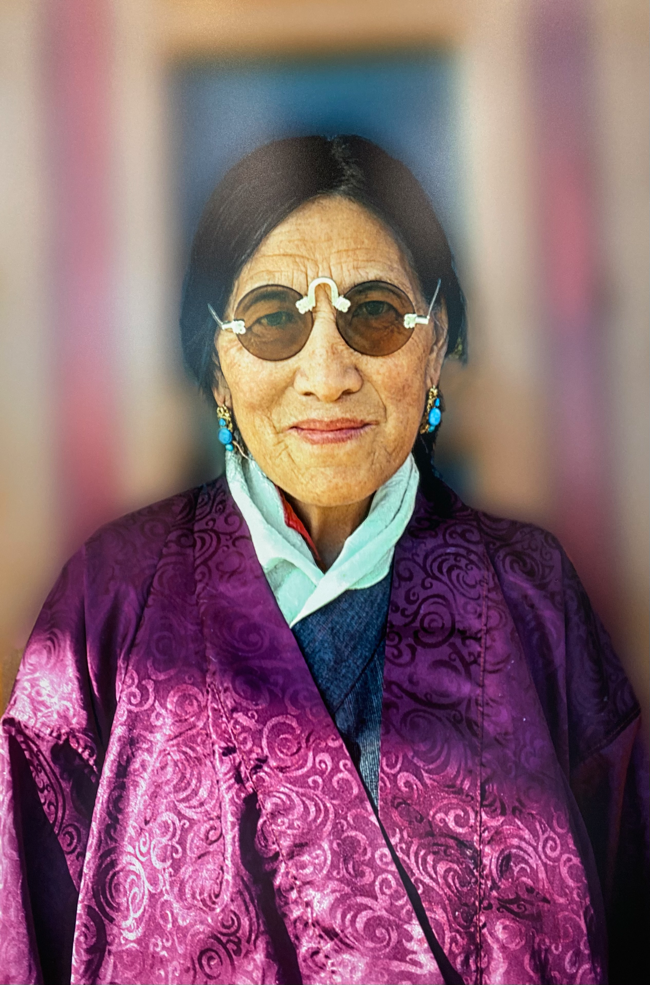




29 July 2022 – Saga d’eau
Salgado continues to present his monumental work to the French public, and the French public seems to like it. This time, the work turns into a master work. With Aqua Mater, mother water (but for me also “water matters”), he gives an overview of some of his work around the theme of water, from the Amazon to Iceland, the South pole and back. The setup is exceptional: A 1,000 square meter pavilion, inspired by the indigenous great malocas, made of Gadua bamboo, was built from scratch for the occasion on the overheated La Défense parvis, to host the exhibition. The result is an area of enchanted calm, freshness, dimmed light, bathed in water-inspired music. The lighting on the pictures is phenomenal and highlights each scenery displayed. Salgado benefits an extraordinary logistics. Often taken from heights, an airplane, a helicopter, a balloon, his photographs embrace a large area of space, often unreachable on foot for the normal person. He seems to rule over clouds to make them appear majestic and threatening. As a demiurge, he organizes people and animals, nature itself, to fit his desires. I must say the result is stunning. Despite critics that he is too commercial, too predictable, too well polished, too perfect, his photographs remain for me an enchantment for the eyes and the soul and one leaves this place rested and calm, with lasting impressions of the vistas revealed by Salgado.


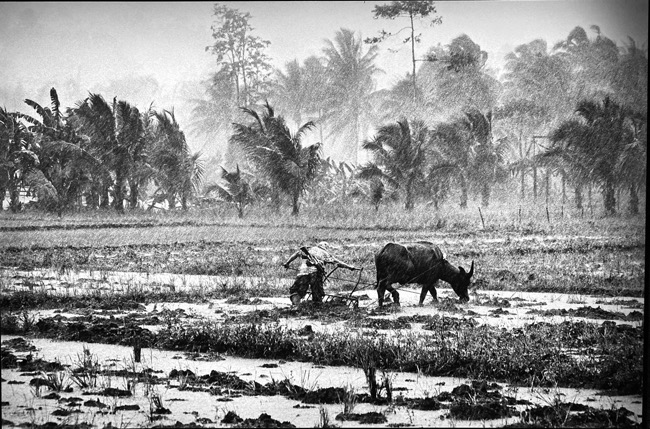



28 July 2022 – You said landscape?
Henri Cartier-Bresson experienced the landscape like no other: like a painter. From his position as a spectator, slowly getting filled with the general view at first, then discerning geometric lines and patterns, experiencing it, mentally drawing the lines, composing his tableau, carefully weighing in the patches of light and shadows, the different colours offered, transforming them into shades of grey with various intensities, and then at some moment giving the order to his finger to push the trigger, snapping the picture… HCB expressed his experience as follows “to photograph is to hold one’s breath when all our faculties converge to capture the fleeting reality; it is then that the capture of an image is a great physical and intellectual joy”. I feel the same physical and intellectual joy looking at his images, again and again. I am charmed by his compositions, modestly perfect, with the characters exactly where they should be, with some subtle humour at times, like this one-legged man in Hamburg, not perceived at once, or the customs officer of Bailleul, sweeping in front of his shelter, on a cold winter morning. The Fondation shows a series of images selected by Cartier-Bresson before his death, for an exhibition in Japan in 1999. Some are well know, some less. We also see when more than one shot was made of a particular situation and why a given image was selected. Throughout the years, the fondation is expanding. Expanding its approach to Henri Cartier-Bresson’s oeuvre (I would love to see his never shown before pictures one day!) but also its exhibition space with an additional 30% surface area. Something to rejoice in advance.
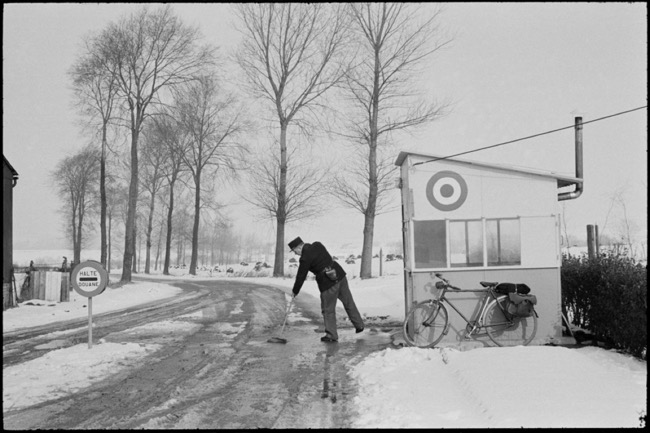




28 July 2022 – His eye in my hand on my heart
L’institut du Monde Arabe, a marvelous building in itself located on the shores of the Seine river, invites us to a travel back in time with Raymond Depardon, a well-known photographer and movie maker, a legend, and Kamel Daoud, a much younger Algerian writer. This travel through time and space brings us back to 1961 in Algiers and Oran, abundantly photographed by a young Depardon, and 2019, photographed by the same, 58 years later. Daoud, born 8 years after the independence of Algeria, wanders with him through time and history and provides his own comments, with his views of 2022. The result is a unique cooperation between two artists confronted with the same topic: a large body of black of white photographs showing everyday life in the disturbed Algeria of 1961 and a more appeased Algeria of 2019, showing yet other signs of possible disturbances. Daoud summarizes this work eloquently: “Raymond Depardon photographs what he sees at the junction of what he does not see. I look at what I don’t see, thinking I know what it means. His eye in my hand. His body is my memory. What interests me in the photographer is his body, his wanderings, his journey: I slip into him, I fit his movements, his gaze, his culture, his prejudices perhaps, but also his singularity. Wandering from click to click”. No better way to say it.



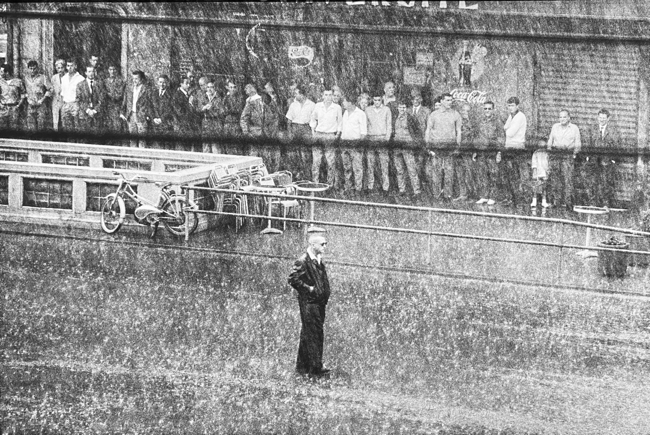
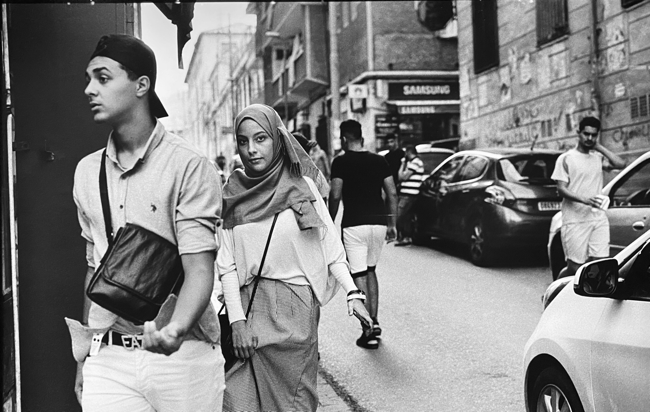



28 July 2022 – August in July
Centre Georges Pompidou features a large exhibition on the art and culture of the Neue Sachlichkeit (New Objectivity) in Germany in the 1920’s and around August Sander. It is a temendous overview presented in France of this artistic trend. Apart from painting and photography as the main art forms presented, the project also brings together architecture, design, film, theatre, literature and music. Although fascinated by some of the portraits painted by Georg Grosz (especially his “Porträt des Schriffstellers” showing an astonishing look alike to French political dwarf Eric Ciotti) and Otto Dix or Jeanne Mammen (with her “Zwei Frauen, tanzend” amazingly resembling the drawings by French contemporary comics artist Boucq), the purpose of this note is to report my fascination for the portraits of August Sander. It is my second encounter with Sander. This time, Centre Pompidou did not hesitate to provide a significantly large body of photographs from his master work “People of the 20th century”. Sander painstakingly photographed his contemporaries, before the chaos brought by the nazis (he did not know in 1920 what was going to happen in the 1930’s and 1940’s). He systematically ordered them in all branches of society, the artists, the farmers, the employees, the clerks, the workers, the clergymen, etc. It gives an insightful view of the German society in the early 20th century, with these people long gone, staring back at us. The body presented is so large that I can only extract a few I particularly enjoyed, like the boring looking engineer, the impressive pastry chef, the tormented painter, the smoking secretary or the amusing police officer. A last reflection when leaving this gallery of portraits…what happened to those people in the next two decades?





27 July 2022 – Exceptional women
My day in Paris continued with an exhibition of the work of exceptional women, the very reason I went to Paris in the first place, to meet the “women, war photographers”, exhibit displayed at the museum of liberation of Paris, near place Denfert-Rochereau. I met well-known figures like Gerda Taro, Lee Miller, Christine Spengler, Françoise Demulder and Catherine Leroy but met also new ones like Susan Meiselas, Carolyn Cole and Anja Niedringhaus. The latter, a German, remains to be remembered as a rising star, until life was robbed from her at the early age of 48, at a checkpoint in Afghanistan. All in all, a trip through the gruesome wars from the 1930’s to today, as seen through the eyes of some remarkable women. Whether in black and white or colour, they show the story to tell. That of the absurd, of pain, fear, loss, blood, tears, chaos, death. A bit of hope maybe as well, when one stares at Vernon Wike, the corpsman in Anguish on Hill 881, or the surgeons operating on the battle field of Normandy in 1944. From the civil war in Spain to the recent events in Afghanistan, women have been there, taking all the risks, reporting, taking pictures, telling those stories and bringing them back for us to wonder, despair, or just gaze in awe. I already reported on Catherine Leroy and wondered why she was not recognised by a book. The catalog of this exhibit is a meager gesture to her legacy, but it is slowly getting there. One regret, the absence of Véronique de Viguerie from this exhibition: she would fit amongst those grandes dames.





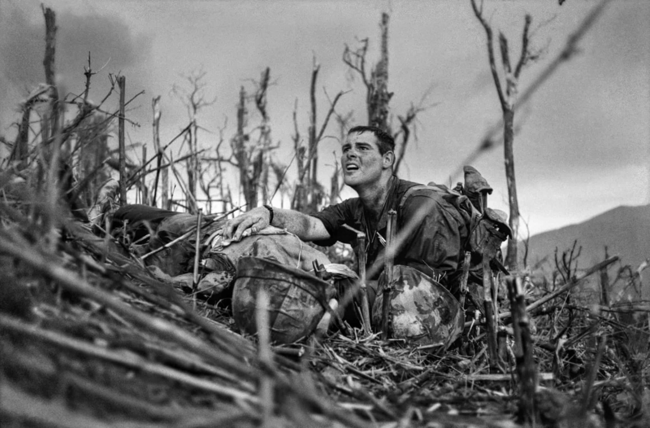
April 1967 © Catherine Leroy

© Carolyn Cole / Los Angeles Times

© Anja Niedringhaus / picture alliance / AP Images
27 July 2022 – Steve McCurry’s curries
Steve McCurry’s curries are made of a mix of good looking people, being at the right place at the right time with the right fixer, saturated colours, picturesque places. Despite the controversies about his removing disturbing elements from his pictures, or the abuse of “creating the moment and make it look purely spontaneous”, one cannot just not enjoy the experience. It is a ravishment for the eyes. The Musée Maillol, in the heart of Paris, gives a large view of McCurry’s work, old and recent. The link between Musée Maillol et McCurry in particular, the sculptures of Aristide Maillol and the pictures of the American photographer in general is not obvious. As a matter of fact, the second floor, fully devoted to Maillol’s work, was totally empty of visitors, despite its own beauty and interest. So, one asks whether the Musée was trying to attract visitors, just for the sake of cash generation? In any case, the displays, in darker rooms with perfect lighting, were stunning. McCurry’s portraits echoing each other, his landscapes inviting the visitor to just step in. I was a bit distressed by the proximity of the displays, not allowing an intimate interaction with the photos, because of the large crowd present, make that’s the price of success. McCurry’s kitchen is popular and the crowds are attracted to his curries recipes. Once upon a time, Steven McCurry was a photo journalist with Magnum. He covered the conflicts around d the world, spending much of his time in Afghanistan. The first room showed his black and white photographs of the late 1970’s. A couple of pictures of 1979 made a lasting impressions and stayed with me, long after the visit: This mujahid praying with his Kalashnikov rifle and the fierce looking boy with a wooden Kalashnikov. I was wondering: what happened to him in the last 43 years?







2 July 2022 – Rooted Rutten
William Rutten has a very full address book. He knows everyone and eveyone knows him. His exhibition at the very active Museum Hilversum tells it all: he photographs Icons and his photographs are icons. From The Netherlands to the USA and across Europe and Asia, Rutten’s camera captures the essence of people. His approach is simple: a small corner of his house-studio has the best light: that will be the place where he will squeeze in the artist to take their portrait. Museum Hilversum provides a large overview of his oeuvre, spanning over 35 years. Rutten is rooted in our collective memory and his photographs provide not only a delight for the eyes but also a trip through our own history.
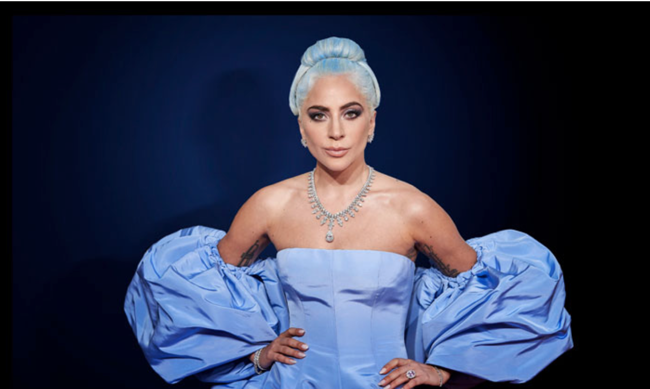




18 June 2022 -WorldPress Photo 2022
The annual rendez-vous of the WorldPress Photo is currently taking place in the Nieuwe Kerk of Amsterdam. Beyond the usual reporting on the sufferings of the world, I focused this year on some of the stories told by artists involved in long-term projects throughout all the continents. Lalo de Almeida, a photographer based in São Paulo, Brazil, tells us about the Amazonian dystopia, portraying the social, political and environmental realities of Brazil under the presidency of Bolsonaro. A gruesome view of the Amazonia, today, the lungs of the world. Charinthorn Rachurutchata, a photography-based visual artist based in Bangkok, Thailand, juxtaposes archival images of the 6 October 1976 massacre of students at Bangkok’s Thammasat University with photographs she took during the 2020-2022 Thai pro-democracy protests, in order to understand the root causes of the present-day protests, using the Japanese technique of kintsugi by tearing photographs, then mending them with lacquer and powdered gold: an elegant way to share her will to remember, the title of her work. Matthew Abbott, an Australian who once lived in West Arnhem Land and was accepted into a local community, follows the Indigenous Australians who have strategically burned land to protect their environment for tens of thousands of years.Guillaume Herbaut, member of Agence VU’ since 2021, is a French photographer based in Paris, France. He followed the events in Ukraine In November 2013, when tens of thousands of people took to the streets of Kyiv in the Ukraine to protest against the decision of pro-Russian president Viktor Yanukovych to pull out of signing an association agreement with the European Union. An Ukraine crisis calling another one. There were many more stories told, but these were, for me, representative of a new generation of artists driven by a strong desire to tell a story.








1 June 2022 – Turnley Turnkey
When an announcement is made that a winner of the Pulitzer Prize, of two World Press Photos of the Year, and of the Robert Capa Award for Courage is going to have an exhibition in Paris, the occasional traveler that I am, making to good use an encounter with a dear fellow photographer friend is intrigued and wants to go. So, here we are, rushing towards the Mairie du IIIème for the promised exhibit by David Turnley about “the soul of mankind”. Turnley has documented the human condition in more than 75 countries, and is considered to be one of the best Documentary Photographers working today. How deeply disappointed we were to only see 6 photographs hanging on the gates of the mairie. Great photos for sure, but doesn’t he deserve a better treatment? The pictures were mainly taken in Paris in the 1970’s and greatly inspired by Henri Cartier-Bresson. Turnley speaks warmly of Cartier-Bresson’s “lyrical and rhythmic sensibility for movement and space”. He went all the way from Indiana to Paris to meet him and Martine Frank and eventually managed to knock at their apartment front door. This encounter changed his life forever. The few pictures presented gave a wonderful insight of his work and we would have loved to spend more time exploring it further. What a missed opportunity. Let’s hope David Turnley gets a fairer chance in the future.

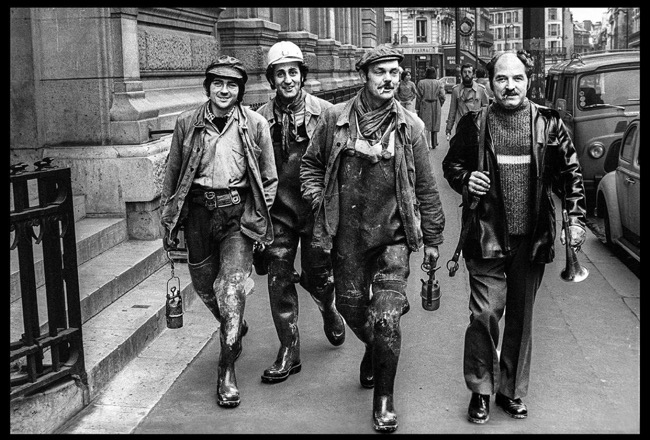

29 May 2022 – Dagmar van Weeghel is magic
The Dutch photographer Dagmar van Weeghel is central in the Alexine Tinne exhibition at The Hague Historical Museum. She revisited Tinne’s travels with her own work and her master photographs are also exposed, alongside those of Tinne. This work, in collaboration with the Hague Historical Museum and Leiden University echoes the life of Alexine Tinne, and one wonders, at times, who the true star of the exhibit really is. The photographs taken in Tinne’s home in The Hague are mesmerising. Dagmar managed to make us feel her presence beyond time, the soft rustle of the fabric of her dress when she passed upstairs or just nearby, the breath of a phantom… Dagmar reenacted old photographs and paintings of Tinne with a model. Again, Tinne’s presence is tangible, through the magic of Dagmar. Furthermore, in the spirit of Tinne’s travels, Dagmar invites us to meet beautiful people, similar to those Tinne’s encountered during her travels. The result is a series of stunning portraits of beautiful contemporary people living in The Netherlands but with a strong link to their roots. A remarkable enriching encounter.






28 May 2022 – Ten for Tinne
Alexine Tinne was special. Educated in the best circles of The Hague, with or despite her father’s wealth accumulated on slave trade, she grew up riding horses, playing the piano and becoming a “proper” 19th century lady. After the early passing of her father when she was 10 years old, Alexine became the richest lady in The Netherlands. She started photography in The Hague and Scheveningen and started to explore the world with her mother and aunt at age 26. North Africa became a new territory to explore and to photography. Her endeavours of reach the Tuaregs came to a halt in 1869 when she was murdered. She left behind her ethnographic collections and photographs, now at the National Archive and Municipal Archive of The Hague. The exhibition presented at the Historic museum of The Hagues provides an overview of her life and work, in the form of a dialogue between past and present, between two female photographers, Alexine and Dutch photographer, Dagmar van Weeghel, who sought to approach Tinne’s life and legacy by recreating her and her settings with her series “Nader tot Tinne”. Dagmar’s photographs will be the subject of another post.



22 May 2022 – Coup de ❤️ for Alex the Alchemist
Alex Timmermans calls himself an alchemist. A mixture between technique and magic, art and precision of an intricate work. He works with the old fashioned wet plate process, collodium photography. To tell us his stories with a special quirky humour, he will spend long hours setting up his antique camera, lighting, model, plate. The result is that of a one-of-a-kind photographer. Small stories, tongue in chick. with some British humour and the same enigmatic character. The viewer needs to pay some attention to the details and relate to the titles. The situations depicted give a smile, a laughter. He is my coup de ❤️ of the day. I particularly liked his butler delivering a drink in style, attentive, at the wheel of his high speed racing car, or the angel taking a rest in a chaise longue. I also enjoyed his “Fleeing Brexit” shot.

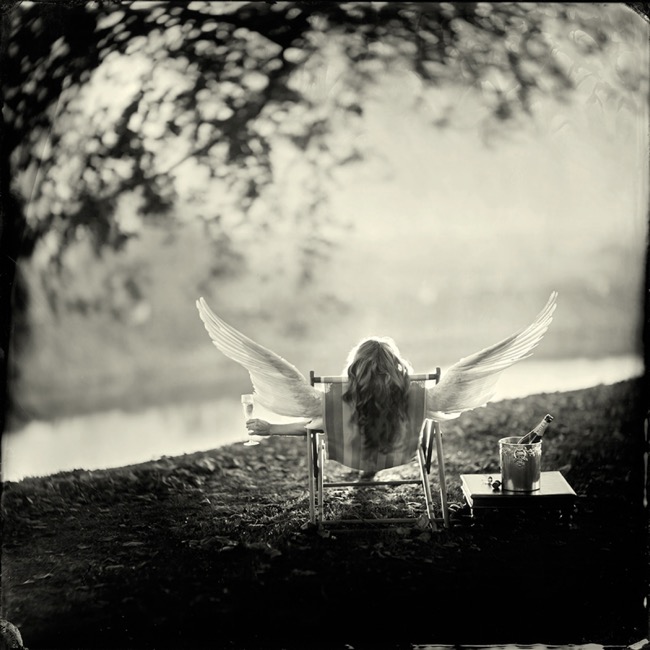

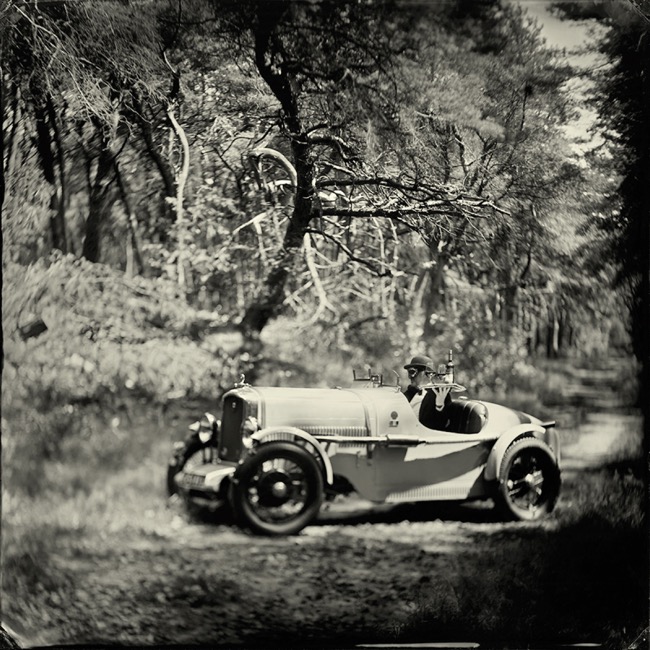
21 May 2022 – La Haute
Haute Photographie: a new concept in a new location in the old harbour of Rotterdam. What’s better than a large refreshed former warehouse with high ceilings to exhibit photographs? Keilepand is not easy to find but worth the trip. The Haute Photographie event draws its analogy to what’s haute cuisine is to cuisine. A posh concept for a high-end exhibition featuring a healthy and copious mix of (old) masters like Arnold Newman, Marvin E. Newman, Vincent Mentzel (again!) or Atze Haystsma and young new talents, like Alex Timmermans, Antoine Khol, Du Choff, Constanza Gastaldi or Joep Hijwegen. To mention those few, amongst more than 40 artists presented. Deep black&white or bright colours harmoniously provide ravishment for the eyes and browsing through the displays feels like being in a museum. Of course, not everything resonates in the viewers, some catch the eyes and attract, some don’t. I selected the few pictures featured here: The bright coloured reflection and silhouette of Joep Hijwegen, with a special attention to the eye, providing a patch of white at the bottom left of the picture, the delicious quirky humour of Alex Timmermans, subject of an upcoming coup de ❤️, the mysterious mountainous landscape of Costanza Gastaldi using the photogravure process, the no less mysterious manly silhouette of Du Choff named “Katachi”, the shy young David Hockney in his atelier or the humorous 1948 warning of Ge van der Werff “Stay calm, not a racing strip”, depicting a place and time long gone. Finally Antoine Kohl, a French photographer with a unique aesthetics, showing material somehwere between photographs and modern paintings. The list of discoveries could have been much longer. The staff of Haute Photographie strives at putting together an exhibit twice per year, once in Rotterdam, once in Amsterdam. Something to look forward to. The appointment is already made for the next edition in September.




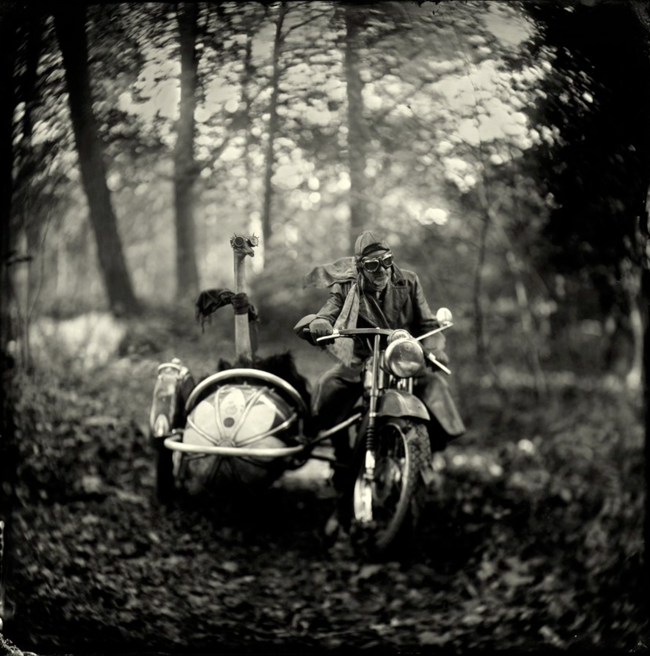
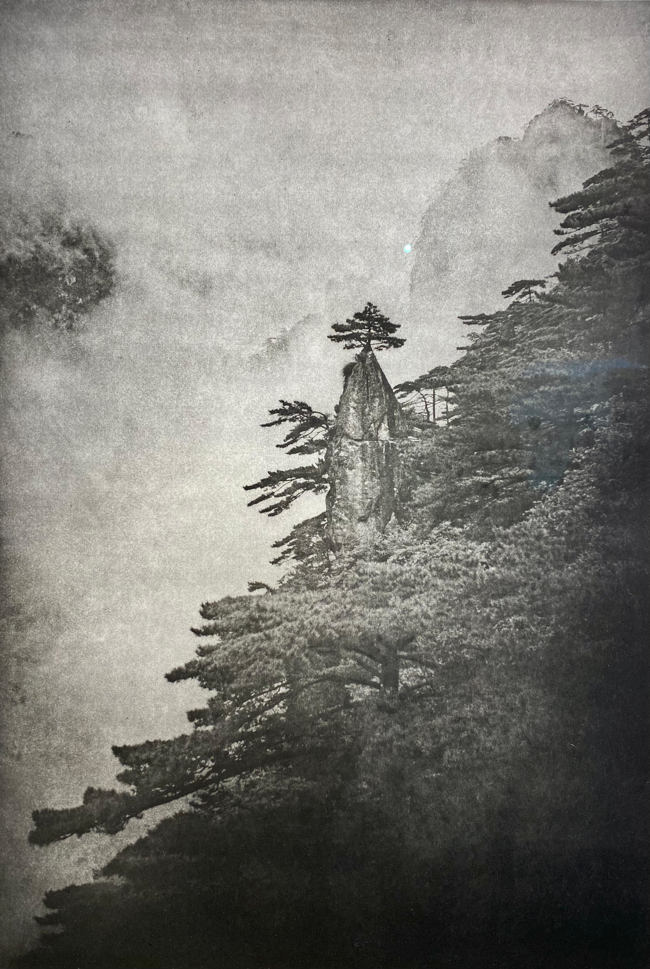

14 May 2022 – Brandt’s brand
Brandt’s brand was to some extend, but not only, “dark and crisper”. He tried to explain it in a letter: “There are certainly no rules governing how a photograph should be printed. This really changes from picture to picture. Some should be dark and muddy, some very white and underprinted. I often prefer the very contrasting black and white effect because it looks crisper, more dramatic and very different from color photographs”. FOMA in Amsterdam puts together a large restrospective of his work, from the early 30’s and his “English at home” and “a Night in London”, to after the war with his exploration of the female nude. Bill Brandt was a German who became British, putting him already in a unique breed of people. He worked in Vienna and Paris, met and worked with people like Man Ray, André Kertész and the surrealists. His work, as a result is a nice bridge between modernism and surrealism. Brandt was fascinated by the “unheimlich”, the weird, the bizarre, the uncanny, the strange or mysterious in an unsettling way. FOAM called the exhibit “The Beautiful and the Sinister”… associating “sinister” with “uncanny”. I don’t really subscribe to that, as I don’t see anything sinister in his work. Bill Brandt was also a witness of his own time and reported on what he saw. I particularly enjoyed his views and street photography of the UK in the 30’s, his encounters with famous people, more than his landscapes, whether of the female body or the wider nature. He was also well aware of his art and wrote wise words, about it, words that continue to resonate with me, long after having left the grounds of FOAM… “A feeling for composition is probably the most important asset for a photographer. I think it is partly a matter of instinct; it can perhaps be developed, but I doubt it can be learned. To achieve his best work, the photographer must discover his own world, and That’s exciting and he must come to terms with his lens. The lens is to a creative photographer what the eye is to a creative painter. With it he must see more intensely than other people. He needs a child’s sense of wonder always to see the world anew. His dread is that he may lose this ability, for then he will copy himself and his work becomes sterile and repetitive”,





5 May 2022 – Viva España
I took the opportunity of a visit to the remarkable Museo Carmen Thyssen of Málaga to discover two Spanish photographer artists I did not know about at all: The first one is Antoni Arissa Asmarats (1900-1980) who was one of the most influencal Catalan photographers. A beautiful play with shadows and light, mixed with a deep black and white, makes for a magic experience. He wents from pictorialism in the early 1920’s through symbolism in the early 1930’s and finally to avant-garde until 1936. There is little known about him past the Spanish civil war and the latter part of his life. He just stopped taking photographs… There are little exhibits or publications about his oeuvre. An article in El Pais (dated June 2014) called him “the missing link in Spanish photography”… When he died in 1980, his heirs, not knowing about his work, threw away most of the glass negatives and sold the rest for a dime on the dollar. It is thanks to the pain-staking work of two historians, Rafael Levenfeld and Valentín Vallhonrat, that his work was reassembled and presented… but yet, just one book, hardly available, exists. The second photographer is Gabriel Casas (1892-1973), also born in Barcelona, one of the most important and prolific photojournalists in the 1920s. Photos full of movement, quite rare at the time, are the most representative of his work. Gabriel Casas peak period is from the International Exhibition in Barcelona at 1929 to the end of the Spanish Civil War in 1939. He was called “the photographer of the impossible angle”, for his high-angle and low-angle shots, making him one of the most modern photographers, well in advance on his times. Both Casas and Arissa are universal photographers deserving to be widely known and recognized as such and yet, for whatever reasons, they remain known in their native Catalunya or Spain at best, unlike the likes of Vivian Maier, now widely publicised, recognized and published globally. Fair?




23 April 2022 – Moroccan Roll
Moroccan photography is alive and well. The Cobra museum demonstrates that fact in a wider exhibit of Moroccan art. Young and old photographers are present under the injonction “Photography, Now!”. Several artists are present, like Mous Lamrabat and his hilarious traditional lady in pink with her eyes covered with less traditional glasses, khalil Nemmaoui and his structures, Daoud Aoulad-Syad who says “no”, Hassan Hajjaj – already spotted in Breda – with his flamboyant montages of patterns, colours and interesting characters, like this “Imaan in Da Shop”, or Rachid Ouettassi who shows Tangiers from yesterday and today. Across generations, the Moroccan photographers shed a indifferent light on their own culture and society. Not the postcard but a country well alive, full of contradictions, passion, noise and furor. A country torn between tradition and modern life, between the past and the future, well anchored in today’s present. A particularly enjoyable experience and refreshing moment amongst these universes.





23 April 2022 – Korda de acuerdo
If I tell you Alberto Díaz Gutiérrez… does it ring any bell? Not really! If instead, I call him Alberto Korda… or simply… “Korda”? Any better? If I tell you: the author / photographer of the most iconic picture ever taken? Do you now get it? El Che, 1960. A couple of shots taken quickly, one horizontal, between another man and a palm tree, one vertical, with the palm tree in the frame, A lucky day for Korda. An almost christic picture of a man, with voluntary eyes looking far away, lots of hair, a beret, the mouth closed… a “guerillero heroico”, modern warrior, eternal warrior, the symbol of a generation. Alberto Korda followed Fidel Castro and the Cuban revolution for many years and documented the times, from the lengthy speeches of Fidel, to the visit of Jean-Paul Sartre and Simone de Beauvoir, to Fidel and Che Guevara playing golf, to Fidel in New York or in Moscow, to the people of Cuba. The exquisite Cobra museum of modern art in Amstelveen gives a large view of Korda’s work under the title “Korda, Cuba, Che, Glamour”, from the 1960’s to the late 1980’s and 1990’s. Not only a journalist documenting his times but also a true artist, whether when photographing the leaders of the Cuban revolution, the ordinary Cuban people or the women, dear to Korda. He was a simple man, caught in extraordinary circumstances, but Korda remained an artist and he described his work, quoting Antoine de Saint-Exupéry: “It is only with the heart that one can see rightly; what is essential is invisible to the eye”, and Korda to add “that’s a photographer”…






8 April 2022 – Dawoud at Bey
The MFAH is giving a large exhibit of several projects by American Photographer Dawoud Bey. Bey has been exploring the lives of ordinary black people in the USA for more than 40 years. These people stare back at us, the viewers. We cannot really fathom what it is to be black in this country, yesterday, today, tomorrow. Walking through the large display of portraits, close ups, intimate moments gives us a glimpse of that reality, but just a glimpse. Some look back at us beat, others are fierce, disillusioned, full of hopes. Dawoud’s street photography is powerful. His encounters with his fellow American authentic.





6 April 2022 – Davidson: a roaring mechanics
The charming Menil collection gives an exhibit of the most significant photographs of Bruce Davidson, under the title “Collection Close-Up: Bruce Davidon’s Photographs”. Bruce Davidson, an American photographer, was active between 1956 and 1995. Like his humanist peers of the time, he spent significant efforts in documenting what he called “worlds in transition”. Whether in heavily industrialised South Wales in the 50’s, or in Brooklyn, Birmingham, Alabama, Central Park or Harlem, he took the time to build a rapport with his subjects. The result is stunning. Close-ups on the lives of those people, documentation of their surroundings, life styles, encounters. The little boy on a steep road with the contrast of white washes on a backdrop of industry stacks, the teenaged girl checking her hairdo in a cigarettes dispenser, the defiant young black lady caught by two white cops, with in the background the title of a movies echoing the situation, the old lady in her kitchen under the protection of St Theresa and the honourable gentlemen in a cafeteria were the most significant pictures for me. The Menil has a large collection of photographs but does not always show them. This exhibit of Davidson’s photographs is an effort to be praised. Let’s hope more such initiatives will follow.





26 March 2022 – Gold for Silver
Since 1949, the Zilveren Camera is the Dutch price for photojournalism. The Hilversum museum gives a platform to show the winners of the last edition of 2021. We can admire on three levels the different categories rewarded: news, local and international, documentary, local and international, nature, sport, etc. A great show of various pictures, all united by a high level of photographic quality of the topics and themes displayed. A few highlights: the photo of minister Ollongren with the visible sheet of paper that fed the dutch political sphere for many months (Bart Maat, winner of the zilveren camera 2021, a gold medalist of sorts), the clear message of a demonstrator to the police operating a water cannon (Richard Mouw), the inhabitants of Staphorst, slightly disconnected from today’s world (Annie van Gemert) or the black and white pictures of Norbert Voskens. and many many more. A wonderful moment of photography, showing how varied this art can be.


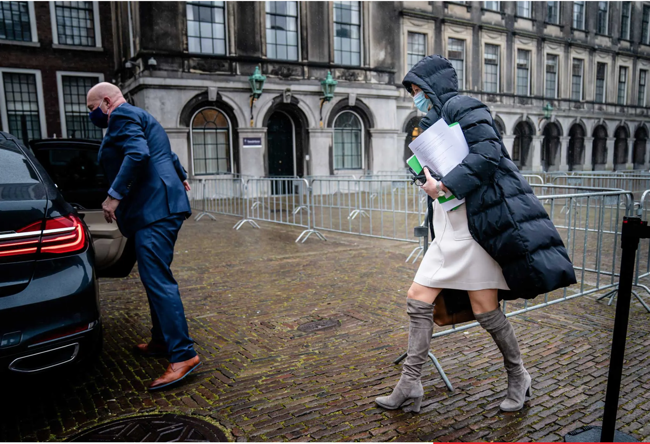
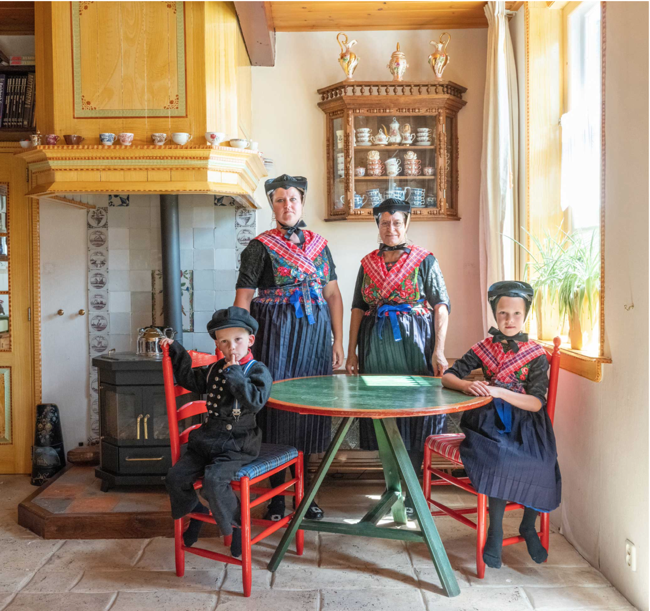
5 February 2022 – Vincent Mentzel again
After being dazzled by Mentzel in Hilversum in December 2021, the Rijksmuseum gives a large retrospective of his oeuvre in Amsterdam. One can wonder about the programming of these exhibits so close to one another. I also wonder if the curators talk on a regular basis to avoid redundancy. In any case, it was another occasion to view (for some revisit) his photographs of the Dutch political elite and public figures in their day-to-day activities. Handsome black and white, an innate sense of composition and an eye capturing the right moment. I selected only of few of the great portraits he made to show here. Vincent Mentzel had a career as a photojournalist, covering topics close to home: politics, the royal family. His work was largely available to the public in the newspapers. The Rijksmuseum, after the Hilversum museum, had a great idea to show his work where it deserves to belong and to be shown: on the walls of a photography museum. It is now done, and well done.





30 January 2022 – Under the tropics
After a drought of more than a month due to Covid lockdown, the museums have finally reopened their doors. This weekend was an occasion to go under the tropics at the Tropenmuseum in Amsterdam where a small exhibit “Through the lens of” has been awaiting the public for a while. Several talented African photographers, male and female, give us their view of various parts of Africa, from North to South, West and East. A variety of situations, characters, landscapes are shown. I was particularly ravished by the work of Nada Harib from Lybia, Fethi Sahraoui from Algeria, Yoriyas from Morocco or Sydelle Willow Smith from South Africa. These four were among the sixteen exhibited. Their photographs go beyond the artistic composition and whether it is the story of today’s Casablanca in “Casablanca Not the Movie”, “Escaping the Heatwave” in Algeria, or that of the women of Lybia, in the series of the same name, or the somehow sad life of the whites in today’s South Africa in “Project: Un/Settled”, these young photographers stand out and catch our attentions. I wanted to know more about them and discovered unexpected jewels: Africa is not only the cradle of humanity, but also a place where talents can grow and bloom. Let’s encourage them and let’s hope for more exposure in our countries in the very near future. In the meantime, it is an exhibit definitely worth visiting in a lesser known gorgeous museum in Amsterdam.
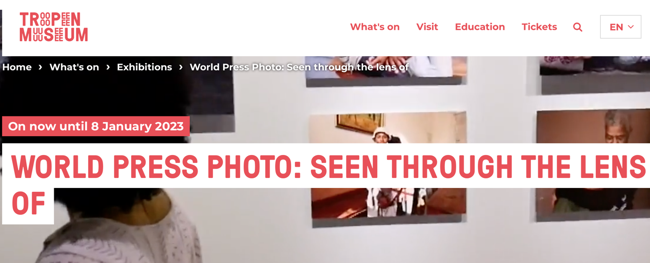


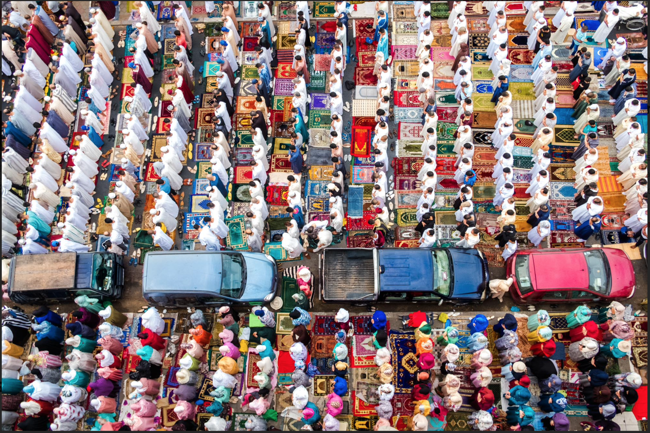
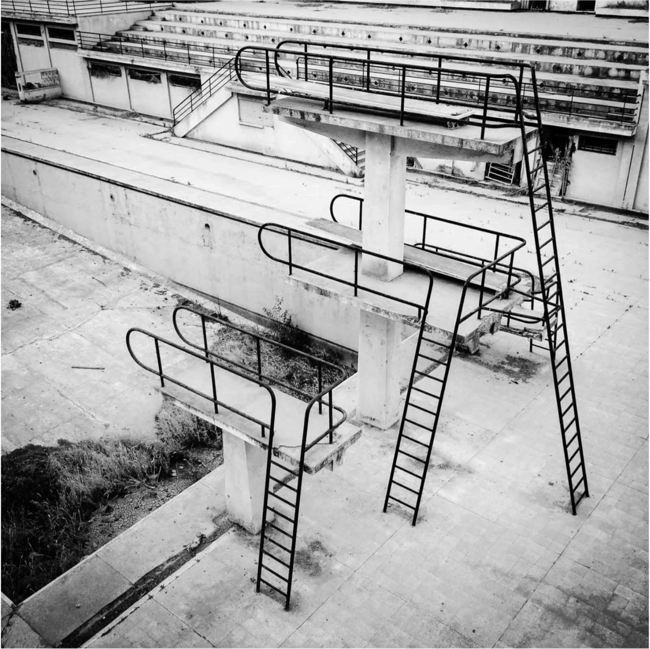





24 December 2021 – Christmas everyday
With the recent publication of new photography magazines, here in The Netherlands and in France, it seems that Christmas is everyday. At least, it is a renewed feast for the eyes. From the avant-gardist Fisheye, to the homage to photo reporters in Like, to the posh Pf fotografie and to an air of Polka.

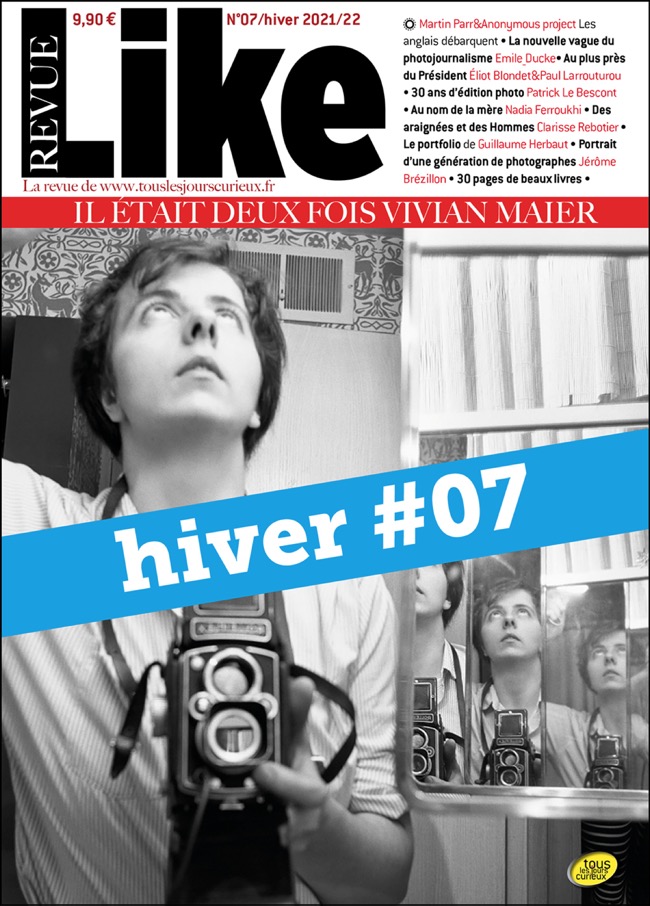

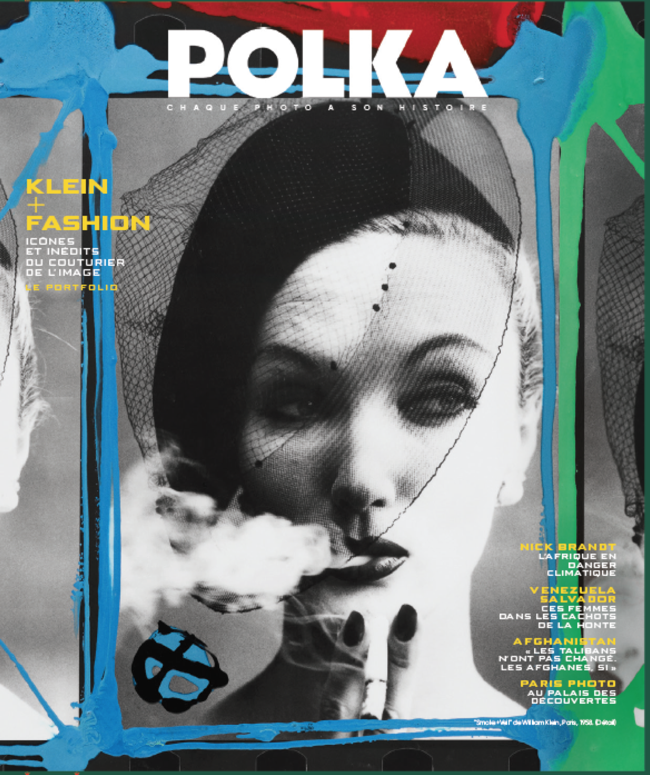
18 December 2021 – This is us
Another weird exhibit at the Fotomuseum Den Haag. This time, it is an exhibit of photographs literally dug out of nowhere. A photographer, Ernst Lalleman, found a box full of large-format negatives in a squatted building in The Hague in 1984. These photographs were taken by a studio, well known to the locals in the past “Foto Americain”. This is a bizarre encounter with past inhabitants of The Hague, most of which are total strangers, photographed in the 1960’s. Lalleman had the idea, through his project “Who are we”, to give a name to these people. So far, he was able to trace back 48 of them. Beyond the documentary aspect, those photographs show a world that is no longer. Nostalgia for the 60’s? I don’t think so, but these people, young and old, staring straight back at us, are disarming and endearing, and yet, strange and weird.


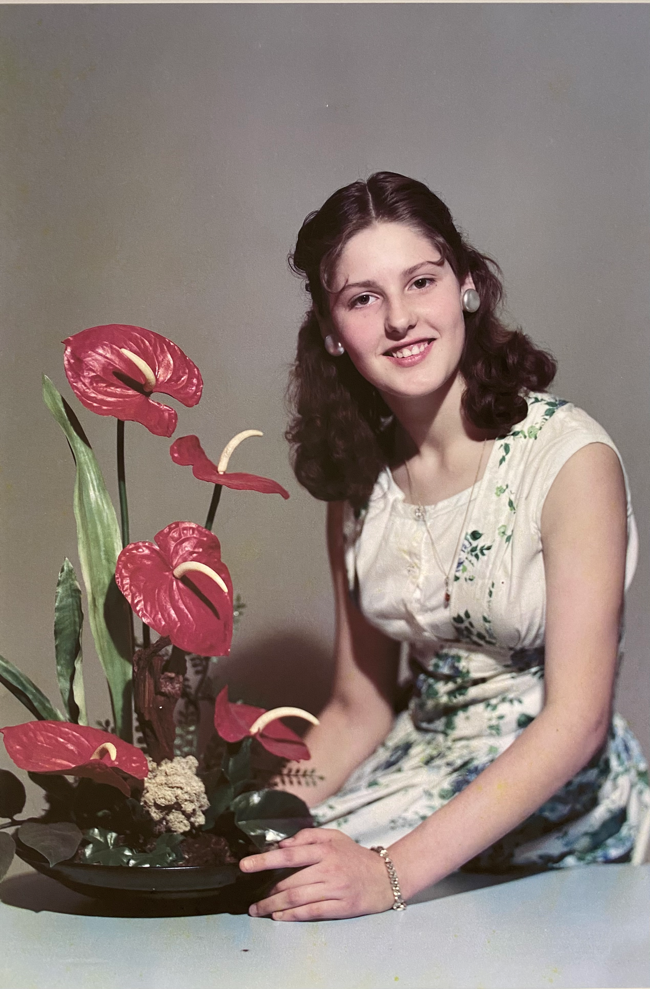
18 December 2021 – I don’t play ball with Ballen
I knew Roger Ballen from his series of photographs and portraits taken in South Africa, collected in his work “Platteland” and depicting a forsaken white population. The portrait of this policeman (shown below) was priceless. I saw him exhibited in Ottawa, Canada, and found it already quite scary and shocking. He is a famous photographer, widely recognised as one of the best of his generation. He was born in New York City in 1950, but lived in Johannesburg, South Africa, since 1980. After studying psychology at the University of California, he started to work as a photographer. Over the past two or three decades, Roger Ballen has mixed drawings, painting, collage and sculptural techniques around his photographs, to create enigmatic, mysterious (weird?) scenes. The Fotomuseum in Den Haag pays a tribute to his creativity by presenting a wide range of his photographs and pieces and invites us to discover “the world according to Roger Ballen”. A weird world for sure, populated by humans at the margin of society, dead animals displayed, revealing the darker sides of the human spirit. Highly disturbing images, staring into the eyes of cruel boys, playing with (or torturing) cats. An esoteric world that we don’t necessarily want to know, to be honest. So in short, I decided that this time, I did not want to play ball with Ballen.


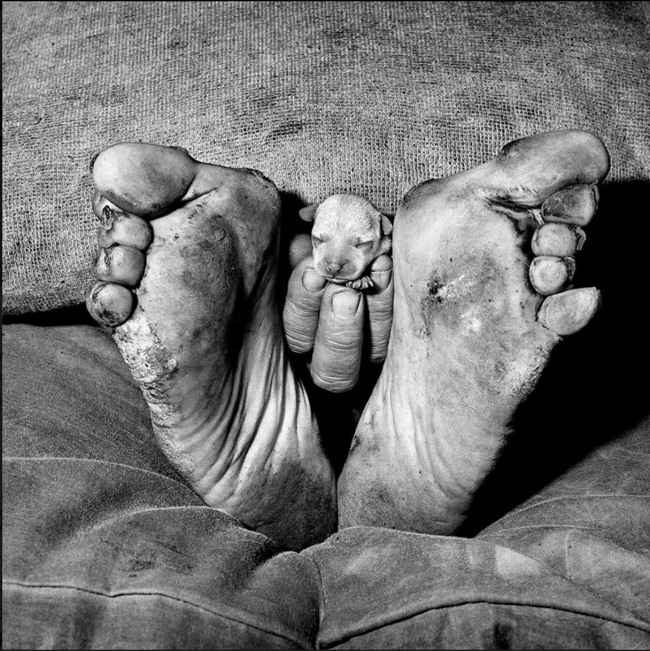


23 December 2022 – Coup de ❤️ for Randy Fokke
I discovered Randy Fokke on a famous Dutch television game program. A woman with a quiet strength and determination. Fokke is also an artist. Apart from acting, which she does professionally, she is also a photographer. Her website, titled “Listen to your eyes” is also an ode to listening to one’s heart. The message of Antoine de Saint-Exupéry in “Le petit prince” comes to the mind “It is only with the heart that one can see rightly; what is essential is invisible to the eye”. Randy manages through her photographs to beat that quote, or else, she tells us another story… your eyes is a direct conduit to your heart. In any case, she is my coup de ❤️ today. I particularly enjoyed her Random Beauty series and her capturing of loneliness in the busy streets of Amsterdam. I hope that Randy continues, alongside a successful acting career, to develop her true talent for images and that she is presented in exhibits and published.


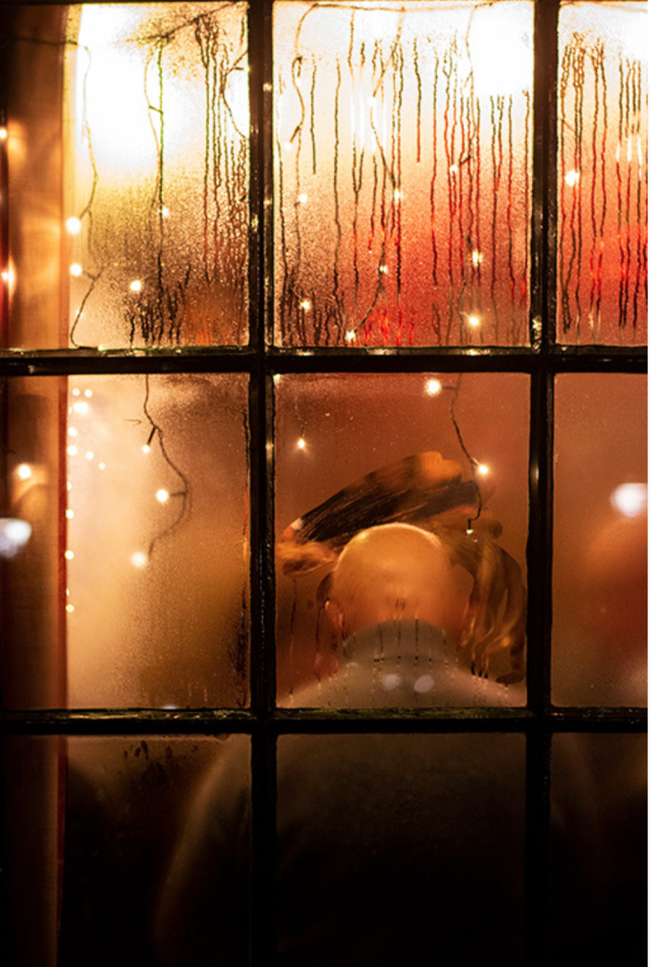


12 December 2021 – Coup de ❤️ for Interstellar Keler
The pictures of New York by Alain Keler are simply exceptional! Somewhere between “The Americans” by Robert Frank and “America in Passing” by Henri Cartier-Bresson. He took his photographs in the early 1970’s while being down and out in NYC and trying to earn a living as a waiter, before eventually being expelled as illegal alien towards Mexico… Beautiful black and whites, a grain to dream of, a profound sense of composition, an intimate encounter with the real Newyorkers hanging out on Washington Square or elsewhere. A very humane look at and a declaration of love to the city that never sleeps. A definite coup de ♥️ for this incredible photographer. Les Editions de Juillet made a remarkable work creating a beautiful object and revealing a wonderful artist. Alain Keler quotes Walker Evans in this book, and it definitely applies to him “Photography is an Art when the photographer is an artist”: chapeau l’artiste! Looking forward to the publication of his works in Latin America in 2022 by the same incredible publisher.




6 December 2021 – van der Velden in the field
On the side of the Vincent Mentzel exhibition, a few photographs of Marieke van der Velden were shown. The self-professed storyteller spent a Monday in Kabul in 2013 and shows us the life of the ordinary Afghani living their life, without that Talibans. With nothing big going on, we see people enjoying being together for a picnic, a walk in a park or a gathering near the mosque. Refreshing pictures of people laughing and profiting of the mild weather. In 2021, these pictures give of course another insight, as one cannot forget to draw a parrallel with the current situation in Afghanistan.



5 December 2021 – The leap of van Gennip
On the side of the Mentzel exhibit, the curator had the great idea to present young talents. Joris van Gennip is one of them. He works for the Dutch newspaper De Volkskrant and covered the Black Lives Matter demonstration in Paris in June 2020. Gripping contrast between this female demonstrator on the ground, hands tied in the back, and the boots of the law enforcement personnel. Graphic views against the blue skies above Paris, and phantasmagorical shadows… a photographer to follow. The future of photojournalism is not dead!



4 December 2021 – Dazzled by Mentzel
It is never too late to be exposed to new or unknown (by me) artists. I did not know of the existence of Vincent Mentzel, although he had a rich career as photojournalist since the early 1970s. His work was published mainly in the major Dutch newspaper NRC Handelsblad but also in Newsweek, Time, Life, and The New York Times. The gorgeous museum of Hilversum, now a familiar place, presents his oeuvre under the title “Photographer of the Power”. I don’t like this title, as it has limited bearings to his talent. Yes, he did photograph extensively the Dutch political arena and class, but not only. He also documented the social and political fights of the average Dutch citizens (they seem long forgotten now), made extraordinary portraits of all sorts of people, like Vaclav Havel or Femke Halsema, the mayor of Amsterdam (whom he managed to render almost sympathetic), travelled to various parts of the world including China, Iran or Suriname, and brought back compelling images of the ordinary men and women in their day-to-day existence. The man, now 75, enjoys the fame he deserves. I truly hope someone will make a book of his masterpieces. `





28 November 2021 – Colour is (also) beautiful
While at the Photographers’ Gallery in London, I came across a small-scale exhibit of the work of Julie Cockburn. Curious and eager as I am, I investigated further… Julie Cockburn takes old found photographs, portraits and landscapes, and gives them a new life with embroidery, ceramic and montages. The result is refreshing, colourful, playful and amusing. A bit Picasso-esque, dadaist. I leave to the curator the explanation of the approach: “In offering up her personal, visual language in dialogue with the original, Cockburn highlights that we all bring our histories and perspectives to bear as we look or ‘read’
photos, and invites the viewer to become aware of, and empowered by, their own reading”.
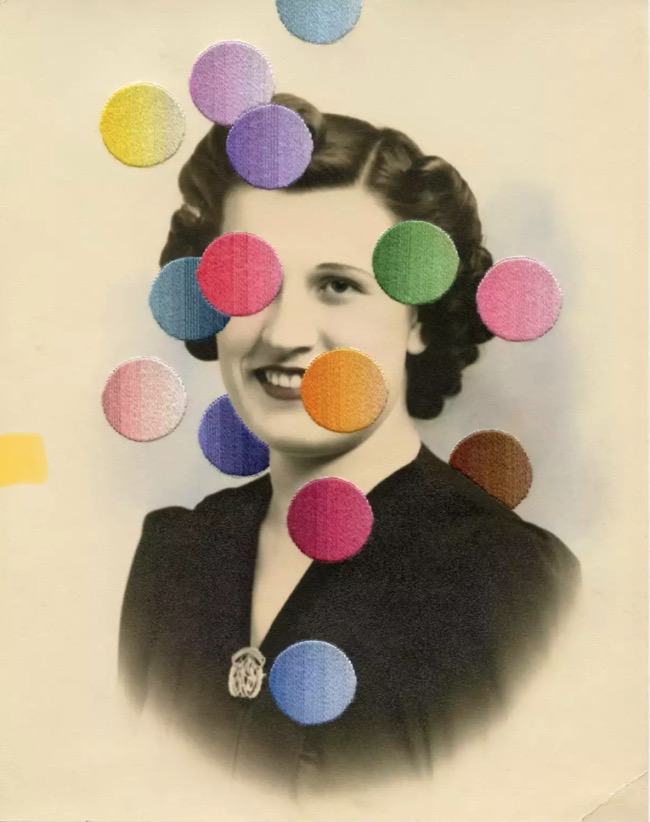



27 November 2021 – Conjunctions
Sometimes, some conjunctions take place… seeing one picture makes you think of another… Helen Levitt met Henri Cartier-Bresson and yet, her picture is anterior to that of HCB. Coincidence? I don’t know. In any case, Helen Levitt’s street baseball player of Mexico City made me think of the boys I met in Havana doing the same.




27 November 2021 – The other side
I stumbled upon another marvel, while browsing for photo galleries in London: the work of Sirkka-Liisa Konttinen. Sirkka Liisa is a Finnish photographer who has worked in the UK since the 1960s. After studying photography in London in the 1960s, she moved to Newcastle in 1969 and started photographing Byker, the part of town where she lived. After the posh England of Regent Street and Pimlico, a trip to the poor England of Byker was appropriate. Poverty exudes from each photograph. Humans making a living in a bleak environment, rows of houses, uniformity, greyness, gloom, misery. Striking images of a time, not too far away in the past, not far away from us. A reminder that sometimes poverty is at our doors and we fail to see it. A sobering moment looking at these images.




26 November 2021 – Levitt in levitation
A visit to London was the occasion to check out a magnificent retrospective of the work of Helen Levitt at the no-less magnificent Photographers Gallery located in the heart of Soho. Helen Levitt was an avid street photographer. From the 1930s through the 1990s, she spent decades documenting local communities in her native New York (and one single small step out to Mexico), capturing everyday city life on the street, in neighborhoods such as the Lower East Side, Bronx, and Spanish Harlem. She left behind a massive body of work, inspired at times by works from Henri Cartier-Bresson whom she met and got inspiration from. I could find among the numerous photographs exposed on two floors, some winks to HCB but Helen Levitt definitely developed her own style, made of surrealist pictures of people making weird poses in the street and candidly going about their business. Summarizing her oeuvre in a few words is impossible but the exhibit presented spans over various moments of her life as an artist: from the streets of Spanish Harlem in black and white to the portraits in the metro to the lovely colour photographs of the 1970s. Helen Levitt also turned to filming the same streets and it was fun to recognise the subjects she also photographed. I give here a few examples only of her masterpieces. All in all, a beautiful moment, almost levitating in awe in front of the pictures of this grande dame.

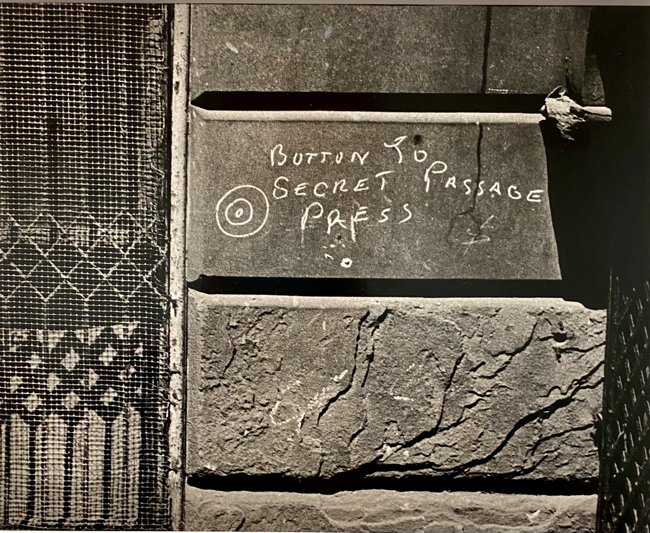



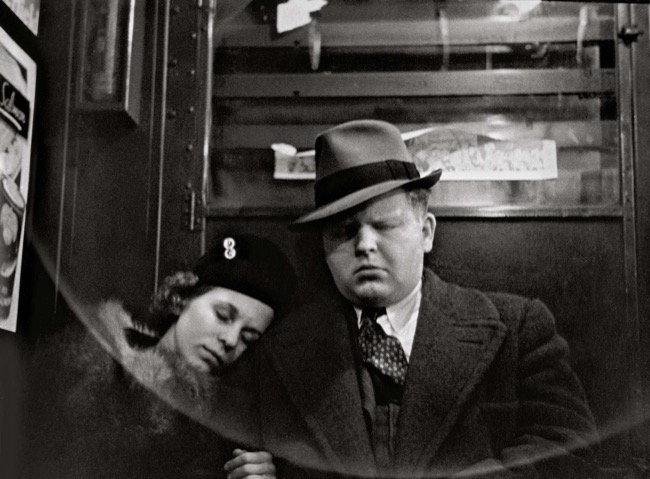


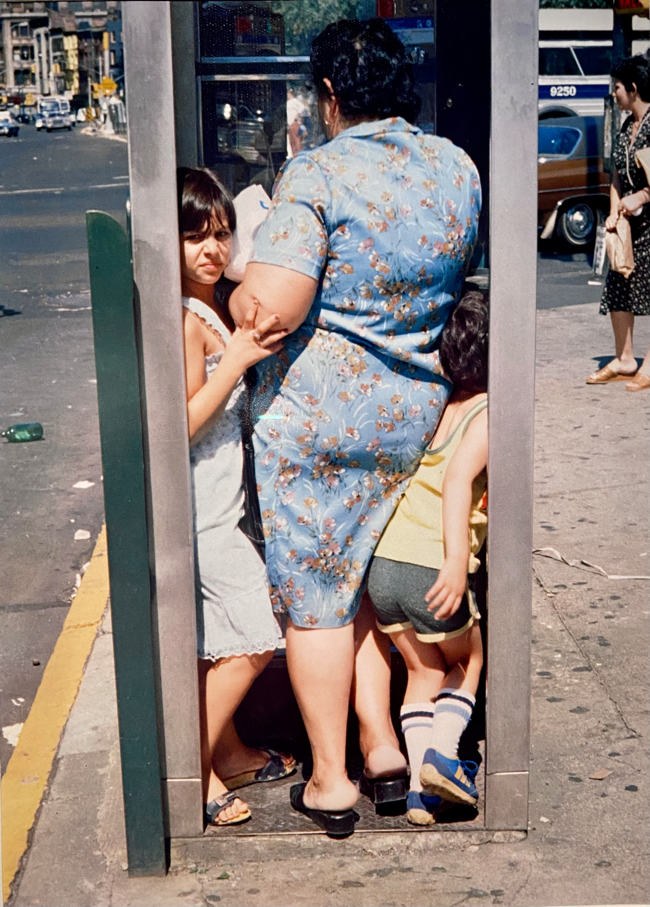
25 November 2021 – Coup de ❤️ for Emmanuelle Biadi
Coup de ♥️ for the pictures of Emmanuelle Biadi. Emmanuelle’s eyes are the first thing one notices when meeting her. Surrounded by her iconic red glasses, they sparkle and shine. She cannot be mistaken for someone else. Woman with a real presence, She is an expert, a guru in her very technical field, but she is much more than that. She is also an artist. Those eyes of hers scan for the ordinary beauty around her constantly and when spotted, she captures it on pixels. It can be a close-up of a flower, a landscape, an attitude, a pattern. She shares her work scarcely only with the people she trusts and considers. She is eclectic, always seeking the plus, the extra. Her sense of composition is pronounced and she organizes her photographs like paintings. I suspect she would like some more recognition around that aspect of her (otherwise) lovely personality. So it is with great pleasure that I share here some of her recent work.




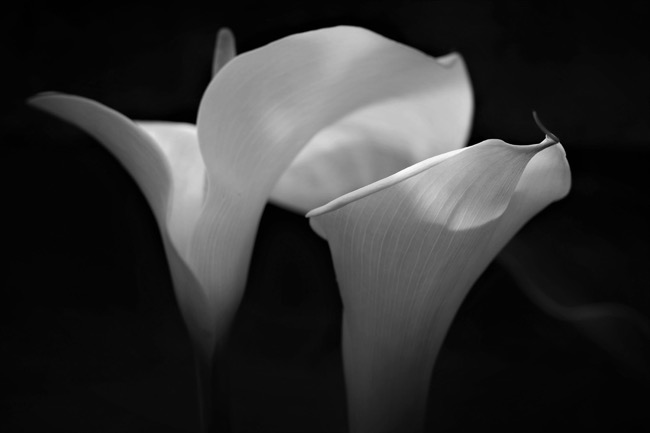
9 November 2021 – A moment at the MoMA
The Musée du Jeu de Paume, located in the prestigious Jeu de Paume, on Place de la Concorde opened its doors to the MoMA. More precisely, to the Thomas Walther collection, acquired in 2001 and 2017 by the MoMA. It is a large body of works covering teh beginnings of photography in 1900 to the 1940’s. More than 230 pictures, small and big, are displayed in a large exhibit covering the two levels of Jeu de Paume. I arrived at the opening and could stroll freely, with a few other visitors on this Tuesday morning, between the works of Berenice Abbott, André Kertész, George Hoyningen-Huene and many others, lesser known. The prints are old, often small, and give a sense of uniqueness. We go through the inventive first years of photography, lots of experiments, beautiful portraits of famous artistes, like Henri Cartier-Bresson in his early years, to Jean Cocteau, photo-shy to Paul Citroen and Piet Mondrian. Germany in the 1930’s is always fascinating as well, when one knows what happened later. The roofs of Paris, the streets of Berlin are virtually unchanged despite the years. August Sandler is also present, with a portrait of an Art dealer, far from the romantic view one may have.

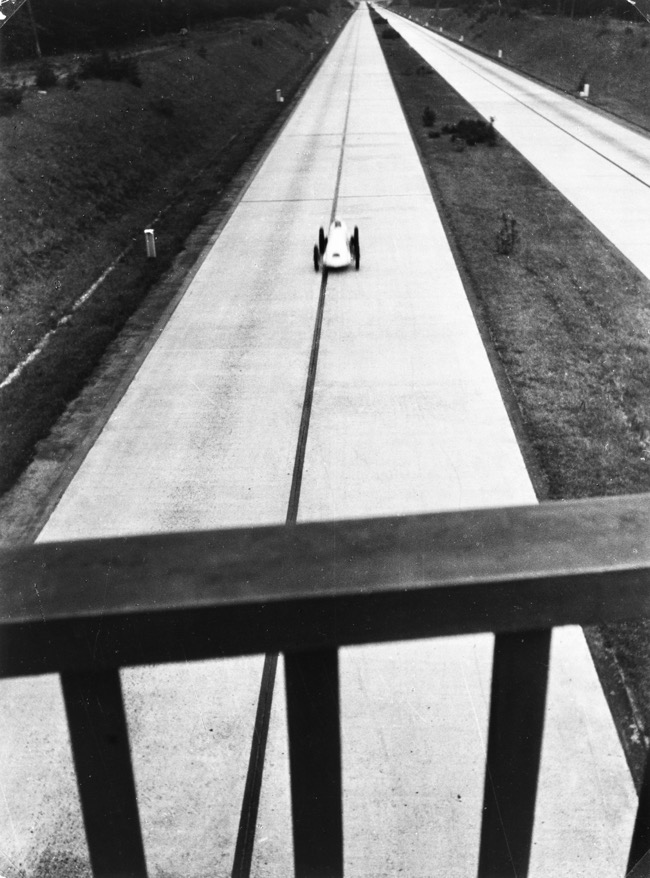


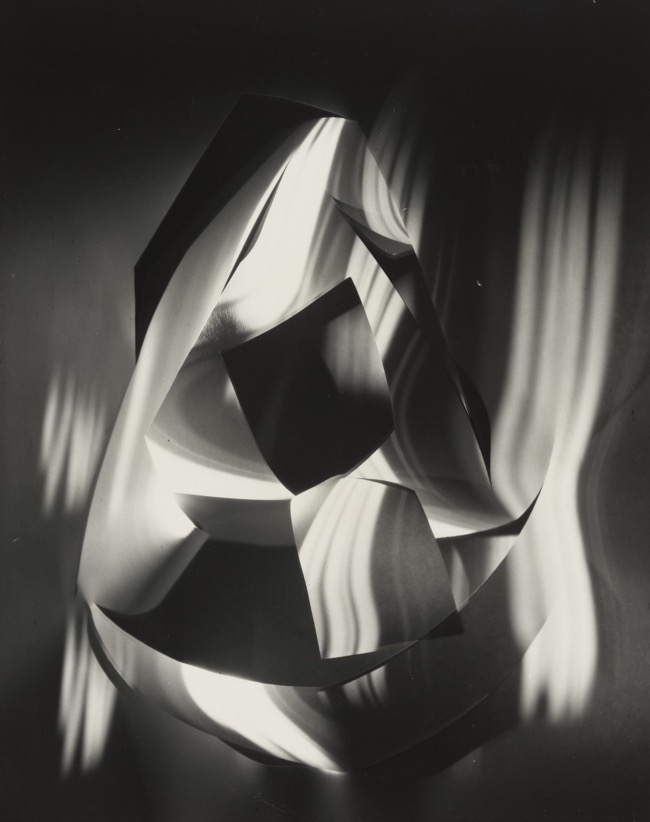








8 November 2021 – Christie’s a gogo
To finish this fruitful day, a small stop for a glass of champagne at the posh Christie’s gallery in Paris. We were not on the list of guests but made our way into the inner sanctum, shoulder to shoulder with the happy few, capable of purchasing 30,000€ to 80,000€ pictures for their loft in the 16eme arrondissement… or simply there because they knew someone who knew someone, and the champagne was free of charge. In any case, some very nice art work was for sale the next day, and exhibited publicly, before disappearing for ever in the collection of some private collector. I particularly enjoyed being confronted again with a large piece by Edward Burtynsky, already seen in Singapore, the girl with a shopping bag on her head by Hendrik Kerstens or the homage to Marc Riboud with “Mathilde on the Eiffel Tower” by Peter Lindbergh, alongside the original or “the Wild Ones” by the same Lindbergh.





8 November 2021 – The concierge is in the stairs
A delightful art opening at the delightful Artcurial auction house to see delightful pictures of a delightful man, present that evening: Johannes von Saurma is an old fashion man, kind and discreet, he went on the steps of Robert Doisneau to enter the private world of some of the Parisian concierges. After a few words, he was given the opportunity to photograph that endangered species in their own habitat. Small apartments, meager possessions, modest condition, the concierges have been present throughout the centuries to keep an eye on the tenants of the Parisian buildings. They are still alive in front of Johannes’s Hasselblad 6×6 chamber. Discreet, industrious, they kept our staircases clean, distributed the mail, gave advices. What is now left of them? The concierges are somewhere in the stairs, where they have always been.




8 November 2021 – Pinault Noir… and white
The Bourse de Commerce, in the heart of Paris, became recently a testament to the glory of François Pinault / a monument to the glory of modern Art (delete as applicable). The architect Tadao Ando was put in charge of transforming the historic building and I must say, the result is just splendid! Pinault’s passion for contemporary art has led to the assembly of a large collection of some young artists and the century-old building is the perfect repository of large paintings, pieces of art and photographic series. I particularly enjoyed the 2012 series of 18 portraits by Sherrie Levine “After August Sandler” and the 1974 series of Michel Journiac “24 hours of the life of an ordinary woman”, was totally indifferent of the Helms Amendment series and amused by the large colour photographs of Richard Prince, reproducing the too (in)famous advertising campaign of a major American cigarette company. What impressions remain after this visit? Does Pinault deserve the place he aspires to? Can money buy everything? Will he remain in history as a modern Medici? I do not know but at least, this temple to trade, epitomising the glory of France at the peak of its power did deserve to be be preserved in the most magnificent way, and only history will tell if Levine, Prince and Journiac get a place at the Walhalla of photography.



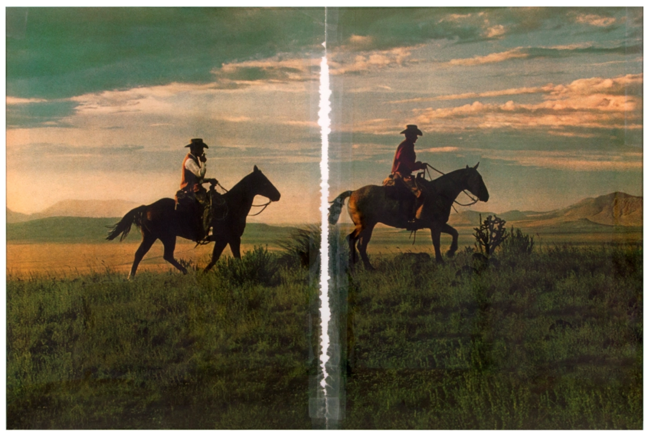
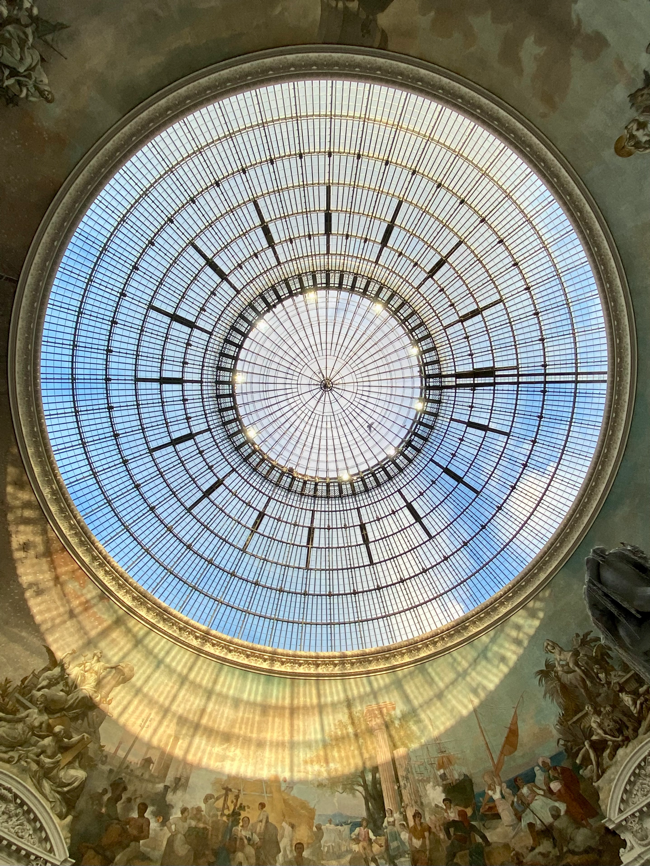
8 November 2021 – René Burri on the banks
As part of PhotoSaintGermain, a small-scale exhibition of René Burri was given on the banks of the Seine, underneath Musée d’Orsay at Solferino Harbour. I visited a René Burri exhibit in Rotterdam several years ago and was charmed by the discretion of this Swiss artist. Modest, almost invisible, Burri made some of the most famous photographs of the 20th century, like that of a defiant Che Guevara, a cigar between his teeth. He travelled around the world, from Switzerland, to Germany, Japan, Brazil, Cuba, the USA for Magnum and brought back some of the best photographs. He would certainly deserve a large retrospective in Paris or elsewhere to give him the spot he deserves in the Pantheon of the greatest. I particularly enjoyed his Flatiron building from an unusual angle or the pictures he took in a torn Berlin, just after the war. He also took one of the few portraits of Henri Cartier-Bresson in 1956…





7 November 2021 – Annie, an old friend with a “+”
While walking from Rive Gauche back to Rive Droite via la passerelle des arts, one passes the arches of the honourable Institut de France. There, as part of the PhotoSaintGermain festival, Annie Leibovitz, a long time former Parisian, shows 200 of her most iconic photographs and others, lesser known. No need to introduce Annie Leibovitz, an old friend full of talent, who photographed the most famous for Rolling Stones, like a naked John enlaced with Yoko on the floor of their bedroom, a highly pregnant semi-naked Demi Moore or Schwarzenneger on a horse. The “+” of this exhibit in the invisible presence of Annie herself. She came, saw and conquered. Spread over four large rooms, the photographs are presented in a typical Annie’s style: rough, raw, without tralala, without frame, bare on the walls. The scotch tapes are left behind on the walls to mark where the pictures should be placed. A previous exhibit, seen on Singapore, was also prepared by the master herself, in the same fashion. The content of the photograph is central and suffices itself, as Annie lets us know. I particularly enjoyed the graphic image of the ladders in a Kibbutz, the high contrast of the American soldiers with Mary, Queen of the Negritos, the “selfeet”, or the stunning image of Nixon leaving the White House and three guards trying to keep their dignity while assuring their duty. The exhibit is dense, and the various talents of Leibovitz are represented on the walls. How delightful to be treated and photographed by a colourful Andy Warhol, or to follow Patti Smith off the frame. Finally, listening to the private conversation between Willie Nelson and Louise Bourgeois. The lasting impression of this wealth of pictures: the one of Louise Bourgeois: a portrait of a beautiful old lady with at the centre of attention, an imaginary line between her eyes and her open hand – all is said.









7 November 2021 – Kivu’s Saint-Jacques
Photography is everywhere in the city. Action is frequent. La Ville de Paris, together with Fondation Carmignac, took an initiative to “preserve the forests of Central Africa”. The exhibit “Kivu’s Forest” by photographer Guerchom Ndebo is presented on the gates surrounding la tour Saint-Jacques, at this occasion. Images of desolation, pain, sufferings, poverty, war, contrasting with the peace of the place on this sunny Sunday morning, and the tower, symbol of a far away past long lost and yet still vividly present in Paris.




6 November 2021 – Celts in Paris
One can legitimately ask for what purpose the Senate exists. The higher chamber has a reputation of obscure work by well off and well fed older gentlemen discussing laws in comfortable arm chairs or around well served tables during endless lunches and dinners. The Luxembourg gardens were a wonderful place to be, this Saturday morning, while waiting for good friends and enjoying the November abundant sun and the numerous children cheering their sail boats navigating the basin. Gérard Larcher, #2 in the State hierarchy as President of the Senate is the master of the place. He introduced the currently shown exhibit surrounding the park “Terres Celtes“. From Brittany to Ireland and Scotland, French photographer Philippe Decressac brought back stunning pictures of rugged coasts, large skies, furious seas and enduring nature. A wonderful contrasts with the quiet arrangement of chairs and flower bushes of the gardens.



6 November 2021 – Roger-Viollet dusted off
The historical space of photography agency Roger-Viollet, located rue de Seine in Paris 6th arrondissement, has opened its doors to the public since December 2020, to show its huge collection of photographs (more than a million pieces) and sell them to a public, keen to novelty and ever more eager to acquire prints. The third exhibit since opening is grand by its title “L’orient en Grand” and the size of the photographs. I had never heard of 16cmx42cm glass plate negatives before: the operators of the studio created in 1864 by Moyse Léon and Isaac Georges Lévy strolled the Earth to bring back pictures of the planet and its people. The result is stunning of sharpness and beauty. 50 prints spread over the walls, in between the shelves stuffed with the historical green boxes that were carefully preserved, containing demo prints for the customers and evoking places and historical dates. One would love to spend some time pulling those boxes one by one and discovering the treasures they contain. “Saturday is not a good day for that”, told us the sympathetic and enthusiastic young employee present in the gallery and showing us around. Nonetheless, gallery Roger-Viollet is a new space that counts: wonders are awaiting to be reveaved or rediscovered, once pulled out of the green boxes… we will be back.




6 November 2021 – Viva Vivian
A lot has been said about who she was, how she was discovered, how she worked, how incredibly smart and such a wonderful businessman her discoverer,John Maloof, is, but one thing remains, Vivian Maier was a true artist, working hard, in the shadows of her anonymity, assembling an incredible body of work throughout her active years, from New York City, to Chicago, Paris and all the places she’s been with her 6×6 Rolleiflex. I saw her colour work in FOAM a bit more than a year ago as reported here. My good friend Thierry gave her the place she deserves in two of his marvellously carved chronicles here and here. This time, le Musée du Luxembourg gives her a space of choice in Paris. A walk through her evolution, from her large body of self-portraits, to her street photography, more graphic work, portraits of her contemporaries, children, films. In small rooms packed with mainly female visitors, we can admire her work in posh and large recent prints, hung vis a vis some original vintage prints and several contact sheets, giving us an impression of her ways of working. Discreet, often invisible, relatively frugal in her way of telling a story, she paid attention to details: a tie hanging straight here, an expression there, a shoe, a shadow. With a photographic writing style unique to her, Vivian Maier deserves a place in the sun, side by side the greatest street photographers of the past century.






5 November 2021 – an incredible place
I discovered the Azzedine Alaïa Foundation by chance, because a dear friend visited it recently as well and sent me this incredible vision of rows of fashion photos exhibited in an orderly, artistic way. Fashion is the word. Azzedine Alaïa was a couturier, designer of amazing black stylish dresses. He worked together with German photographer Peter Lindbergh and together, they created an aesthetics for beauty and style, around the colour black. Black and white photographs were a must for them. The result is presented in the foundation, rue de la Verrerie, in the heart of Le Marais, where Alaïa lived and worked: actual dresses and the models pictured by Lindbergh wearing those dresses echo each other throughout.

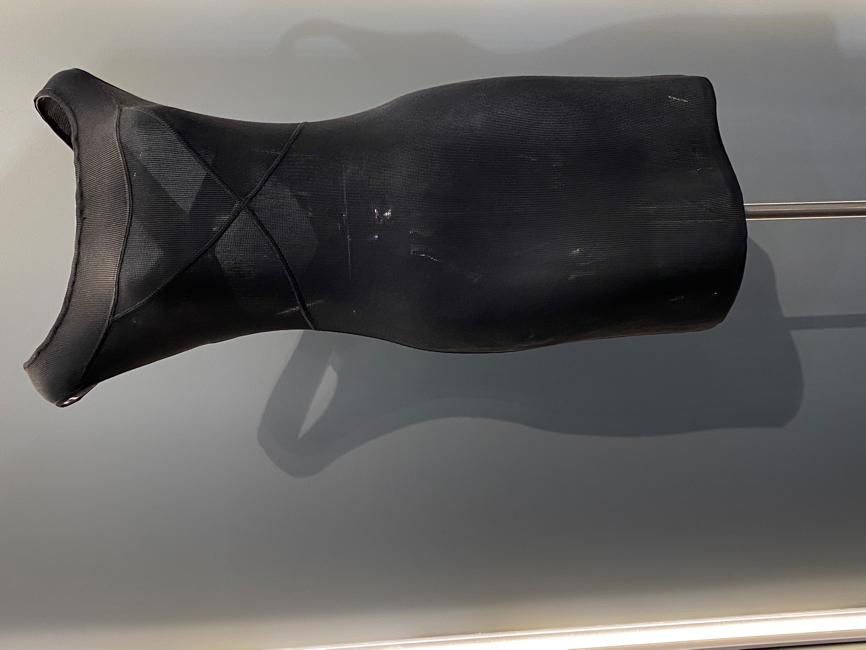



30 October 2021 – Affordable Beauty
When I saw the announcement for the Affordable Art Fair Amsterdam, I did not know what to think… What is affordable? What is art? anyways. The venue was the same as two years ago, before COVID. A large exhibition hall in the north of Amsterdam, full of galleries from all over Europe. “Affordable art” is thus a vague notion, resulting in a large offering of things, going from the ugly, to the unusual, to the okay, to the beautiful, to the sublime. I naturally focused on the photo offering and found several jewels in disguise, resulting in many coups de ❤️. I loved for instance the beautiful portrait of this old woman titled Namasté, or the shaman contacting his spirit animal by the same photographer, Marie van der Heijden. I also enjoyed Yvonne Michiels‘s fascinating dolls, The visits to beautiful empty spaces, left overs from past splendour, by two different artists, Matthias Haker and Daan Oude Elferink, following parallel paths, the monks in the snow by Jeremy Hunter and the outrageously dressed nun (only showing the decent part here) of Cécile Plaisance. There were many more photographs represented, for the pleasure of the eyes, making a stroll through the stands worth the journey.

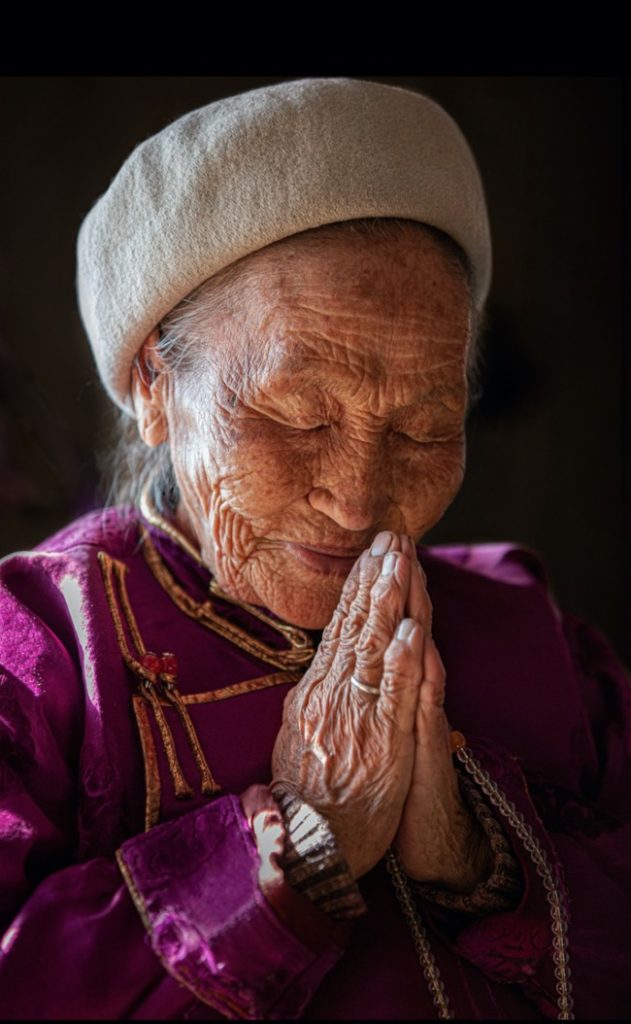



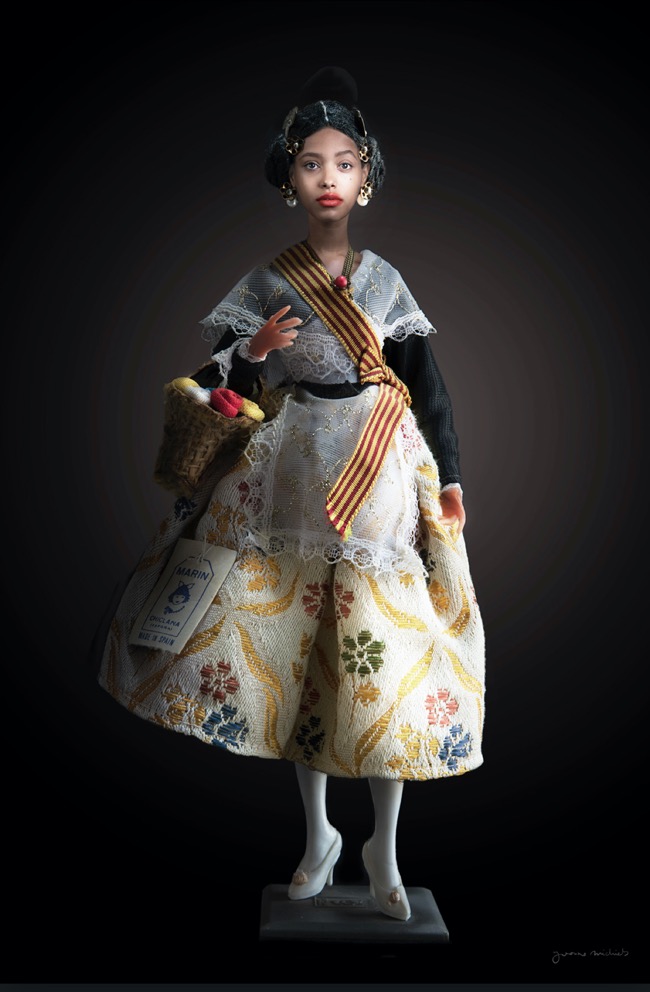

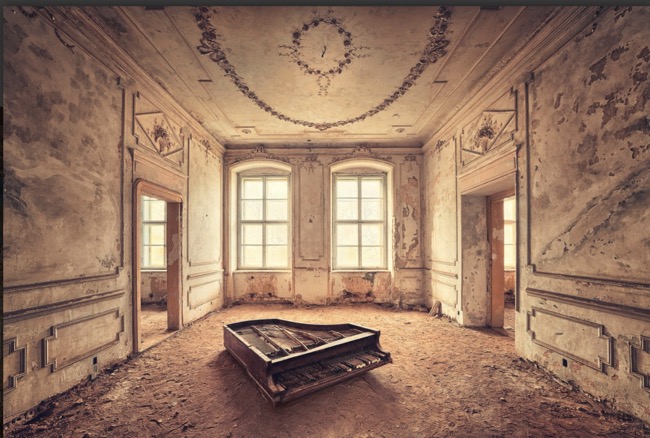

17 October 2021 – Chas gardée
Chas Gerretsen is one of these lesser known famous figures. Chas who? is the most likely question you may get when mentioning a visit to the first ever Chas Gerretsen retrospective exhibition of his work and life exhibited in the Nederlands Fotomuseum, in Rotterdam: “Chas in de hoofdrol” or “Chas in the main role” in English. And yet… he walked into Vietnam and fame during the Tet Offensive and became a freelance reporter. The year was 1968. Then later, he went into Cambodia from Paris, in 1970, the year Gilles Caron disappeared, as part of the too many “unofficial casualties among correspondents covering the war in Indochina since 1965”. He flew helicopters, visited the Karens, camped in front of Angkor Wat with the troops, all this before being even recognised as a correspondent and joining Gamma in 1972. He became however famous for his coverage of the September 1973 coup d’état in Chile. His famous photograph of General Pinochet was already mentioned here and has become an icon: A group of relaxed and cool, pleasant gentlemen, the embodiment of friendliness and joie de vivre. Pinochet did not like the photo, according to his own words, as it was “making him resemble too much a Latin American Dictator”… no comments needed. Chas was close to the action, on both sides, during those events, as one of the few present. Later on, and for 6 months in 1976, he became the set photographer in The Philippines of “Apocalypse Now”. An irony for a war photographer to take photographs of a fake war on film. and double irony when the title photography of the exhibit is Dennis Hopper as a war photographer taking a picture… of Chas Gerretsen, taking a picture of him… mirrors, mirrors…in any case, a deserved retrospective for yet another grand monsieur of war photography.






9 October 2021 – When all the stars align…
A beautiful old city: Leiden, a gorgeous Autumn sunny day, a quiet morning with fresh air, more than 10,000 daily steps and a 10 km walk with a wonderful company, a stop for a delicious capuccino, an open air photo festival along the way with talented local and international photographers: that’s what I call a perfect Saturday morning. The International Photo Festival Leiden is open since mid September until end October. No big venue and no huge crowds, no QR code required but instead small scale exhibits in the open, in the parks, along the spectacular singelpark surrounding the medieval part of Leiden. We discover the work of diverse talented [mainly female] artists like Eelkje Colmjon and her portraits of young Iranian women, Patricia Nauta who followed writer Marteen Biesheuvel in the intimacy of his home before his passing in 2020 and gives us a marvellously humane portrait of another artist, Katharina Pöhlmann and the still lives as “it is” around her room, Franky de Schampheleer and his funky universe of Flandronië, Daniëlle Cellie who makes the portrait of a vanishing town, we meet the hilarious supers of Craig Tuffin, or we follow Rachel Mounsey all the way to Australia, in the eyes of the storm, and many others. Broad choice of genres and formats, some likeable, some not, some triggering indifference, laughters, disgust or joy, but always worth stopping by and enjoying. When all the stars align and one recognises his/her good fortune, the world looks different.







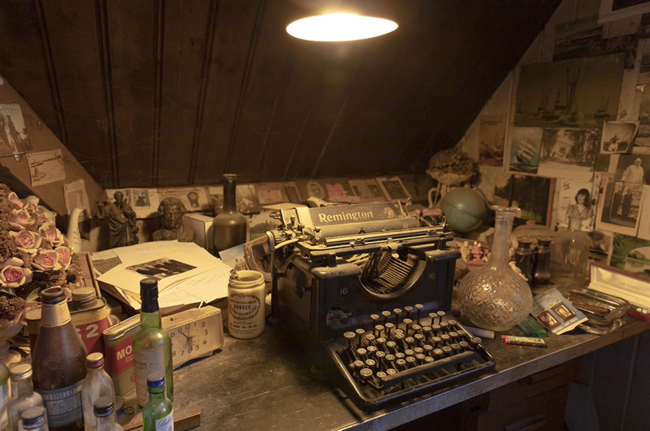

1 October 2021 – Two Ruben and a Xiaoxiao dreaming of China
Three photographers in their thirties dream of China in their own way. Two Dutch men and a Chinese woman. One lives in China, two in The Netherlands. The Chinese is here, the Dutch is there. The third Dutch goes back and forth. The Chinese speaks Dutch, the Dutch Chinese. All show the China of today, dream or reality? Xu, XiaoXiao was already the Coup de ❤️ of last years’s Breda festival [see my post of 19 September 2020] with her series “Watering my Horse by a Spring at the foot of the Long Wall”… a walk with her along the great wall of China, meeting the people that are born, live, work and die in its shadows. The two Dutchmen are two Ruben… Ruben Terlou has multiple talents: a medical doctor by profession, speaking fluent Mandarin, a master at interviewing people with an infinite compassion, a talented document maker and photographer. He has ravished us with his VPRO series “Langs de oevers van de Yangtze“, “Door het hart van China“, “Chinese Dromen” and more recently “De wereld van de Chinezen”. Ruben Lundgren is a photographer based in Beijing. All three show their China dreams in an exhibit at the beautiful old town hall of Hilversum turned into a museum. Small scale exhibit but wide reach. Three sensitivities echoing each other, a ravishment for the eyes and a marvellous view into a dreamed China.










26 Septembre 2021 – Bouvet at war
Thanks to a friend, I recently discovered the work of photojournalist Eric Bouvet and it became my coup de ❤️. Eric Bouvet worked for the French photo agency Gamma during the 1980s, and launched his freelance career in 1990. He won multiple awards throughout his long career and covered conflicts in Afghanistan, Iraq, Iran, Chechnya, Sudan, Somalia, the former Yugoslavia, Lebanon, Israel, Northern Ireland, Kurdistan, Surinam, Burundi, Libya and Ukraine. He recently published a 40 years anniversary magazine using crow-funding. The format is very unhandy (too big with slippery pages) but the pictures are marvellous and show how he looks at his contemporaries. Covering wars brings with it the sweat, the blood, the tears, the filth of it all. But despite that, Eric Bouvet remains human and he is able to capture the human suffering through the eyes of his models. Fantastic series of pictures. A few questions remain in my mind though: why does a photographer of his talent need crowd-funding to publish a small magazine gathering 40 years of his work? Where are the publishers of books? He would definitely deserve one and a big retrospective of his work. Any taker?

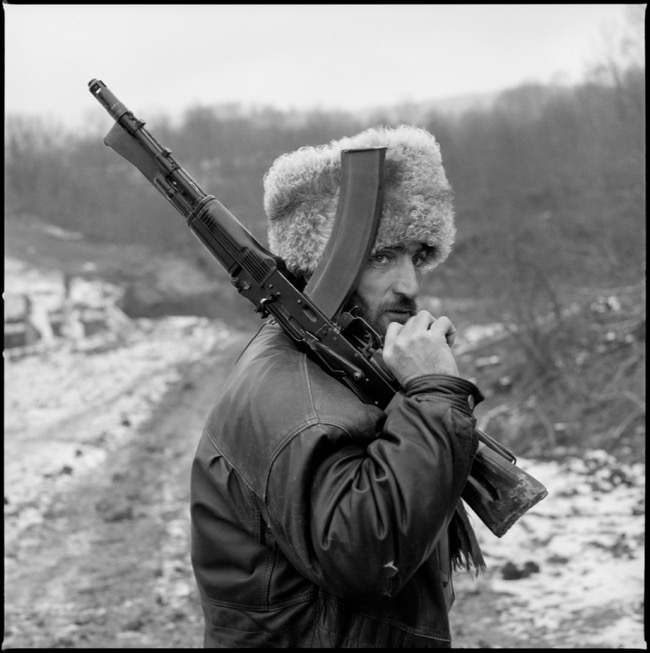


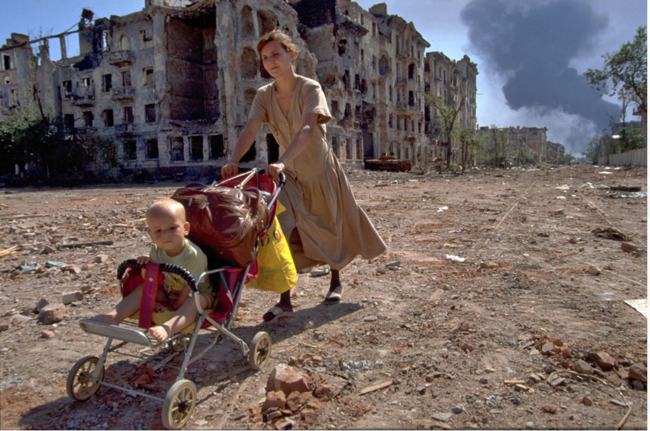
18 September 2021 – Happy scene seen at Unseen
Unseen 2021 was back this last weekend, after a dry period due to COVID and some financial difficulties. The new edition was still located at the iconic Westergasfabriek in Amsterdam, on a somewhat smaller scale but with a wealth of interesting galleries and a tremendous riches of artists. Above and beyond the usual selection of straight-in-your-face crude sexual content, bright highly saturated colourful living room pictures and empty architectural structures, the selection offered several young, mainly female, talented artists with a different vision. I was particularly touched by the works by Ilona Langbroek, Mouna Saboni, Sara Imloul, Lisa Sartorio and Chieko Shiraishi. Across borders, cultures and generations, those women show, in my humble opinion, a true talent and a unique approach to photography and story telling. Lisa Sartorio uses existing photographs and brings them to life – a life of destruction – with her work with paper, textures and structures, leading to a stunning effect of buildings silently exploding. Chieko Shiraishi brings to life the sophistication of Japan through her landscapes involving deers in winter in her Shikawatari series: pure and clean lines, subtle greys and blacks, tending towards abstraction and a Japanese perfection. Mouna Saboni and Ilona Langbroek, both seek their own identity, one through poetry and photography, using traditional middle-Eastern portraits and revisiting them with her own poetry, while the other shows intimate and nostalgic views of a past forever lost in the turmoil of a colonial past. Sara Imloul revisits the old technique of calotype to bring to life a deep black and white contrasted intimate universe. The men are also present in my own selection. For instance I noted the “Borderline” work of Paul D’Haese, created while hiking along the northern French coast, emphasising the edge between inhabited human-made landscape and nature. Talking about emptiness, I could not forget the “Past and Present” series shown by the Galerie Julian Sander. Julian’s great grand father, August Sander, was a tremendous German portraitist in the 1920’s, 1930’s and 1940’s. He left an incredible and remarkable body of work depicting his contemporaries in their every day life and environment, whether it is at home, at work, in formal settings, indoors or outdoors. Beyond that, and I could have stopped right there and be happy with this discovery, an American photographer, Michael Somoroff, took August Sander’s photographs and removed the people from the pictures, to show empty settings and landscapes, workplaces and living rooms. The series “Past and Present” in its entirety comprises 40 photographs of August Sander and their “empty” counterparts by Somoroff, to make an amazing ensemble where the past echoes the present and vice versa. A stunning presentation that will resonate long within me.




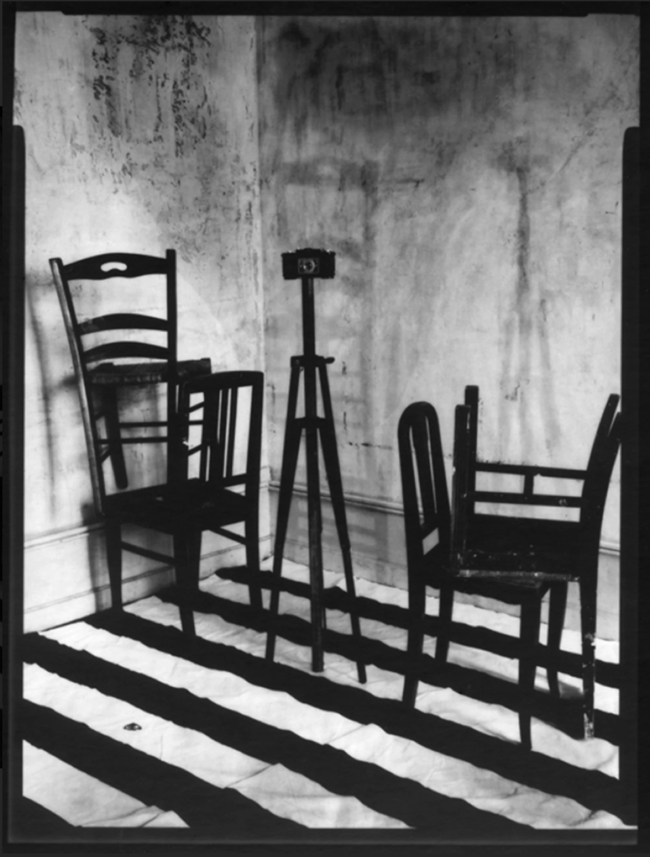

Paris – France

Köln – Germany

Köln – Germany

Paris – France
9 September 2021 – Tokyo top in Paris
Two giants of the Japanese photography meet in Paris, across times. Daido Moriyama ans Shomei Tomatsu conceived a joint (large) exhibit before Tomatsu’s death, to show their love of Tokyo, the city-world / world-city, as two faces of the same coin. The approach of both photographers is quite different, as can be experienced on two separate levels of the beautifully designed MEP building. The location is the same, like Shinjuku, but the visions of the two artists are quite different. In a nutshell, soft vs hard. Tomatsu’s photogaphs are soft in their approach, their rendition. It shows close up of people embracing, landscapes or people engulfed in artistic vagueness. Moriyama is in your face, with strong – highly contrasted grainy blacks, movements, furor, sex. Which Tokyo do you prefer?







8 September 2021 – Paris revisited
Revoir Paris with Henri Cartier Bresson is always an enchantment. The musée Carnavalet, a prestigious location in the heart of Paris, gives him the space and surroundings to shine. HCB’s images are generally well known and often admired for what they are: chefs d’oeuvre of composition, decisive moments depicting a situation, an encounter, instants of humanity. This time, the grand exhibit describes the encounter of HCB with Paris or Paris with HCB, from his origins as photographer in the 1930’s to his latest works as a drawer. Paris in the 40’s, 50’s, 60’s. A Paris that was and is no longer. Despite the photographs seen so many times before in previous exhibits and in books, the curator was able to also present a tremendous body of works less known and seen before. I was touched by those photographs as well (below) and remarks, such as this comment by HCB himself when meeting Irène and Frédéric Jolliot-Curie “I rang the bell, the door opened, I saw this [the picture he took of them], I shot the image and said hello afterwards; it was not very polite”, or this dedication by Jean Cocteau on one of HCB’s books “you know very well that your book is a masterpiece, but I am happy to tell you so”… precious.






7 September 2021 – Salgado’s adagio for Amazonia
Diving into the Amazônia of Sebastião Salgado and Jean-Michel Jarre at the Philarmonie de Paris today. As always with Salgado, it is with an overwhelming wealth (200) of huge incredible, almost unreal, black and white photographs that Salgado welcomes us into “his” Amazônia. This time, he has teamed up with Jean-Michel Jarre who delivers music on par with the majestic landscapes. Breathtaking images taken from impossible positions, heavenly skies, massive clouds, infinite meanders of waters crisscrossing the horizon, flying rivers at a continental scale. It is gorgeous, it is fantastic, it is incredible. But, what makes this exhibit uniquely touching is not the trees, the mountains, the river or even the impeccable, almost too perfect, technique (with no doubts, unique means) but rather the people, the inhabitants of the forest, yet another endangered species. We meet Adriele da Silva André Macuxi, Typaramatxia Awá, Bela Yawanawá, Sína, the family of Gabriel and many others, and with Salgado,while they stare back at us, we all wonder what the future will bring to these people.







6 September 2021 – Marc Riboud – Possible Stories
We were fortunate enough to catch the very last day of a tremendous exhibition of the work of Marc Riboud in the no less fantastic musée Guimet. Riboud gave his oeuvre to the museum and as an homage, the museum organised a grand retrospective of his work. And grand it is! With an impossible title “Histoires Possibles”, we go back to the early 50’s in Lyon where Marc was born, to Paris and his painter of the Eiffel tower, before starting with him his grand tour of Asia, through Afghanistan, India, China and Japan. A delight for the eyes. a marvellous display of his prints with an impeccable lighting. Marc Riboud’s most well known photographs are on display of course but i chose but a few of some that are possibly less known but significant of his eye: humour with a profound respect for the people he met and a humanistic view of his contemporaries.




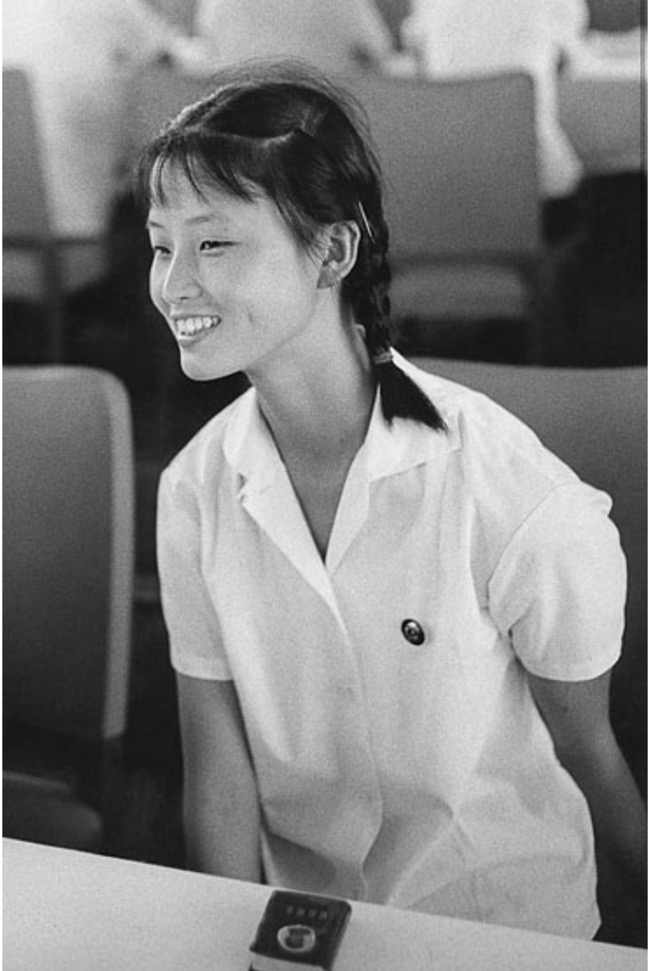
1 September 2021 – Isabel Muñoz, 1001 Spanish in Japan in France
Staying in Provence was a good occasion to discover the newly opened Centre of Photography of Mougins. A marvellous building in a remarkable town on the heights of Cannes. The first exhibition displayed here on the two levels of the building is “1001” by Isabel Muñoz. Isabel travelled many times to Japan and brought back haunted photographs. Portraits of nude Yakuza, Butoh dancers and scenes of shibari. A very disturbing and unsettling but pleasant trip through the Japan you will never experience.

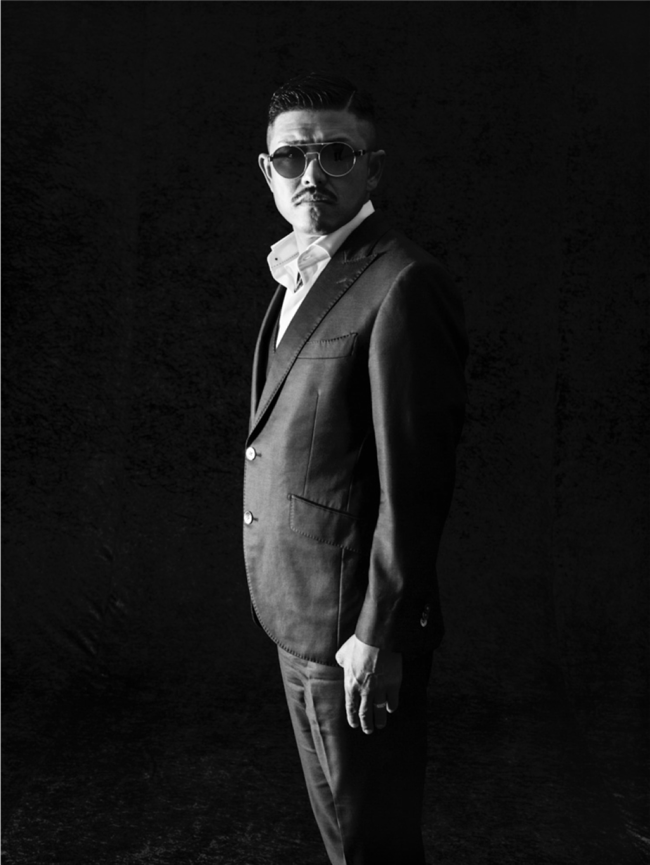

26 August 2021 – Those who repair…
Valérie Couteron spent time at the Protéor plant in Seurre, near Dijon, France to take portraits of the employees. Ordinary men and women engaged in an extraordinary work: designing protheses for handicapped people. Couteron seized their profound humanity, mainly focusing on the eyes of her subjects. The result of her work is exposed in a XIIth Century romanesque church in the heart of Dijon, the Saint-Philibert church.

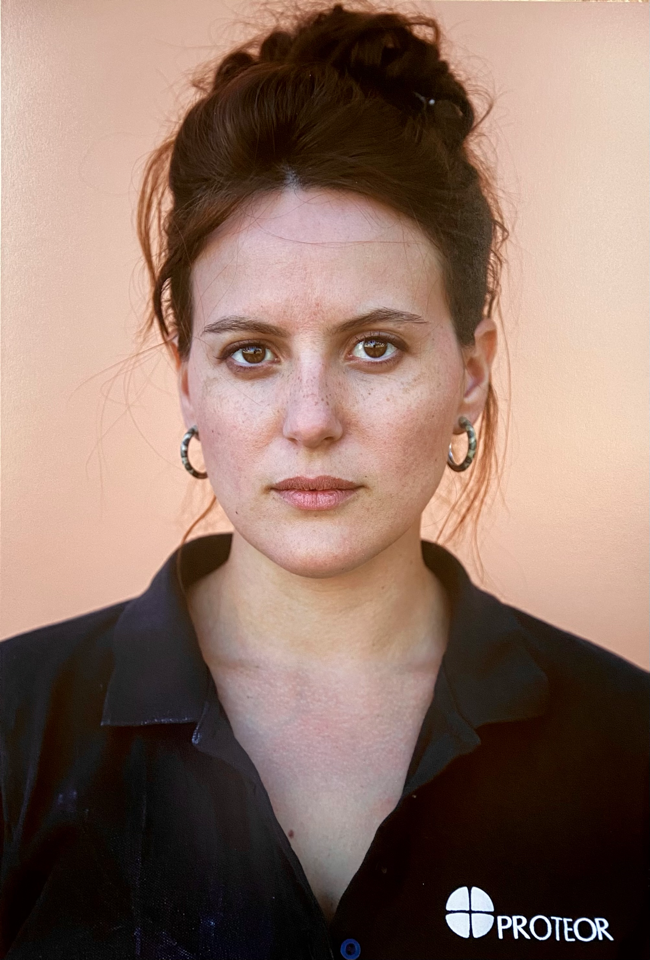




24 August 2021 – La reine Leroy
Another coup de ❤️ for the poignant photographs of Catherine Leroy and respect for the woman. She was a war photo reporter with an incredible story, forgotten for too long and far less recognised for her tremendous value than her male counterparts. Henri Huet, Larry Burrows, Don McCullin, Tim Page, Horst Faas or Gilles Caron have been long recognised internationally. Catherine has been somehow forgotten. Le Monde just wrote a long paper on her. A dotation Catherine Leroy is rehabilitating her work and life. The next step would be a book presenting and praising her work. “Une sacrée bonne femme”, as we say respectfully in French. She deserves the title of queen of photo journalism.



22 August 2021 – When two masters meet
Photography is all about how you look at things. One subject, two different pairs of eyes and you end up with very different pictures. Both Henri Cartier-Bresson and Fred Stein strolled around cities, whether it was Paris or New York, with their eyes wide open and a camera, the same for that matter… a Leica. Henri Cartier-Bresson invented the notion of “moment décisif”. Fred Stein did not, but eventually had a similar approach. Across times and space, those two masters met without possibly knowing of each other. I tried to illustrate my “theory” with some examples among a rich iconography for both artists.
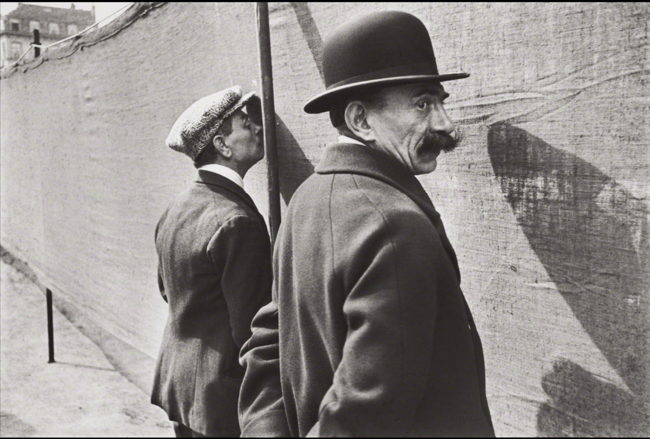

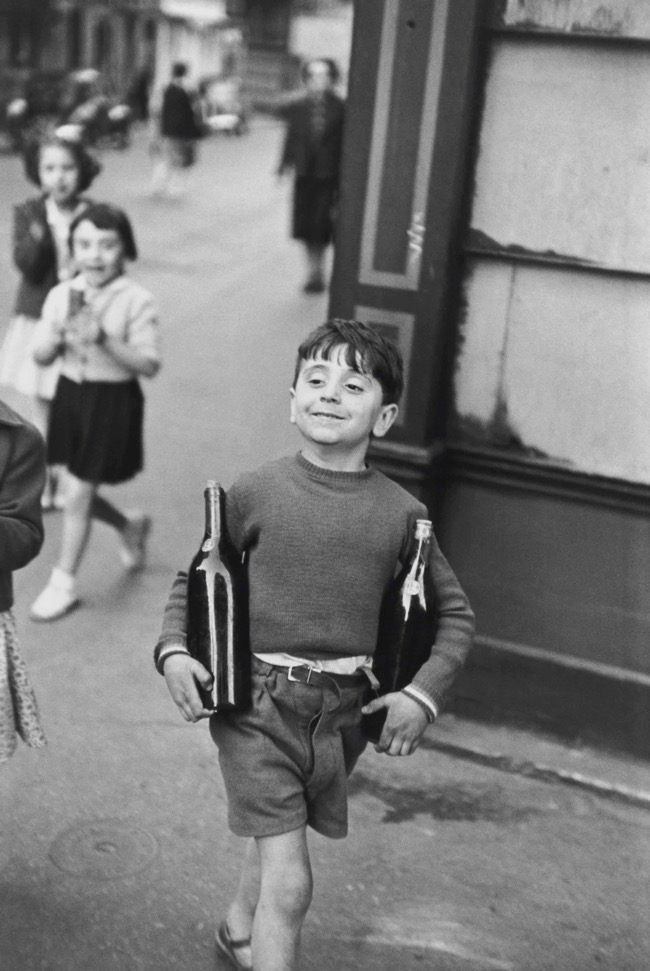
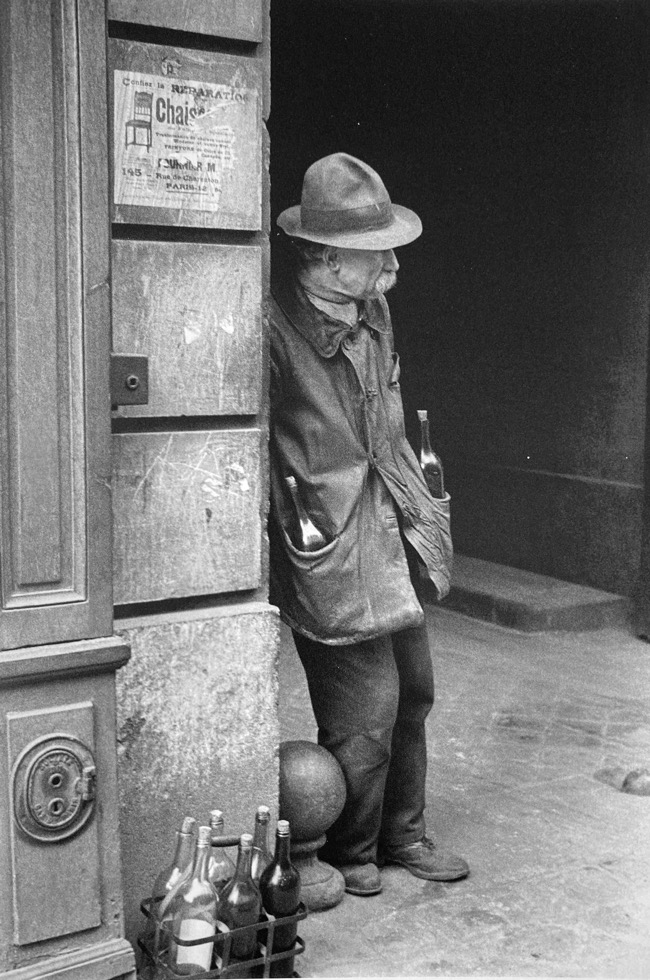


14 August 2021 Fred Stein: No stone left unturned
Another late and wonderful discovery for me at the Joods historisch museum of Amsterdam: the photos of Fred Stein. From Dresden to Paris and then New York, Fred Stein enchants us with his account of his time, mainly through the 1930’s and 1940’s. Wandering through the city, capturing moments and people in their daily lives. He then focused on making portraits of his contemporaries. A wonderful gallery of known and less known figures, mainly in the US and in Germany. The magnificent exhibit in Amsterdam is with freshly reprinted photogrpahs and it gives us a vibrant and broad overview of his work, forgotten for too long a time. I am not sure Fred Stein ever met Henri Cartier-Bresson but many of his pictures echoe those of the master. Definitely worth a visit!





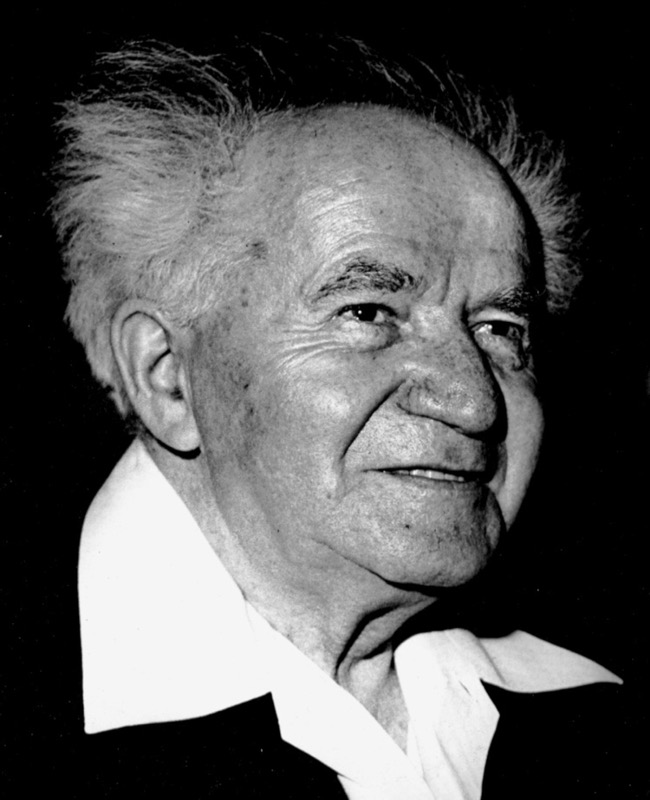
25 July 2021 – Posthuma posthumous
The giant of Dutch photography Eddy Posthuma de Boer passed away today, at age 90. He was a photographer with love for the people he was portraying. We were enchanted by his work when we first discovered it last year. I had the chance to see a large exhibit at Fotomuseum The Hague and reported it here. His pictures, full of a humanism since then long gone in the streets from our cities, will survive him for ever.
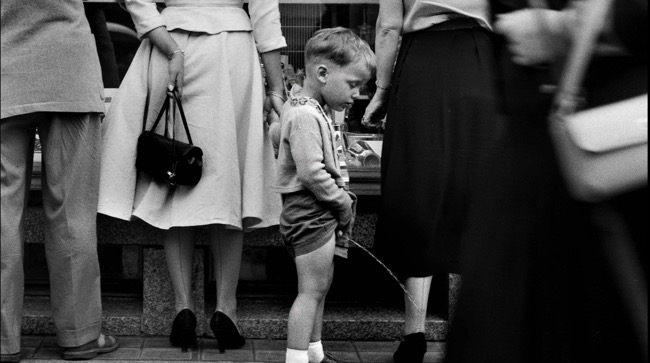


17 July 2021 – a low key FFN2021
The yearly visit to the FotoFestival Naarden edition 2021 was a disappointment. At least, the offering in the vesting Naarden was just so-so. I don’t know what it was… a lower scale display, some local photographers, the topics, the artists… A few jewels were displayed in the gardens of the Comenius museum, like the works by Frank Rentink and Wim Banning. After a couple of hours of strolling through the beautiful location, I thought this was it for this time… But away from the vesting, there was a real exhibit in a former garden center, transformed for the occasion, before complete demolition, into a gallery. I was particularly attracted to the series “Fica Suave” from Sabine van Wechem. Sabine followed a young girl, Thay, in her daily life in the favela Vila Cruzeiro in Rio de Janeiro.I also enjoyed the haunting portraits of Maan Limburg, especially in the dimmed light of the location. Jorge Mañes Rubio, Cynthia van Elk and Milene van Arendonk also gave some remarkable pieces of work, in different styles and locations. These young artists made my day.








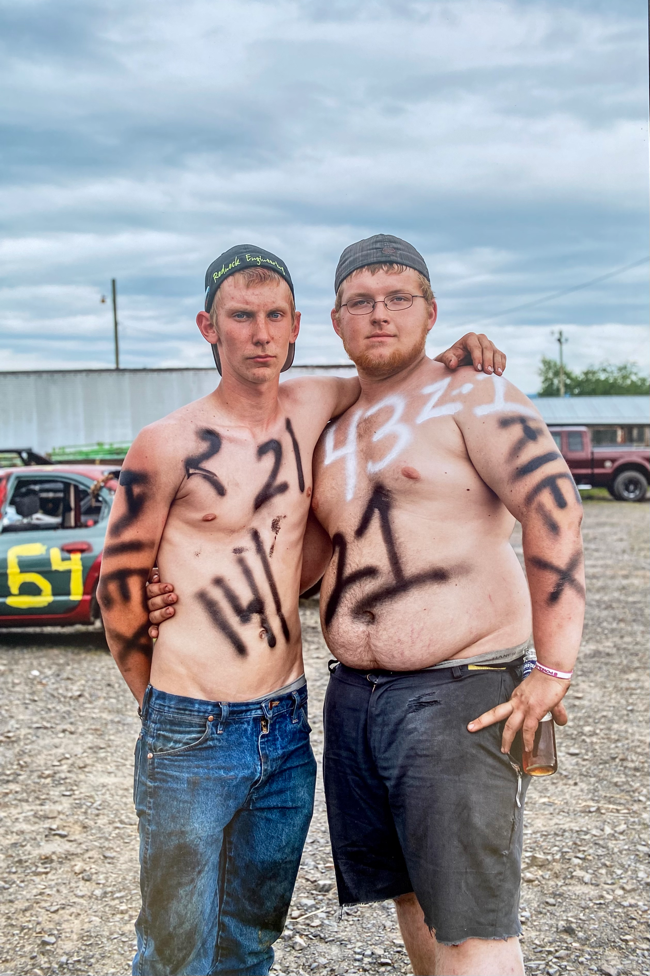
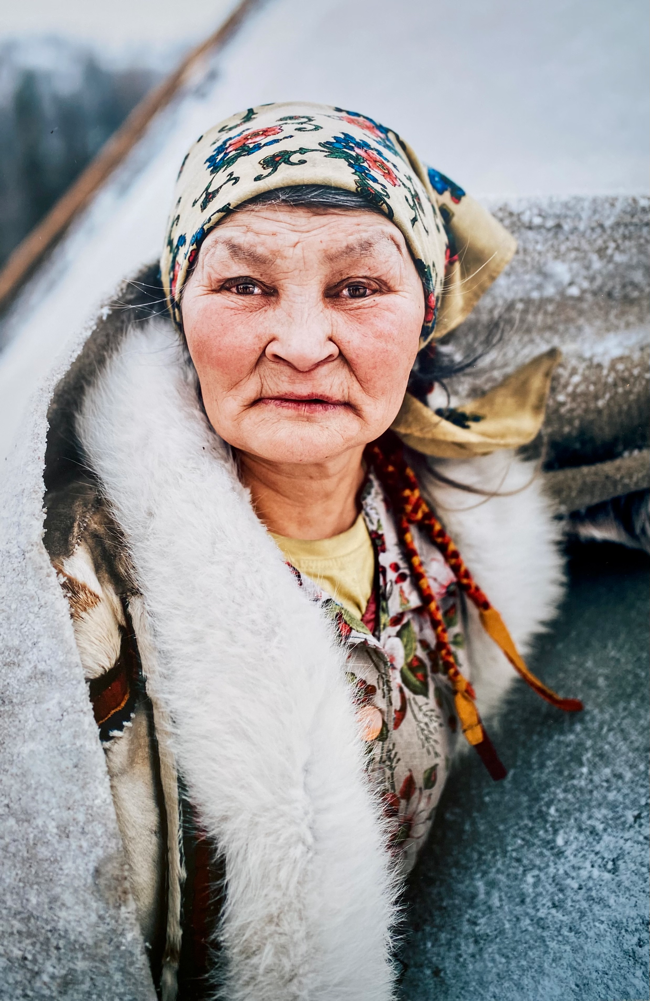

4 July 2021 – WorldPress Photo 2021
Sir Winston Churchill had nothing to offer to the British people but “blood, toil, tears and sweat” in a famous speech in 1940. Thats’s about what you get at each new edition of the WorldPress Photo festival in Amsterdam. It seems mankind is destined to suffer, to bleed, to cry and to sweat, over and over again. This suffering is also what gives the best pictures. The 2021 edition is no different, spanning from the absurd short war for Nagorno-Karabakh, to the massive ammonium nitrate explosion in Beirut, to the demonstrations for freedom in Peru, to nature playing its own part in The Philippines. And if people live in peace, they just accumulate absurd numbers of firearms for an hypothetical protection against bad guys. There will be enough suffering to renew this yearly event for many years to come. We cannot complain as the best photojournalists will be there to give us touching, moving pictures of the human suffering.
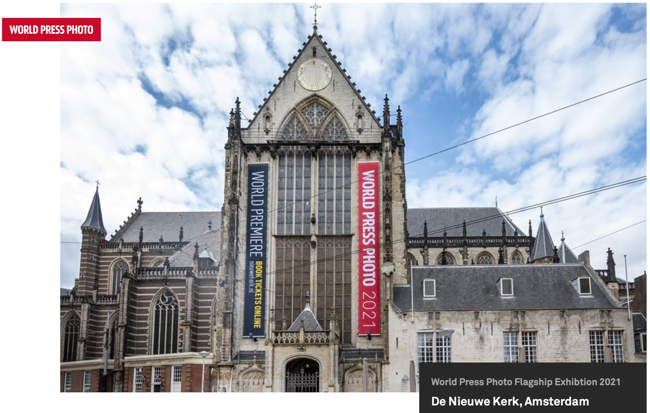


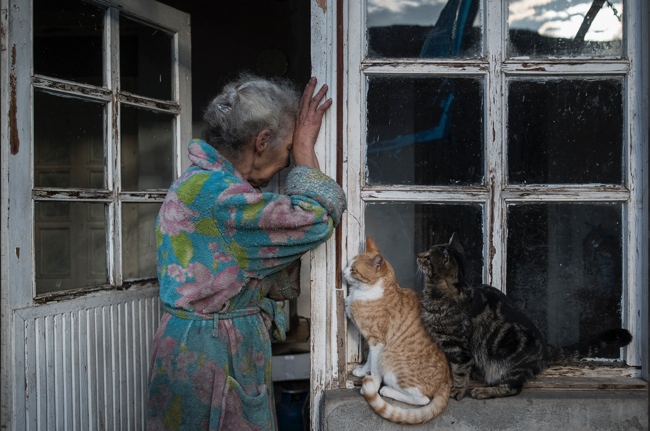








13 June 2021 – Coup de ❤️ for Lola Álvarez Bravo
I discovered a few photographs made by Lola Álvarez Bravo, during the exhibit around Frida Kahlo and Diego Rivera. A lifelong friend of Frida Kahlo, she was taught photography by her husband Manuel Álvarez Bravo, continued as his assistant, but soon enough became recognized as a photojournalist and independent artist. Her photo archive is located at the Center of Creative Photography in Tucson, Arizona, USA. I particularly enjoyed her “burial in Yalalag” that echoed for me the “Srnigar, Kashmir” picture of Henri Cartier-Bresson.


12 June 2021 – Love is in the air
After several months of closure and a delayed start, the Cobra museum in Amstelveen has finally opened its doors to a large exhibit around Frida Kahlo and Diego Rivera. “A love revolution” covers a wealth of Mexican masterpieces from the Jacques and Natasha Gelman collection. Frida Kahlo and Diego Rivera are totally unforgettable but another couple is also represented: Manuel and Lola Álvarez Bravo, photographers of the Mexican identity. So with the Gelman, the Rivera/Kahlo and the Álvarez Bravo, a family affair. Frida was admired and photographed during her tumultuous relatively short life. Some of these were displayed to bring some context to the paintings exhibited. Photos by Gisèle Freud, Lucienne Bloch, Manuel and Lola among others.


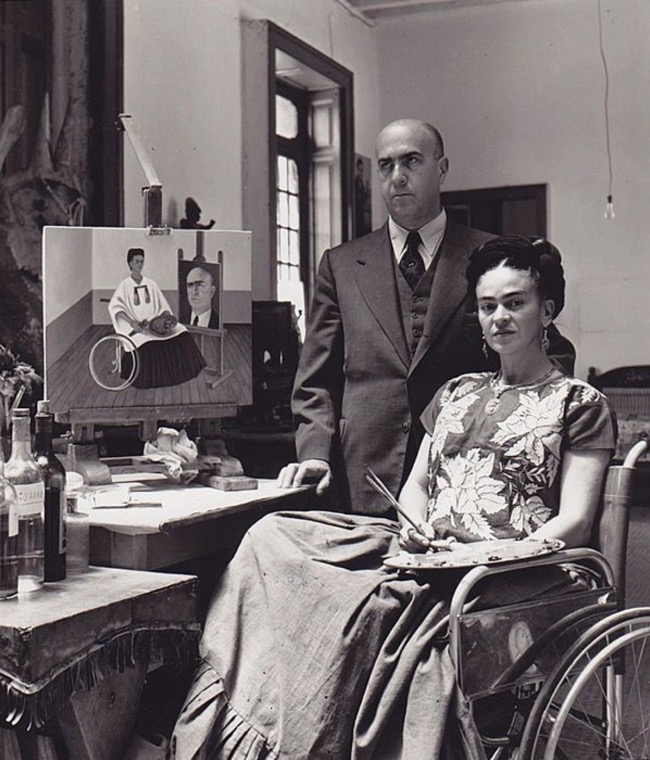



12 June 2021 – Ellen Thorbecke’s China
The Nederlands Fotomuseum reopened with the great promise of the honour gallery of the Dutch photography with its “99 iconic photos”, gratified by the presence of the king, himself, opening it. But at the same time, almost unnoticed in the basement, another exhibit also started on June 9th: that of Ellen Thorbecke’s China. And that is a real delight for the eyes and the true discovery of the day, combined with a coup de ❤️. Ellen Thorbecke, a German by birth, was a true 20th century woman. With a classical education in languages and piano, she further studied economy and worked as a freelance journalist. After meeting her second husband Willem J.R. Thorbecke in 1930 while working at the Dutch embassy in Berlin, she started photography with a Rolleiflex. She followed her husband to Beijing in 1931, not just as an expat wife, but with a journalist contract to report in writing and images on life in China. And what a photographer and a story teller! Ellen Thorbecke is far less known and recognized than Henri Cartier-Bresson but her work on China is, certainly for me, of the same quality, with a rare talent and as additional twist, a closer, more feminine approach of her subjects, as shown for instance in her portraits of Chinese figures. The large exhibit displayed in Rotterdam mixes original prints, extracts from her delightful books and beautiful new prints, as the museum is also the curator of her large fund of 6×6 negatives. Mainly focusing on China, Ellen also spent some time in Hong Kong – see her hilarious picture of the diverse Hong Kong police – and traveled back via Paris where she spent some time as well in 1936. A book was issued at the occasion of this marvelous exhibit, which found in the meantime its way to my private library…



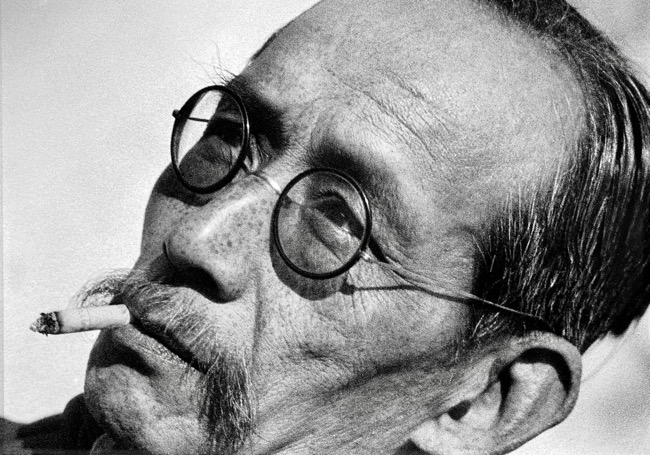




11 June 2021 – At last!
After seven long months without museums and exhibitions, the curse has finally ended and all museums have reopened, with some drastic measures to prevent the bugs from jumping from one visitor to another. To break this cultural scarcity, an early visit to the Nederlands Fotomuseum in Rotterdam was a must, especially since the king opened a new setup and exhibit a short while ago, the same week. The fotomuseum is expanding, which is a good thing, doubling his surface within the same premise. The permanent space boasts a “gallery of honour of the Dutch photography”, showing 99 photographs spanning over the end of the 19th to the early 21st centuries. The 99 photographs were carefully selected by a panel of “experts” for their “social and artistic impact, and are meaningful for photography in The Netherlands”. What to think about it? First of all, such a selection is by definition completely subjective. Some of the early photographs are clearly presented first and foremost because of their historical meaning, like a tiny dark portrait of Charlotte Asser, taken in 1842, or this couple from Paramaribo, Suriname in 1846, a then Dutch colony in the new world. Some are there for their scientific significance, like a photography of the moon dated 1862 or a microscopic shot of a plant stem dated 1873. Some for their social resonance, like these photographs of the Dolle Minas demonstrating for birth control and abortion rights in 1970, or the South Moluccans, photographed in colours in Tiel in 1970 by no less than Ed van der Elsken. Some are there because of the renown of the photographer (what makes Erwin Olaf “one of the greatest photographers of the century”?, who decided that? His bankable value on the market?), some because they are simply a reflection of the period, like Snoop Dogg from 2014. But for sure, a lot of them are there NOT for their artistic content. I could make my own gallery of honour of Dutch photography. It would be certainly centered around Ed van der Elsken (two photos here), Cas Oorthuys (two photos) and Koen Wessing (one photograph) and a few others. Beyond the somewhat pompous title of this gallery, this visit made however for a pleasant promenade throughout the century, with some unexpected jewels discovered, lots of rejections and a few coups de coeur. I deliver herewith some of the photos that touched me more than the others. Why those? The portrait of the hungry lady is haunting, her eyes empty, focusing on feeding herself with a meager piece of bread. The suffering is present. Pinochet, for his irresistible mugshot, the mother with children, yet again a moment of dispair captured so elegantly by the photographer. The hewer in a coal mine and Kennedy in a ball, for their similar expressions of satisfaction, and yet, such world-apart from each other and the construction of the dam, for its echoing of the painter of the Eiffel Tower by Marc Riboud… my own gallery of honour.




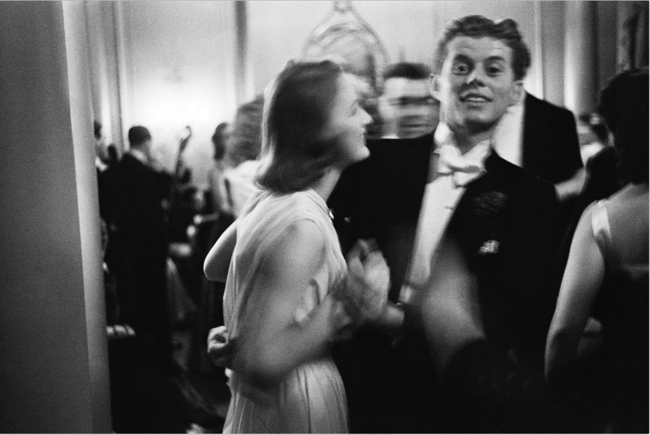
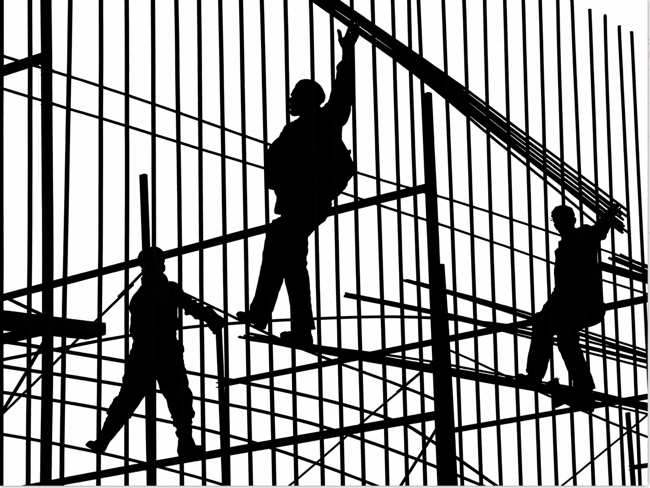

14 April 2021 – Jenny de Vasson
A friend of mine, Hugues, made me aware of a passed exhibit I missed because of COVID. It is now a virtual exhibit on the site of the bibliothèque numérique patrimoniale de la Ville de Versailles, La Sirène. Jenny de Vasson was a rich young woman living in the XIXth century, near Versailles. She was one of the first street photographers, a far predecessor of Robert Doisneau. She did that for fun mostly and left behind a wealth of photographs of her times, the people she met ad the places she visited. This is a wonderful walk through a distance time and space and a new window opened into the past.
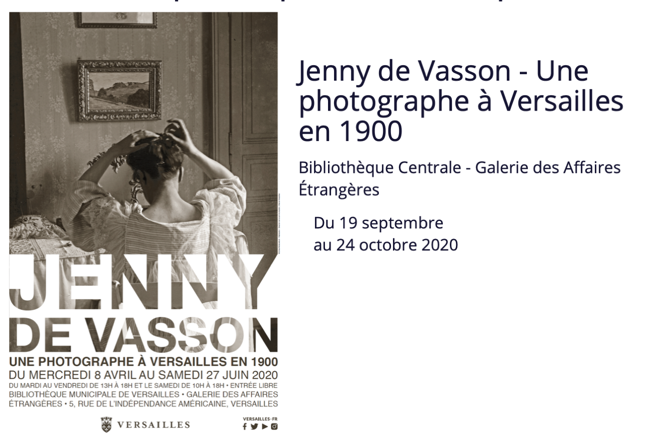




9 January 2021 – Lockdown by night
What to do when you are bored and in lockdown? When you don’t have any new perspectives of discovering new horizons, new people and exotic landscapes and situations? Well… you put your coat on and get out to photography the beauty of your immediate surroundings day after day, preferably during the blue hour, at dusk, when no one is around. Carla Matthee, born in South Africa but living in Leiden since 2004, has created a beautiful series of intimate portraits of Leiden that can be visited on her website.



13 December 2020 – Ulay was here and so were we…
I took the opportunity of (still) open musea to visit the Stedelijk Museum in Amsterdam before it shuts down again for 5 weeks… Among a wealth of modern and contemporary art of the highest quality, a few photographs of their large collection are exhibited, among which four pictures by Cor Jaring, Who was very present in the Amsterdam of the 60’s. His photographs of John and Onno remained very famous to this day. At the same occasion, I browsed through a special exhibit of the recently passed Ulay. I cannot say I was impressed. Ulay was certainly an artist of his own but he existed for me though his relationship with Marina Abramović, present throughout as well.





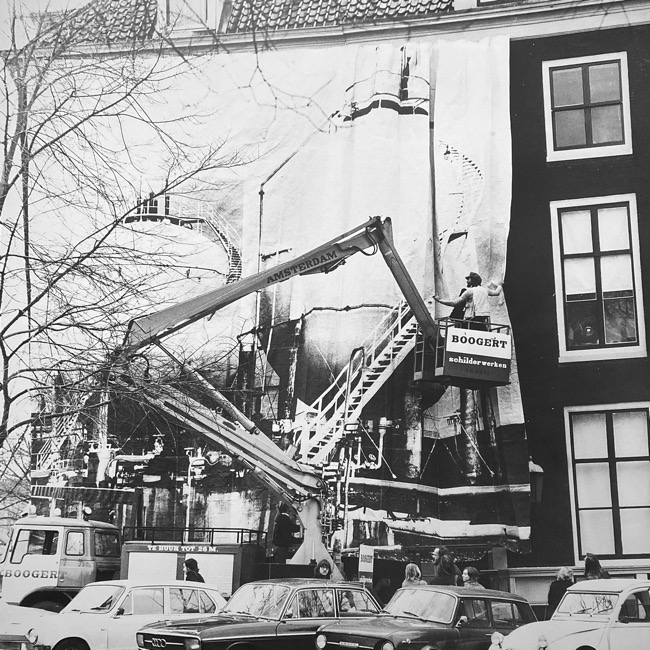

9 December 2020 – Coup de ❤️ for Didier Bizet
I discovered the photos of Didier Bizet by chance, while browsing the emails I get from “L’oeil de la photographie”. I particularly fell in love with his “the big Lie” series of photographs of North Korea. As he puts it, it is “a trip to another world”. But Didier Bizet went further than the typical lines of obedient workers and students, the empty squares and the monumental statues of the Kim dynasty. A small, almost imperceptible, twist if you don’t pay attention and his vision of North Korea reveals the deadly absurdity of this regime. I let you discover it in the few extracts below and strongly invite you to explore his work further. Enjoy the massive pingpong player, the perfect student with a bubble gum, the AC/DC piano lesson and these two employees “steeling” the hammer…


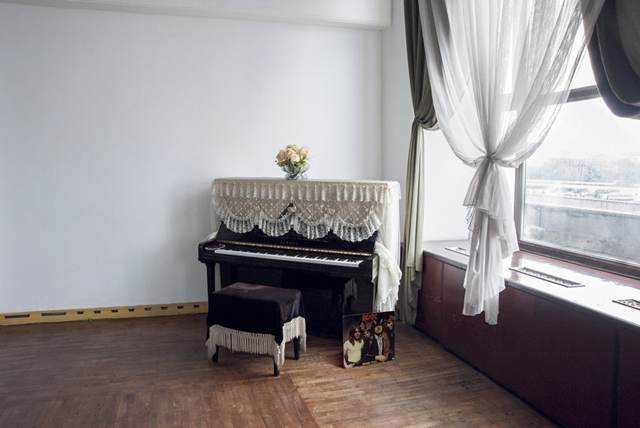

5 December 2020 – A Crazy World for Sure
Ed van der Elsken is back, at the Rijksmuseum this time. I always wondered how he “treated” Japan during his stays there in 1959-1960 and then in the second half of the 1980’s before his death in 1990. I was curious to see his “blessed eyes” fall upon this culture, so strange for us, so difficult to apprehend and to understand. His book about Japan “de ontdekking van Japan” remains almost impossible to get, so getting an insight on his vision of Japan, for a passionate lover of Japan like me, was crucial. Van der Elsken took the time, in Japan, to photograph not only the streets, the youth but also the a-typical Japanese: the yakuza, the sumos and the geishas. The result is stunning and triggers this deep desire to go back there very soon. The Rijksmuseum put together a large exhibition of his work, titled “a crazy world”, not only to show his Japanese pictures but mainly to get a deeper insight into the way he worked: multiple reframing of the same picture, to get the perfect balance for a publication or an exhibition. But what remains remarkable of Van der Elsken’s work, and for that matter for all the artists of that time, is to be seen on the several contact sheets exhibited: not many shots of the same subject, one, two, maybe three. We are far from the hundreds of shots one can take with a digital camera. One, two, three shots and the magic happens. Ed van der Elsken hd undoubtedly “blessed eyes” to get the decisive moment.




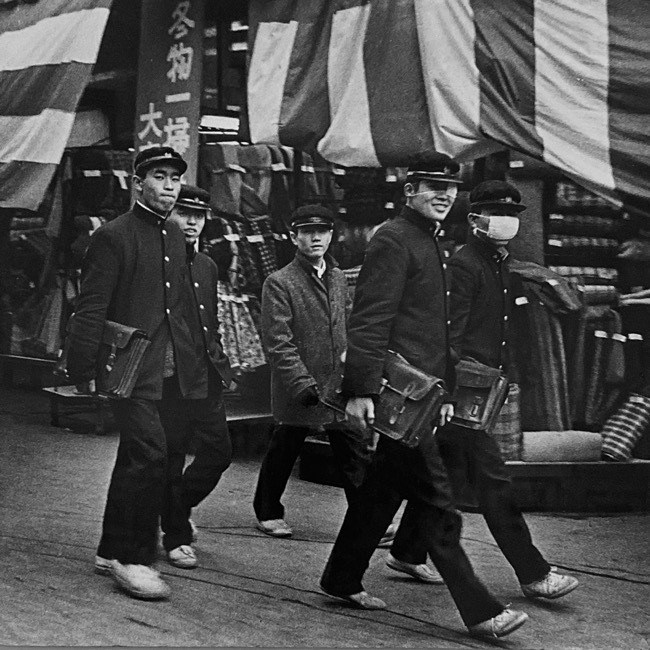


5 December 2020 – Wim Diepraam
I went to the Rijskmuseum in Amsterdam for yet another van der Elsken exhibit. And I got to discover Wim Diepraam as well. Diepraam left a significant legacy of documentary pictures of The Netherlands in the 50’s and later. A country that does not exist anymore. 50 years of nostalgia, 50 years of photography, exploring the deepest layers of society. The glamorous and the ordinary. An excellent photographer of his time with a lot of empathy for his subjects. A discovery.

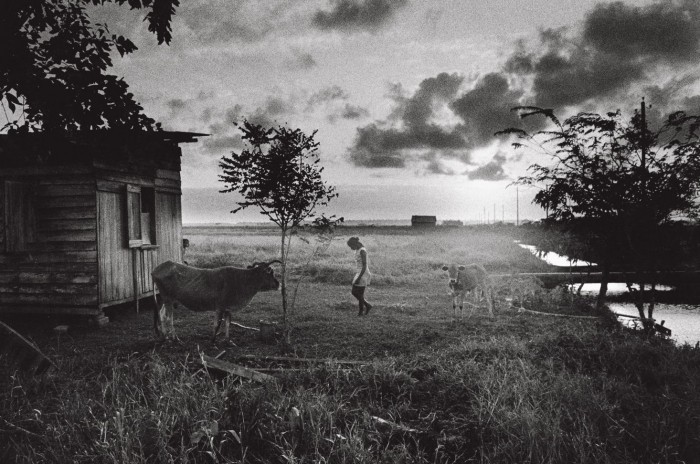


22 November 2020 – Steve McCurry
Steve McCurry continues to enchant me with his pictures. He has remained “in search of elsewhere” the title of his most recent book.



1 November 2020 – Circle of Life
I never knew about the quaint museum of Hilversum, located in the beautiful building that used to be the townhall of the city. A large exhibition of photos by Belgian artist Lieve Blancquaert titled ‘Circle of Life’ makes use of the circular space on three stories to walk us around the circle of life, from birth to death and again. Date of birth, date of marriage, date of death summarise in few dry numbers our lives. Lives of hope, of suffering, of love, of pain, of tears and laughters. Lives of fun and sorrow, births of children and deaths of loved ones. Lieve went throughout the world, from her native Belgium to China, the USA, Ghana, Mexico, India and other places to show us that despite our differences, we all are human and we all go through the same phases of life, living them differently but none the less experiencing life in a universal way across borders, religions, social status. We are welcomed by a beautiful Japanese lady who invites us with a wink in her eye to enter the circle of life…






25 October 2020 – I like to be in America…
In a large exhibit, the museum of Amersfoort shows us what America is today. “This is America Art USA today” gives us a wide vision of the America of immigrants from the South, former slaves, far away from what’s shown everyday on Fox News. From the civil right movement champions now older, to the millennial wrapped in the American flag, from the reenactment of a slave rebellion to fresh immigrants hugging each other, the USA is showing its richness, its openness, its values. Let’s hope that THIS dream will become a reality again, very very soon.











27 October 2020 – 6 Mois… émoi…
It is never too late, one is never too old to discover a real jewel… 6 Mois “le XXI˚ siècle en images”, the 21st century in pictures. A beautiful format, a thick delivery literally full of pictures, a dream for those, like me, nostalgic of the photo reporters of the past, in these times of quickly browsing on the social networks and forgetting in the next second. This magazine is a real and rare pleasure. Browsing and dreaming through the pages in B&W and colours a moment to cherish. Thanks to Hugues for giving me this wonderful tip!

16 October 2020 – The Street Art named Desire
Visit to the newly created street art museum “straatmuseum” in Amsterdam-North in the impressive 7,000 m2 building of the former Nederlandsche Dok en Scheepsbouw Maatschappij (NDSM) shipbuilding company. A perfect location for such a collection of art. The high ceilings make the large paintings look small. with inspiration in comics and photography, but also in history, travels, personal experience, the various collection from all over the world is deployed in a street-like fashion. the visitor walks from street to street among the panels. I was particularly impressed by “Super Nurse” by Fake (Netherlands) and by “My death dream” by Cix (Mexico) inspired by the Mayan culture. ”La deriva” by Morcky (Italy) depicts the end of a love story that occurred in Amsterdam and Helen Proctor (USA) shows us a mountain landscape of Les Alpilles. A very nice experience in this new place, relatively remote and very quiet because of the current restrictions in place.








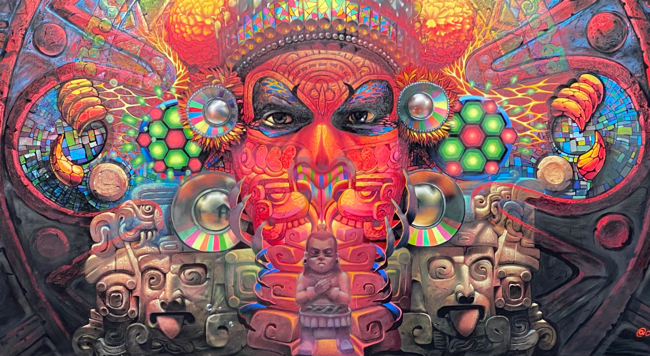
4 October 2020 – Rotterdam at work
A large exhibit about Rotterdam at work at the Nederlands Fotomuseum. Not that the topic is exciting, but some jewels can be found in the large body of pictures presented, covering the whole 20th century. It shows a world that does not exist anymore. The modern Rotterdam harbour is high tech, the containers are moved around with computers, a society of services, of “working from home”. Difficult to imagine that only 60 – 70 years ago, a large population of workers, like this man staring at us with a cigarette pinched between his lips, lived in this busy city.






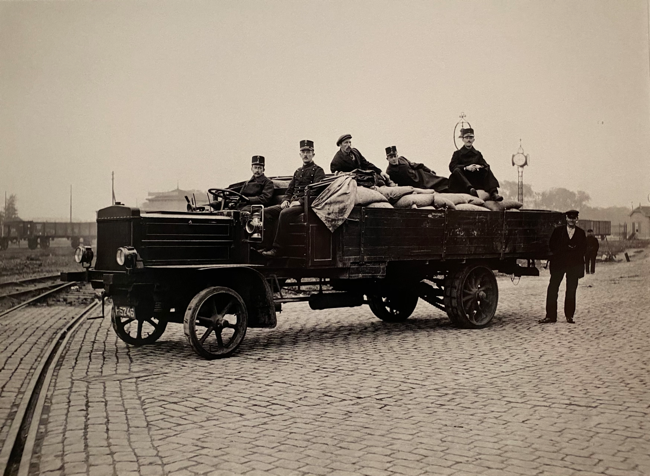



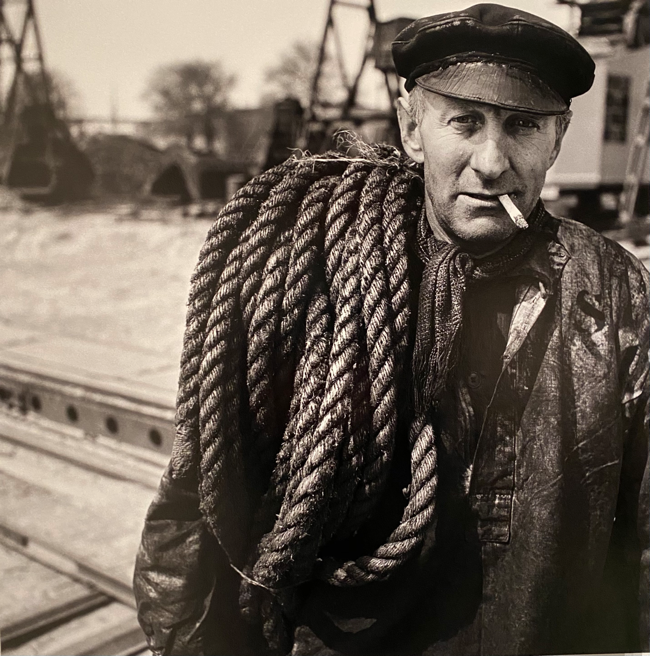
4 October 2020 – Somfy, Somfy not
A disappointing series of photographs at the Somfy Photography award 2020 exhibit, with a theme of “Gimme Shelter”. More on this award here. Difficult to extract appealing pictures in this group of 9 nominations of young photographers from various places in Europe. More than the pictures themselves, it is the project that is judged. I was only sensitive to some of the shots by Jordi Ruiz Cirera (Spain) and Antoinette Nausikaä (NL). “La Espera”, Cirera’s project, explores the waiting, where as in “A river runs through me”, Nausikaä explores the confrontation of nature and civilisation along the river Seine.
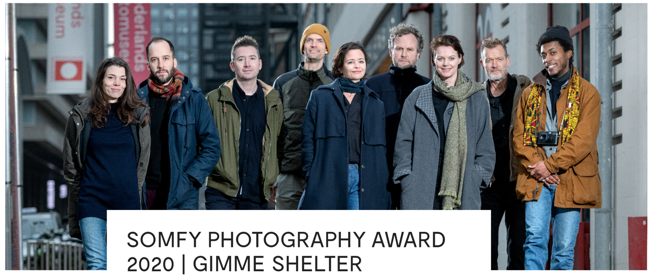



26 September 2020 – 5 years in 100 photos
WWII ended 75 years ago. A commemoration of 5 years of occupation of The Netherlands in Europe and Asia led to the Dutch public selecting 100 photos to represent this painful part of history. The result is a stunning exhibit in black and white and colour at the small Amsterdam Verzetsmuseum (resistance museum). It tells about ordinary people caught in extraordinary situations, violence, destruction, misery, hunger, sorrows and, retrospectively, about the absurdity of it all when, 75 years on, we are all one and we don’t spend hours and days without crossing the path of peaceful German tourists enjoying the fresh air of the North Sea beaches.



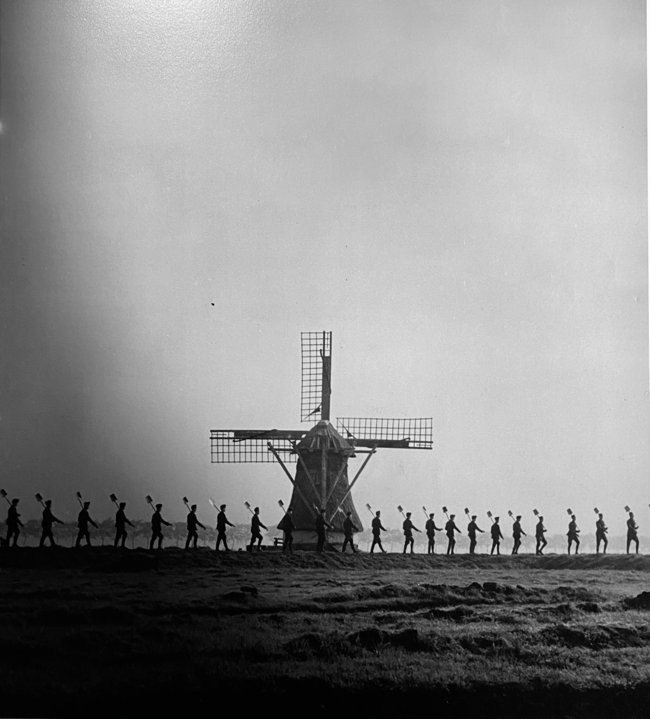


20 September 2020 – Karl Imperator
While visiting the ‘China imagined’ exhibit in Breda, I stumbled upon (and bought in a heartbeat) what looked like a great book by a photographer I didn’t know… Carl de Keyzer. Carl visited the USSR of Gorbachev in 1989 and brought back stunning black and white pictures. The cover of his book and the topic immediately resonated in me… and I drew the parallel with the amazing photos of Henri Cartier-Bresson assembled in his 1973 ‘A propos de l’URSS’ (About Russia) but HCB reported on the URSS of Brezhnev, at the peak of the soviet power. Looking a bit further, I realised that Carl, a Belgian, was a member of Magnum… this explains that… Great photographer. I am looking forward exploring his other projects in Cuba and North Korea.

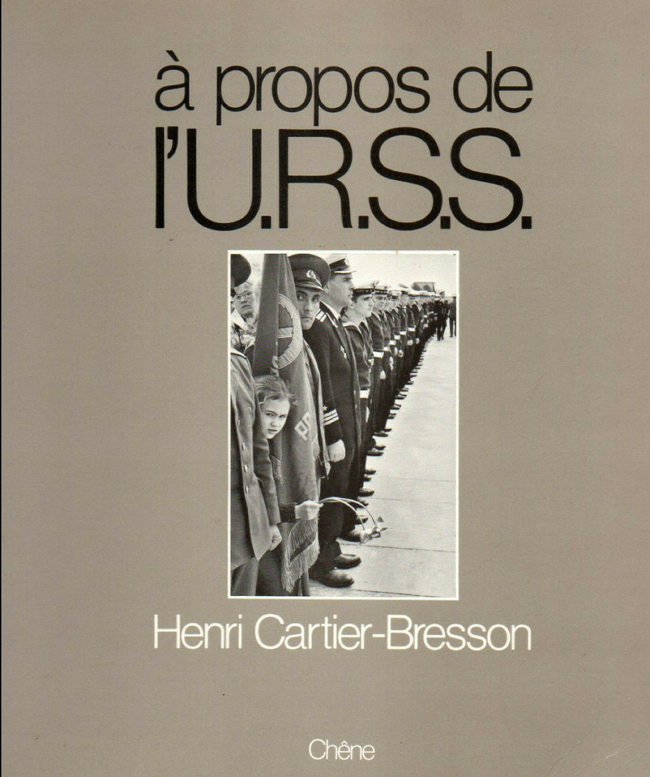


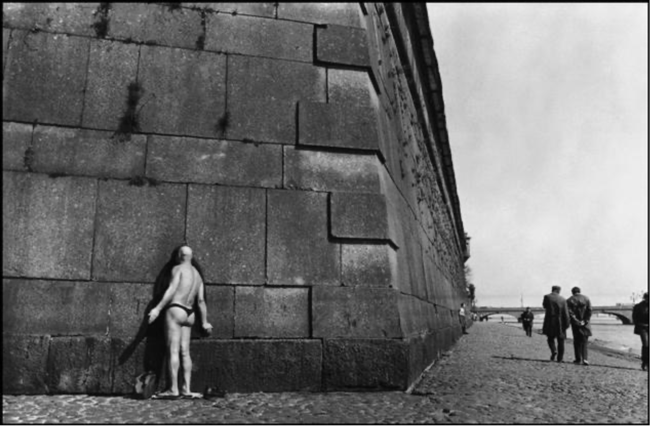
19 September 2020 – the number is still in service at the old KPN building
The old KPN building in the centre of Breda is the perfect location for a broad exhibit of contemporary photography from around the world. Large empty rooms, high ceilings, wide windows letting a beautiful summer light bathe the ample displays. I decided to focus on two of the many photographers displayed at the occasion of this 2020 edition: “Three colours I know in this world” by the young Romanian photographer Kingsõ Bede. Kingsõ did not grow up in Ceausescu’s Romania but was marked by the traumas her parents lived through. Her pictures are haunting us long after we leave the building. Luis Cobelo comes from another part of the world, also marked by continuous traumas: Venezuela. His series Zurumbático shows bizarre situations depicted by the word itself, a mixture of dazed, bemused, stupid, melancholic, gloomy, dull, puzzling and drunk… the feeling we leave with.




